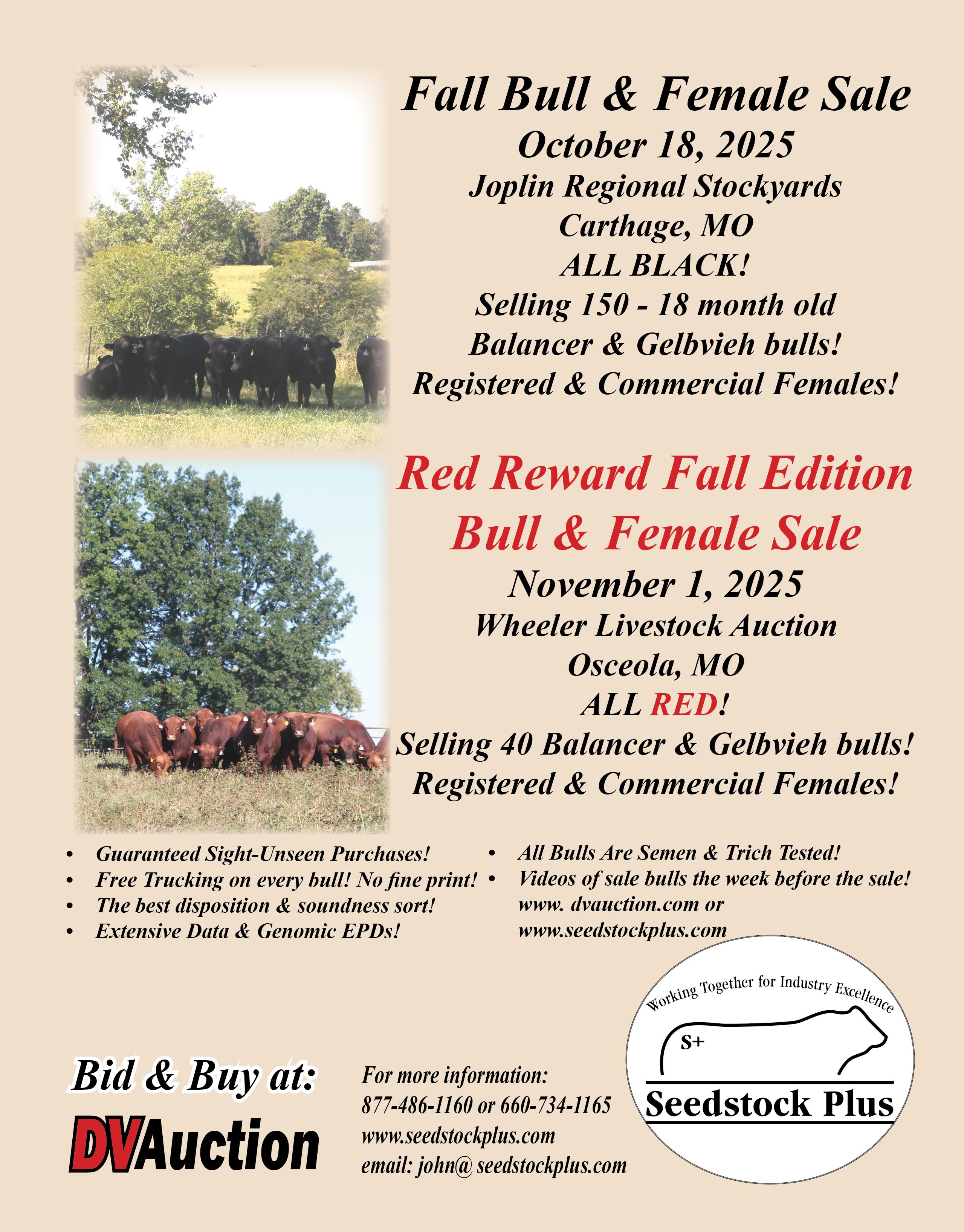BEEF MISSOURI CATTLEMAN

SIMM-PLY DELIVERING DIRECT TO CONSUMER
Vestlane Farms Owners, Ed and Mary Vest are Utilizing Online Sales and Local Markets to Sell Their High-Quality Beef VIRTUAL
Technology for Keeping Animals Where You Want Them
2025


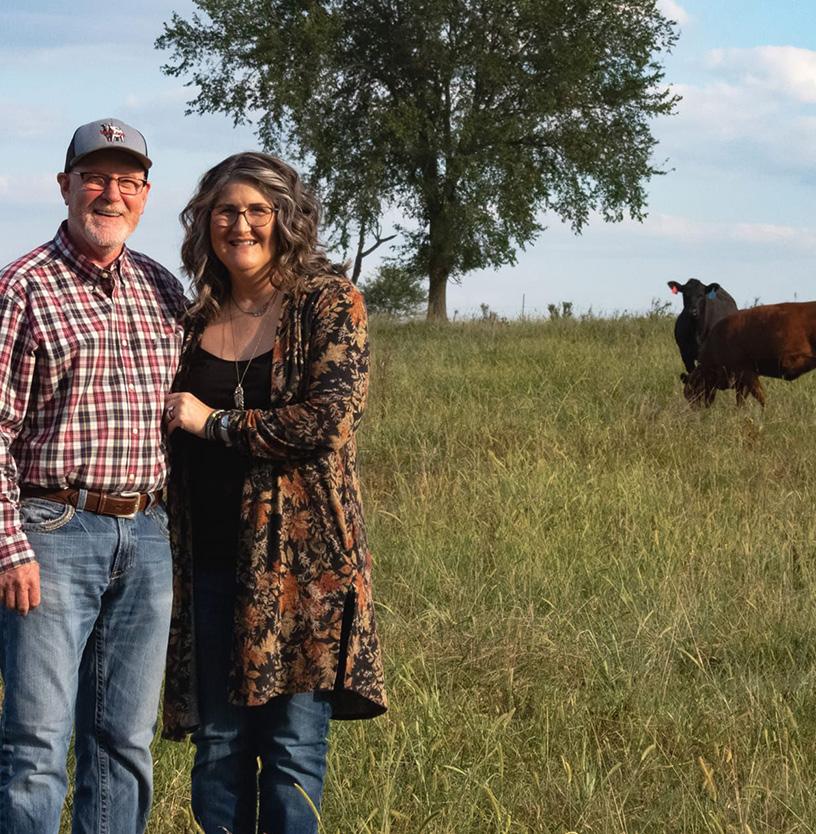




SIMM-PLY DELIVERING DIRECT TO CONSUMER
Vestlane Farms Owners, Ed and Mary Vest are Utilizing Online Sales and Local Markets to Sell Their High-Quality Beef VIRTUAL
Technology for Keeping Animals Where You Want Them
2025





(USPS
Magazine Publishing Office
2306 Bluff Creek Drive, #100, Columbia, MO 65201 Phone: 573-499-9162 • Fax: 573-499-9167
Andy Atzenweiler: Editor/Production/Ad Sales 816-210-7713 • E-mail: mobeef@sbcglobal.net
Missouri Cattlemen’s Association MCA Website: www.mocattle.com
Mike Deering, Executive Vice President - Ext 230 Mike@mocattle.com
Sally Schmidt, Manager of Communications and Marketing – Ext 235 • Sally@mocattle.com
Miranda Zumbehl-Howard, Manager of Membership – Ext. 231 Miranda@mocattle.com
Lisa Stockhorst, Manager of Operations and Strategic Solutions – Ext 234 • Lisa@mocattle.com
Missouri’s CattleWomen http://mocattle.com/missouricattlewomen.aspx
Missouri’s Cattlemen Foundation www.mocattlemenfoundation.org
Jeff Reed, President 903-279-8360 • P.O. Box 35, Williamsville, MO 63967
Anita Vanderwert, President-Elect 573-808-3000 • 620 State Route P, Fayette, MO 65248
Charlie Besher, Vice President 573-866-2846 • RR 5, Box 2402, Patton, MO 63662
Vance Keaton, Treasurer 417-825-4853 • 5863 W. State Hwy 76, Anderson, MO 64831
Deb Thummel, Secretary 660-541-2606 • 12601 Hwy. 46, Sheridan, MO 64486
Region 1: Ethan McNeill, 325 McMurry St. Paris, MO 65275 636-544-9943
Region 2: Blake McDonald, 250 Clonts Rd. Sullivan, MO 63080 • 573-205-7914
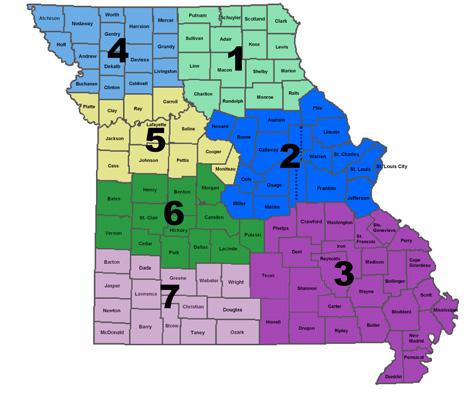
Region 3: Jack Davis, 21855 Siebert Rd. Ste. Genevieve, MO 63670 • 573-330-2928
Region 4: Dale Buhman, 3751 SW Taylor Rd. Clarksdale, MO 64430 • 816-244-9249
Region 5: Alex Haun, 1031 SW 600 Rd Holden, MO 64040 • 816-345-0005
Region 6: Warren Love, 8381 NE Hwy ZZ Osceola, MO 64776 • 417-830-1950

Region 7: Josh Worthington, 401 N. Dade 231 Dadeville, MO 65635 • 417-844-2601
Region 2 - Doug Mertens 573-489-5261 doug@mocattle.com
Region 3 - Kenneth Ball 417-818-6400 kenneth@mocattle.com

Entries are being accepted for the 2025-2026 Profitability Challenge! Steers entered in this year’s contest must be weaned between August 15th and October 15th of this year and delivered to the University South Farm in November. Steers must have a negative BVD-PI test prior to delivery. If you’re interested in competing but need a ride for your steers, please call the MCA office or your Regional Vice President to coordinate with them where your regional drop off location will be. For more information or to enroll your steer(s), visit our website at mocattle.com or fill out the entry information on PAGE 111-112.
Since 1997, Missouri’s Cattlemen Foundation has awarded over 815 scholarships worth a total of $801,500. The scholarship program is open to graduating high school seniors and current college students. Scholarships are awarded at the Annual Convention & Trade Show at Margaritaville Lake Resort. The 2025 MCF Scholarship applications are available online at mocattle.com. Applications will close on October 13th, 2025.
We are just a few short months away from the 58th Annual Missouri Cattle Industry Convention & Trade Show. Cattle producers and industry partners from across the state will gather to discuss policy, learn about new technologies, catch up with old friends and see some new faces along the way. The theme for this year will be “Forging the Future” as we navigate the ever-changing terrain of the beef cattle industry together. The convention is set to take place on January 21-23, 2026. Registration is open and available online at mocattle.com.
Missouri Cattlemen’s Association (MCA) is proud to partner with the Show-Me-Select Replacement Heifer Program again this year. This yearly opportunity is for new MCA members who were not members within the last 12 months and join by September 30th. Qualified members will automatically be enrolled in a drawing for a $2,000 credit to be used at Show-Me-Select sale. Be sure to refer your friends or neighbors to take advantage of this opportunity to qualify for a heifer at a discount and work on your chances to be a 2025 Top Hand! Details can be found on PAGE 122.
We are excited to continue our partnership with Merck Animal Health on the Cartridges for Cash program to raise funds for our association’s junior programs. We want to challenge our affiliates to a competition. The group that collects and turns in the most cartridges will win a $1,000 scholarship to award to the junior member of their choice. Each county should collect the Ralgro wheel and Revalor cartridges used by their members and bring them to either a Board of Director’s meeting each quarter or to the annual convention in January. We will keep a tally of the cartridges collected from each county throughout the year and the winner will be announced at the 2026 Missouri Cattle Industry Convention & Trade Show after all cartridges are counted. To learn more about the Cartridges for Cash program, see PAGE 72.
Kenny & Abby Anderson, Four A Farms, Goodman, MO
Ty & Brenna Anderson, Anderson, MO
Derek Ayler, Garden City, MO
Jerry Ayler, Garden City, MO
Gavin Brittah, Goodman, MO
Mike Chilton, Seneca, Mo
Jim Earl, the Earl Farms, Chillicothe, MO
Nicole Edgren, Oskaloosa, IA
Suzanne Fredricks, Indianola, IA
Cliff Fuemmeler, Glasgow, MO
Sheri Stanton Goetz, Nixa, MO
Marah Greiman, Monroe City, MO
Michael Griffick, Anderson, MO
Cole Hamilton, HT Cattle, Archie, MO
Sarah Hill, Twisted Oaks Ranch, Stover, MO

Tyler & Mark Hogan, Hogan’s Cattle Co, Mt. Vernon, MO
Wade & Jenika Huston, Huston Cattle, Chillicothe, MO
C. Tyler Jones, C.T. Jones Farms, LLC, Dawn, MO
Sherry Jones, CD Jones Land & Cattle, Dawn, MO
Jon Pittman, Chillicothe, MO
Keith Rademacher, Dawn, MO
Talan Reynolds, Drexel, MO
Jennifer Russell, Consumer Oil & Supply, Mount Ayr, IA
Michaela Schnitzer, Lagrange, MO
Shawn Sewell, Sewell Family Farms, Chillicothe, MO
Ellison Umbaugh, Kingston, MO
Nelson Weaver, Weaver Cattle Co, Jerico Springs, MO
See the MCA Membership Form on page 125.

This past week I was able to attend NCBA’s regional fly in with other officers and our Executive Director Mike Deering. We spent a day full of briefings on updates to issues directly affecting our industry. Washington DC is an interesting place right now and we were able to witness this firsthand.
For the first time in recent years, we were able to meet with everyone from the Missouri Delegation. We are known within our state and federal delegations for working with all members of the House and Senate as we understand our issues are bipartisan.
New world screw worm (NWS) continues to be of discussion with continual new developments. While going through the DOGE process the USDA Agricultural Research Service lost all their PhDs who would be looking into new technologies to fight the NWS so urging funding and lifting any sort of hiring freeze to get those positions filled is paramount.
There is a proposed voluntary to the state bill which would increase the legal federal weight of semi-trucks to 91,000 lbs with the addition of a sixth axle. We personally haul quite a few loads of cattle, and I know this would be of great benefit to our members. While Missouri currently has 85,500 lbs limits for livestock and grain this increase would be for federal roadways as well.
Tariffs continue to be a national topic while our NCBA did a great job encouraging the White House to gain access to the Australian market China continues to be abrasive to trade with the US. This market is huge to the beef export market, and we need to push through those barriers.
The Make America Healthy Again (MAHA) report was positive for beef, some citations for research utilized for
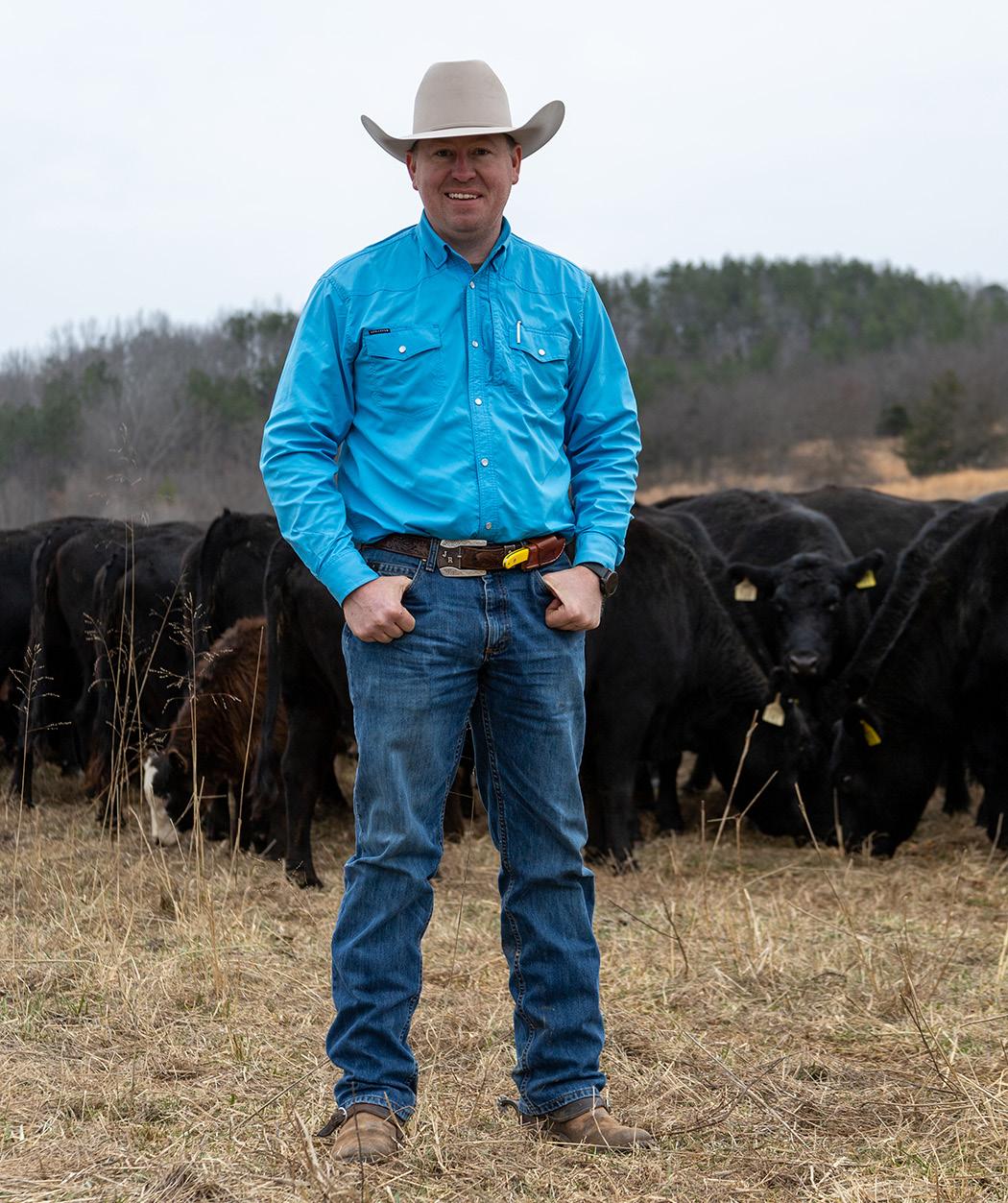
this report was funded by our beef checkoff. This is a perfect example of the positive impact the beef check off directly impacts on our markets.
Congratulations to one of our own Richard Fordyce on being confirmed to the USDA under Secretary for Farm Production and Conservation. He will do a phenomenal job in his new role, and we appreciate his continued dedication to not only this organization but to the industry.
We were able to explore some history just before our long-delayed flight home and pictured below is Mike Deering helping me shade in some immediate family from the Vietnam Wall Memorial.
As always make sure you have a few good stories to tell.

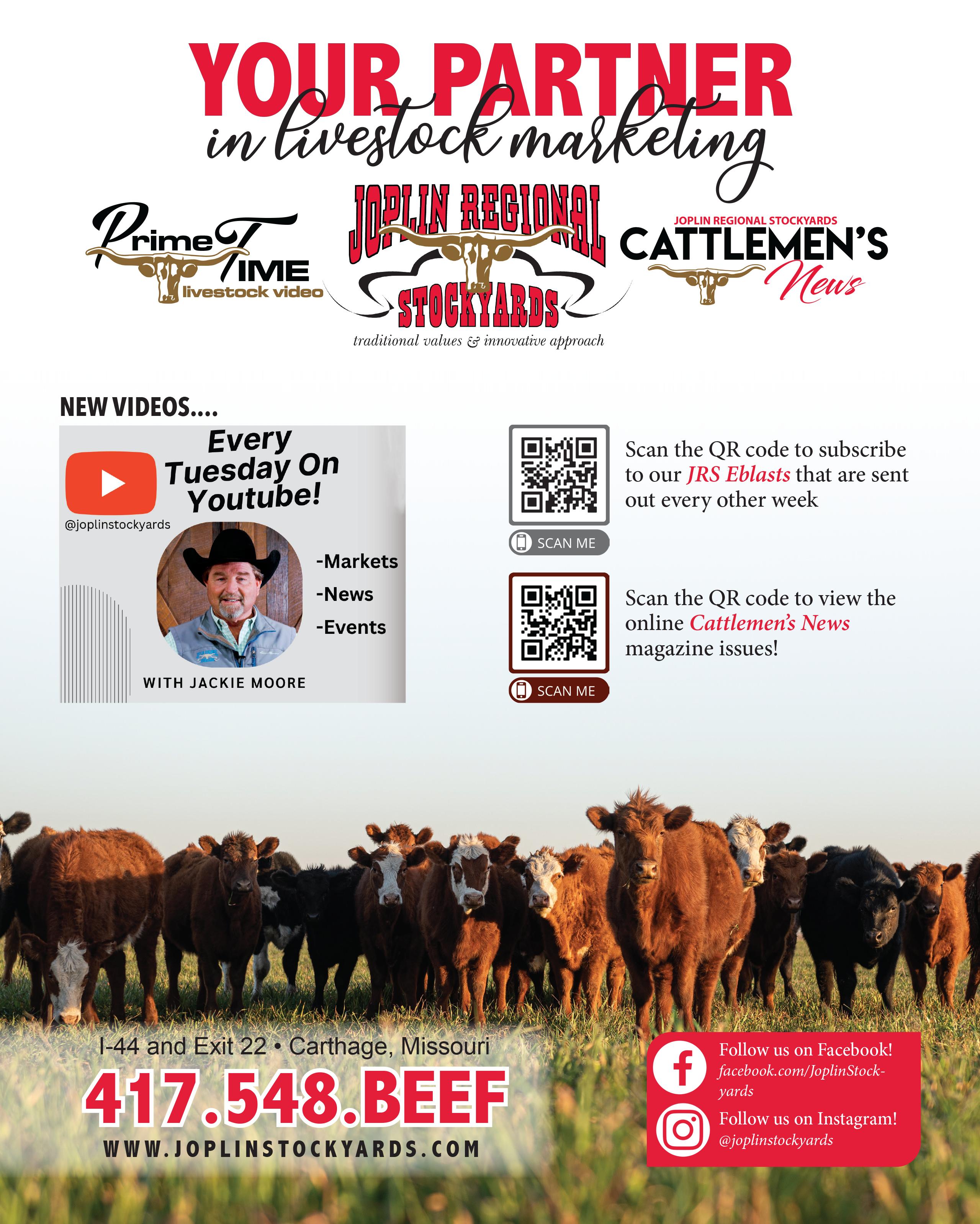


In September, Jason and I had the opportunity to attend the 2025 Stockmanship and Stewardship event at Missouri State University in Springfield. This event was hands down one of the best continuing education opportunities that we have attended in a very long time.
The event had speakers from the Missouri Department of Agriculture and the USDA both of which spoke on foreign animal disease outbreaks and the New World Screwworm. Both speakers were very informative. Additional topics that were discussed were low stress cattle handling (yes, there is such a thing!), carcass
President: Jennifer Poor
417-372-0227 • poorfarmscattle@gmail.com • Pomona
President Elect: Darla Haines
573-473-6013 • darlahaines2003@yahoo.com • Mexico
Vice President: Mandy Weigand 660-909-6781 • weigandranch@hotmail.com • Warrensburg
Secretary: Terry Bettels
660-424-3444 • cbettels55@gmail.com • Butler
Treasurer: Mary Kay Lyle
816-387-1930 • marykaylyle@gmail.com • Savannah
Past President: Marsha Corbin
660-232-1836 • oldtrailsregion@gmail.com • Dover
quality and the value of it, forage management, breeding and culling practices.
While all of the topics at the event were informative and important to producers, the one that stuck with me the most were the presentations on biosecurity. The presenters explained what biosecurity was and why it was important for the farm. The first time I heard about biosecurity I thought “wow, that’s overkill”. But when you get to thinking about all of the diseases that can be transferred from anywhere off the farm by boots, clothing, vehicles, etc. it is eye opening. When you think of the financial impact of one disease that gets transferred to your farm, it can really make you sit up and take notice and ask, “what could I have done differently?”. As of right now, Jason and I do not have a plan, however after attending the Stockmanship and Stewardship event we are working to change that. In all honesty, it does not matter the size of your operation or the detail of your biosecurity plan. What matters is that you have something in place. If you want more information on biosecurity you can go to bqa. beeflearningcenter.org
The two days that we spent at the William H. Darr Agriculture Center at MSU-Springfield were packed full of information and resources. I would be remiss if I did not give a shout out to the folks that put this event together. Neogen, NCBA, BQA-funded in part by the Beef Checkoff, you all put together an amazing event! Thank you! There are a few others that must be mentioned as well. These folks worked their tails off!
Adam McGee of MSU-Springfield Ag department, the ladies at MBIC, and the ladies at MCA. You all are amazing and such a blessing to our industry. I would hate to see the beef industry without any of you in it. Thank you! If you get a chance to go to a Stockmanship and Stewardship event, I highly recommend it.
The recipe that I picked for this month is one that I believe should be in everyone’s cold and flu season arsenal. Beef bone broth is an immune boosting, age defying, gut and joint health super food. This stuff is packed full of all the good stuff… collagen, glycine, glucosamine, calcium, etc! Besides the health benefits, this stuff is super tasty and makes any chili, stew, or soup superb! If you have kids in school, there is a good chance that they have already stayed home from school this year because they caught some sort of bug. I love keeping bone broth on hand for when the kids are sick. This stuff
will help soothe a sore throat, it’s easy on the stomach, and helps get energy in a sick kid.
Making bone broth is not all that difficult. It just takes patience. What some people don’t realize is that you can save your bones in the freezer until you have the required amount needed for a batch of bone broth. Personally, I use most recipes as a guide rather than follow them to a T. In this recipe, I did not strain the veggies out. They get blended into the broth and then I freeze it in a quart freezer bag. I also did not simmer it for the 8-10 hours as called for. I simmered mine for 4 hours. Had I let them go for 8-10 hours, everything would have evaporated until there was nothing but bones left in my pot. One last thing, feel free to play around with the herbs. We had some rosemary and basil in our garden, so that’s what got thrown into the pot. I hope you try bone broth and love it as much as our family does. Enjoy!
Boost the flavor of all your favorite beef dishes. Try this stock, made with roasted beef bones, as a substitute for store-bought beef broth.
Ingredients:
6 to 8 pounds beef bones
2 cups diced yellow onions
1 cup sliced carrot
1/2 cup sliced celery
2 tablespoons tomato paste
1 gallon water
10 black peppercorns
3 to 4 sprigs fresh parsley
2 cloves garlic
2 sprigs fresh thyme
2 bay leaves
1. Preheat oven to 475°F. Place beef Bones, onions, carrots and celery in roasting pan. Roast in 475°F oven 45 minutes or until browned, turning once. Spread tomato paste over bones; roast 15 minutes. Remove from oven; drain fat.
Cook’s Tip: You can find beef bones in your grocers fresh meat department.
2. Place bones and vegetables in large stock pot. Scrape bottom of roasting pan to loosen any brown bits; add to stock pot. Add water; bring to boil. Add peppercorns, parsley, garlic, thyme and bay leaves to stock pot. Simmer stock 8 to 10 hours, occasionally skimming off impurities.
Cook’s Tip: Beef flavor will intensify the longer the stock cooks.
3. Remove stock pot from heat; cool 15 minutes. Strain stock through cheesecloth-lined colander into large bowl.
Cook’s Tip: Beef stock may be used in any recipe that calls for beef broth.
4. Beef stock may be portioned into multiple containers and frozen for up to 6 months.
Alternate Cooking Method:
This recipe can be made in a 6-quart electric pressure cooker.
1. Preheat oven to 475F. Place beef Bones, onions, carrot and celery in roasting pan. Roast in 475F oven 45 minutes or until browned, turning once. Spread tomato paste over bones; roast 15 minutes. Remove from oven; drain fat.
2. Combine beef Bones, roasted vegetables, 2 quarts water, peppercorns, parsley, garlic, thyme and bay leaves in pressure cooker. Close and lock pressure cooker lid. Use meat, stew or high-pressure setting on pressure cooker; program 90 minutes on pressure cooker timer. Use quick-release feature to release pressure; carefully remove lid.
(This recipe variation was tested in an electric pressure cooker at high altitude. Cooking at an altitude of less than 3000 feet may require slightly less cooking time. Refer to the manufacturer’s instructions.)
I don’t always make it to church on Sunday. There have been times I have angrily cursed His name. I don’t stand on street corners sharing scripture with strangers. I don’t condemn other religions even though I am unapologetically Christian. I believe, but I don’t wear my religion on my sleeve. I am slow to cast stones because I am a sinner and make mistakes daily. I do some dumb things. Some I regret and some I’d do again without much hesitation.
All this is to say that our faith is at the core of who we are as a society, nation and even as an association. It is at the center of our identity, beliefs, actions and values shaping how we perceive ourselves and the world around us. It is what dictates if we have an association focused on what truly matters for our industry or one filled with egos and personal agendas. It is what dictates decorum in debate and respect for our fellow man. This core faith acts as a driving force, influencing our choices and providing a stable foundation in good and rough times.
We are living in a toxic culture where politics have replaced our religion or faith. A culture where some cannot disagree without hate. A culture where some legitimize violence as a response to ideological differences. It is wrong on any side of the political spectrum and needs to be vehemently condemned by all of us. The only way to change a toxic culture is through people. We must keep our faith – whatever that looks like in your life – at the center of who we are. We

must treat everyone with dignity even if we disagree. I contend that disagreement is a good thing and often leads to better outcomes. I firmly believe we heal our divides by talking to people we disagree with. With that said, we have to be able to recognize our own fallibility.
I say what I think. I have been known to be pointed, passionate and persistent when I debate issues. I don’t back down, but we all have places where we can grow and learn. I don’t have all the truth. None of us do. We can get closer to the truth if we are willing to listen and learn from one another. We can get closer to the right answer if we aren’t afraid to disagree with dignity.
I believe with every fiber of my being that we can change the toxic culture. Faith is the answer. My final sentence is a question I am leaving you with. Answer it and reflect how you handle tough issues whether it’s at a cattlemen’s meeting, a committee hearing in Jefferson City or on social media.
Do I spend more time listening to Facebook reels, TikTok or political pundits than I do listening to the powerful message of the gospel (God’s rescue plan) or whatever serves as the center of your individual faith?

by Warren Love, Region Six Vice-President
All day I’ve faced a barren waste
Without the taste of water, cool water
Old Dan and I with throats burned dry
And souls that cry for water
Cool, clear water
The nights are cool and I’m a fool
Each star’s a pool of water, cool water
And with the dawn I’ll wake and yawn
And carry on to water
Cool, clear water
Can you just hear Marty Robbins smooth voice singing this plea for water for him and his mule Old Dan? Without water all living things cease to exist. Water availability in Missouri compared to Western States is rather plentiful and many times taken for granted. In most western states water rights and usage is highly regulated by ordinances and laws.
However the past couple of years our Missouri Legislature began addressing the need to preserve and protect Missouri’s water supply. In early August
I attended the signing of Senate Bill 82 by Governor Mike Kehoe at the Missouri Soybean headquarters in Jefferson City. This piece of Legislation was sponsored by State Senator Jamie Burger from District 27 located in Southeast Missouri.
A short summary of the bill reads; “The act creates provisions relating to water preservation in the state. Under the act, it shall be unlawful for any person to export water resources outside the state unless the person holds a water exportation permit issued by the Department of Natural Resources, subject to certain exemptions as described in the act. It shall be unlawful for any person to withdraw water for exportation by use of a pipeline facility, unless the withdrawal and ultimate end use of the water by a
Region 1 VP - Ethan McNeill
Region 2 VP - Blake McDonald
Region 3 VP - Jack Davis

person who withdraws water for exportation shall annually report the water use volumes, withdrawal rates, and end use to the Department in a manner and on timelines determined by the Department. This provision has a severability clause.”
This Water Preservation Act was supported by Agriculture Associations thru out Missouri, including our own MCA. I write this report to remind our membership that legislation is important to the cattle industry. Private property rights such as zoning, eminent domain, ordinances, and regulations effect how and where Missouri farmers and ranchers can do business. A new committee has been formed and will have done met before this article is published. It is the Property, Lands & Environment Council. The purpose is to address such issues that may arise from time to time and bring them before MCA members at our annual convention.
So in closing please share this with neighbors and your fellow cattlemen. Encourage them to become members of MCA and other ag organizations, so we can have a seat at the table on legislation that effect agriculture, the #1 industry in Missouri.
Riding for the Brand, Warren D. Love
Region 6 Vice-President
Region 5 VP - Alex Haun
Region 6 VP - Warren Love
Region 7 VP - Josh Worthington
Region 4 VP - Dale Buhman At-Large Rep. - Jarrod Simpson



My last article talked about the significant amount of rain most of us were dealing with and the challenges that they brought to us, as well as planning for diversity in regard to warm season grasses. Well since then the tables have turned around for some of us, as those that were getting rain turned off dry, those that were dry are getting a lot of rain! No matter what part of this great state you live in one thing is for certain, you can guarantee there will always be weather challenges and that can change every two weeks or even sooner in some cases.
So, to say the least we are never bored with trying to plan for the next challenge we may be facing in the next phases of our operations! Whether it be fertilizing for fall stockpile forages, second hay crops, or forage testing to see what and how much supplements we might need for this winter’s feeding. These are just a few of the things we need to be planning or thinking about now in order to try and produce the much-needed beef for tomorrow.
If you will allow me to pose a question in that regard!?
Are we beef producers? Dairy /Milk producers? Or are we actually grass/forage producers who in return get a product to sell such as beef or milk to sell to consumers?
If we can have a mind set that we are and do our planning around forage management, soil health management and develop our farming strategies according to building better soil health and better forages for our livestock to consume and managing that forage with putting the right amount of livestock on that given forage, and in return we will produce a much better and more sustainable product (beef, milk) to sell and provide to our customers.

I may have made this sound easy and can be done in given season, but in reality, it isn’t, it’s a multi-season/ year strategy and process depending on what the basis is that we start with. However, do not get overwhelmed in the process of changing this mind set to a new one of being a grass/forage rancher and not a cattle/dairy rancher. There is an abundance of resources out there to help navigate to this mind set. The “platter” of options and opportunities is growing every day for us! You may just not know what all of them are and that they are available.
If you would like an opportunity to explore these and other opportunities or get a hands on look at you’re grass/forage operation contact and MCA grazing coordinator in your area or region. We are here to help!
For help with management of native grass, or for help identifying plants or weeds (feel free to text pictures) contact Missouri Cattleman’s Association Grazing Coordinators:
Region 2 • NE MO
Doug Mertens
Doug@mocattle.com
Region 3 • SE MO
Kenneth Ball
Kenneth@mocattle.com 573-489-5261 417-818-6400
Many may already know who we are, but I wanted to take an opportunity to introduce ourselves and what we do. We are the Missouri Cattlemen’s Association Grazing Coordinators.
The Missouri Cattlemen’s Association entered into a grant agreement with the Natural Resource Conservation Service to provide boots on the ground assistance to NRCS personnel, USDA offices, NRCS programs and to assist landowners in all facets on their operations. (See attached map).
The state of Missouri was divided into four regions, Northeast, Northwest, Southeast and Southwest. All containing several counties within each region. We have a coordinator dedicated to each region and assist with workshops, grazing schools, vendor booths, farm visits, and educational opportunities.
Each one of our coordinators has vast experience from chemical application for row crops and pastures to forage implementation and science to grazing management to certified grazing plans and more. There is no challenge too big or small that one of us or collaboratively can’t help you tackle.
We each put together several articles in MCA’s Beef Cattleman monthly magazine. If you are not a MCA member and want to receive this magazine , please reach out to one of us to get you signed up to receive this important and informative magazine. You will become knowledgeable on what’s going on within MCA and its grassroots efforts supporting Missouri’s agricultural producers!
What better way to support Missouri producers than through a grassroots organization like the Missouri Cattlemen’s Association positioning coordinators across the state to help producers become more profitable and conservation minded by utilizing practical, commonsense practices to produce the best, safest products we can for consumers.
Please feel free to reach out to any of us for assistance on your farm.
Kenneth Ball
Region 3 Coordinator
State Grazing Coordinator Supervisor
Missouri Cattlemen’s Association

Hello, I’m Doug Mertens, Regional Grazing Coordinator for Region 2 in Northeast Missouri. I grew up in Taos, Missouri on a small farm where we raised cattle and feeder pigs. I moved to Columbia in the fall of 1982 to attend Mizzou after completing Basic Training and AIT with Missouri National Guard. I graduated from the University of Missouri in the spring of 1986 with a degree in General Agriculture. Since graduation, my career has kept me in agriculture, working on a farm, managing a fertilizer plant and as a sales representative for both agricultural seeds and chemicals.
Over the past 16 months as a grazing coordinator, I have attended and presented at Cattlemen’s meetings, field days and met one on one with producers to discuss opportunities to utilize programs offered through USDA-NRCS to improve the grazing on their farms.
One of my hobbies is telling the story of Agriculture to elementary students, primarily in urban areas of the state, I have spoken to students in Missouri, Kansas and Illinois, one of the most memorable was in Chicago, Illinois.
Personally, I have two grown children, Zach and Emily, and a Boykin Spaniel named Cooper. My son Zach is an Assistant Swim Coach at the University of Minnesota, in Minneapolis and daughter Emily is involved in theater, where she performs, choreographs and scenic designs across the greater Milwaukee area.
Doug Mertens
Region 2 Grazing Coordinator
Missouri Cattlemen’s Association

“Hey Diddle Diddle, The cat and the fiddle, The cow jumped over the moon; The little dog laughed To see such sport, And the dish ran away with the spoon”
Now, you may be wondering why I chose to begin my introduction with a nursery rhyme. The answer? Because I was over the moon when I accepted the opportunity to join the Missouri Cattlemen’s Association!
Hi, my name is Sally Schmidt, and I’m thrilled to serve as the new Manager of Communications and Marketing.
In 2020, I graduated from Carrollton High School. From there, I attended the University of Missouri-Columbia for the next five years. I earned my bachelor’s and master’s degree in Agricultural Communications. I also earned my minor in Agribusiness and certificate in

Floral Design. I kept busy during my time in school by being involved in a variety of clubs and organizations: Sigma Alpha, Mizzou Floral Club, Agricultural Communicators of Tomorrow, etc.
My dad is a farmer, my mom is a retired elementary school principal, and my sister—our resident smarty pants—is studying chemical engineering at Georgia Tech. Then the one that runs the house is our dog, Cookie. (See pictured below). We recently moved to Glasgow, Missouri, to be closer to the farm. Our family runs a diversified operation that includes row crops, agricultural construction and pecans. My earliest memories on the farm include riding in the combine or tractor with dad, just being over the moon! This is where my love of agriculture stemmed from. I was lucky enough to turn that passion into a career—and so far, it hasn’t felt like work for a single day.
I’m absolutely thrilled to be a part of the MCA team and to work alongside you. Please don’t hesitate to reach out—I’m always happy to connect!


by Ally Crick
Stockmanship & Stewardship was held September 5th and 6th at Missouri State University’s Darr College of Agriculture in Springfield, MO. The event brought together more than 180 cattle producers, students, and industry professionals for two days of education, demonstrations, and networking. Co-hosted by the Missouri Beef Industry Council, Missouri State University, Missouri Cattlemen’s Association, and National Cattlemen’s Beef Association (NCBA), the program was a resounding success.
The event was built on the principles of the Beef Quality Assurance (BQA) program, underscoring the commitment of U.S. cattle producers to animal care, consumer trust, and continuous improvement across the beef industry.
The program opened Friday morning with Secure Beef Supply (SBS) training led by Dr. Julia Herman, Dr. Sarah Reinkenmeyer, Dr. Craig Payne, and Dr. Tonya Collop. This critical session prepared producers for potential foreign animal disease outbreaks, emphasizing biosecurity planning, continuity of business measures, and coordination with animal health officials.
From there, the agenda featured a wide-ranging lineup of sessions:
• Dr. Linda Lackman, USDA: Update on the potential threat of New World Screwworm in the U.S., including signs to watch for and prevention strategies.
• Jack Ward, American Hereford Association: The economic benefits of heterosis and how crossbreeding can enhance herd performance.
• Dr. Daniel Clark, Certified Angus Beef®: Beef fabrication demonstration illustrating how BQA principles directly translate to carcass quality, value, and consumer satisfaction.

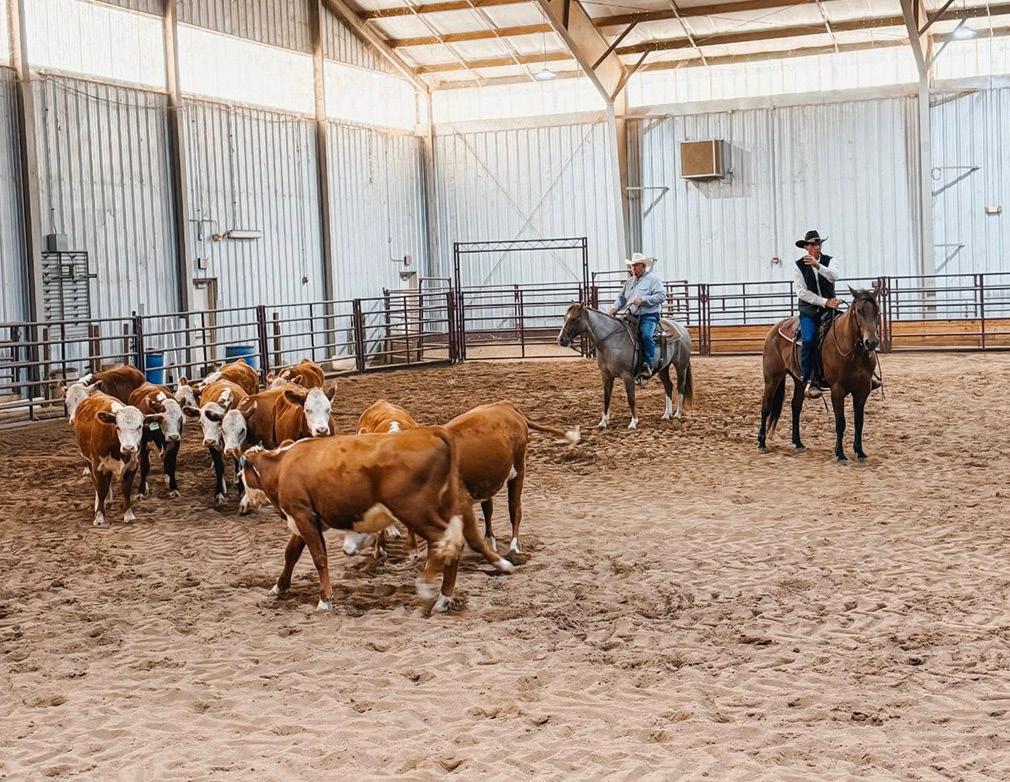
• Colin Woodall, NCBA CEO: Keynote on producer leadership, policy engagement, and consumer trust in shaping the future of the beef industry.
• Jordan Thomas, University of Missouri: Breeding strategies for improved reproductive success.
• Dr. Dave Lalman, Oklahoma State University, with Curtis Bryant, Neogen: Matching cow size to stocking potential as a key factor in breeding and culling decisions.
• Dr. Eric Bailey, University of Missouri: Maximizing nutrients through native forage management.
• Dr. Ron Gill, Texas A&M Extension, and Curt Pate, livestock handling professional: Low-stress cattle handling demonstration horseback and on foot, reflecting Missouri’s common working conditions.
• Jason Duggin, University of Georgia, with the Sargent Michael McClure, Missouri State Highway Patrol: Pre-trip livestock hauling inspections, accident response, and preventing foreign materials in meat.
• Dr. Julia Herman, NCBA Beef Cattle Veterinarian, with Dr. Craig Payne, University of Missouri Extension: Proper medication handling, injection site precautions, implant safety, and preventing violative residues.
Hospitality and sponsorship played a vital role in making the Springfield event memorable and impactful.
Friday Dinner: Sponsored by Certified Angus Beef’s Raised with Respect™ program, featuring premium Certified Angus Beef® filets.
Saturday Lunch: Sponsored and provided by the Southwest County Cattlemen’s Association.
Event Sponsors: Neogen, Ameren Missouri, FCS Financial, Missouri Electric Cooperatives, Kodiak Trailers, Superior Steel Sales, The Midwest Cattlemen, and Witt Print Shop.
These contributions ensured that attendees enjoyed quality meals, seamless demonstrations, and the overall hospitality that made the program stand out.
Tradeshow Vendors
Participants also had access to a robust tradeshow featuring: Neogen, Missouri Dairy, Natural Resources Conservation Services, Worthington Angus, Hills Feed and Seed, ShowMe Genetics, Joplin Regional Stockyards, Biozyme/Vitaferm, STgenetics, The Midwest Cattlemen, Vitalix, United States Department of Agriculture, Missouri Department of Agriculture, MFA Inc., and Lincoln University. States and Province Represented: Colorado, Georgia, Iowa, Illinois, Kansas, Louisiana, Missouri, Texas, Wisconsin, Wyoming, and Saskatchewan, Canada.
Segments of the Industry Represented: Cow/Calf, Allied Industry, Backgrounder/Stocker, Dairy, Veterinarian, Government, Student, Calf Raiser, Feedyard, Seedstock, Extension.
With more than 180 registered participants, the Springfield event exceeded expectations. Attendees represented a wide cross-section of the beef industry— from seasoned ranchers to students preparing to enter the field.
The program struck a balance between researchbased learning and practical application, ensuring that every participant walked away with skills they could implement immediately. Networking among producers, students, and industry representatives added another layer of value, strengthening connections within Missouri’s beef community and beyond.
“From a leadership perspective, Stockmanship & Stewardship demonstrated the value of bringing producers together for hands-on education and industry insight,” said Tammy Bartholomew, Missouri Beef Industry Council secretary. “The success of this event reflects the dedication of Missouri’s cattle producers to advancing best practices, strengthening consumer trust, and ensuring the long-term sustainability of the beef industry.”
Grounded in BQA principles and paired with cuttingedge science, Stockmanship & Stewardship equipped producers to enhance animal welfare, improve efficiency, and meet consumer expectations. As challenges continue to evolve, BQA remains a cornerstone of producer education. The 2025 Springfield event celebrated the strength of the cattle community and provided attendees with the knowledge, tools, and confidence needed to thrive in the years ahead.


American Foods Group’s New Harvest Facility is Built With Employees, Community, Producers, and the Environment In Mind
Source: AFG
WARREN COUNTY, Missouri, September 15 –
America’s Heartland Packing, the newest beef harvest facility of American Foods Group (AFG), officially opened its doors on April 10, 2025. The state-of-the-art facility was designed from the ground up with people and purpose at its core, focusing on employee wellbeing, community engagement, producer partnerships and environmental stewardship. With an $800 million capital investment, America’s Heartland Packing is poised to set a new benchmark for the U.S. beef industry, strengthening the food supply chain and advancing sustainable growth for years to come.
After evaluating more than 3,000 counties across the continental U.S., AFG selected Warren County, Missouri as the ideal home for its newest facility — thanks to the state’s top-ranking cattle inventory, strong producer base and business-friendly climate. “This new beef processing facility represents not only an investment in our state’s strong agricultural industry, but also in our workforce, economy, and future,” said Governor Mike Kehoe. “We congratulate America’s Heartland Packing on this milestone and look forward to the opportunities this facility will create for Missourians.”
“At America’s Heartland Packing, our employees are at the heart of everything we do,” said John Kelly, vice president of America’s Heartland Packing. “From natural light-filled cafeterias and ergonomic workstations
to climate-controlled barns and production floors, every detail is designed to create a safe, welcoming and rewarding workplace. This isn’t just a job — it’s a place where people can grow their careers, support their families and be part of something bigger.”
The facility’s advanced automation and robotics are designed not to replace people, but to enhance their safety and success. These innovations reduce the need for repetitive or strenuous tasks while improving overall throughput, product quality and employee satisfaction. Additional features include an on-site employment center, comprehensive training and safety programs, and an employee meat store.
Producers of all sizes — from family ranchers to largescale operators — benefit from a facility built around transparency, trust and speed. America’s Heartland Packing offers:
• 2,400-head-per-day capacity with a mixed cattle supply
• A network of country cattle buyers that bid and buy your cattle daily
• On-site cattle buyers and instant payments
• Grade-yield live buying or hanging weight options
• Pull-through access for gooseneck trailers
• Modern cattle barn with climate control and flythwarting fans
• Streamlined receiving systems to minimize truck congestion
“We’re proud to offer a producer-focused experience that puts honesty, efficiency and respect first,” said David Jagodzinske, president and COO of American

Foods Group. “America’s Heartland Packing is more than a facility — it’s a promise to our partners that we’re here for the long haul.”
America’s Heartland Packing is setting a new standard for sustainability in the beef industry. It is the first and only beef harvest facility in the world to earn LEED Green Building Certification, reflecting a commitment to environmentally responsible construction, energy efficiency and operational performance.
The facility is a zero-exposure building, meaning no untreated air, water or waste leaves the site. Inside, a cutting-edge wastewater treatment system minimizes environmental impact and protects the local watershed. AFG also invested in advanced rendering technology that removes odors, ensuring clean air for the facility and its neighbors.
AFG’s investment in Warren County goes far beyond job creation. With over 700 employees already working at the site and plans to grow, the facility has become a cornerstone of local economic development. AFG is prioritizing local recruiting, sourcing materials from Missouri suppliers and offering talent development and career advancements to help team members build longterm careers close to home.
The company is also deeply committed to supporting the communities where its employees live and work. In a show of long-term partnership with Wright City, AFG recently celebrated the grand opening of the America’s Heartland Packing Stadium at Wright City High School, a symbol of the company’s investment in youth, education and community spirit.



Additional contributions to local charities, schools, and civic programs underscore AFG’s belief in being more than a business, but also a neighbor and civic partner. As a committed partner, AFG partnered with the local water district to build a state-of-the-art wastewater treatment plant that also serves the surrounding community
American Foods Group is a family-owned, U.S.based beef processing company based in Green Bay, Wisconsin, with locations throughout the Midwest. They are committed to long-term growth in the cattle business and to the partners they serve.
Forrest Lucas, husband, father, grandfather and the pioneering self-made businessman, philanthropist, and founder of Lucas Oil passed away peacefully on August 23, 2025 at the age of 83.
Born in 1942 in Jackson County, Indiana, Forrest’s journey from a modest upbringing to transformative business leader is a testament to his vision, determination, commitment to honesty and integrity in all his dealings. He learned the value of hard work and self-reliance from an early age when he took on caring for his family’s fourth generation farm. The lesson Forrest taught those around him was “it doesn’t cost anything to be nice.” Always ingraining this lasting lesson to his family and employees.
In 1964, he purchased his first semi-truck and hauled freight across the country. Soon he invested in a fleet of trucks and began experimenting with oils, lubricants and additives to find the most cost effective solutions to cover more miles and avoid mechanical failures. Driven by resourcefulness and an inventive mind, he founded Lucas Oil alongside his wife Charlotte in 1989. The company specialized in oils and fuel treatments for the truck industry but soon grew to include almost any machine with an engine or moving part. Under his leadership, Lucas Oil grew into one of America’s most respected and loved brands, known for its groundbreaking advancements in automotive high performance lubricants and additives.
While he invested in numerous successful businesses throughout his lifetime, the Lucas Ranch is where Forrest truly enjoyed spending his time. His love for agriculture, the ranch, and the beauty of the land is what those who knew him best remember as his source of peace and tranquility.


Pictured above is Jason McCann, past MCA President, presenting the 2010 Cattleman of the Year Award to Forrest and Charolotte Lucas during the MCA Convention.
Forrest was a generous philanthropist, supporting educational initiatives, agricultural conservation, and community development projects across the country. Over the years, he was recognized with numerous honors for his business achievements, philanthropic work and contributions to motorsports and agriculture. These included two Sagamore of the Wabash awards, the NHRA Lifetime Achievement Award, induction into the Missouri Sports Hall of Fame, the Bob Russo Heritage Award from the Motorsports Hall of Fame America, the Earl Baltes Award from the National Dirt Late Model Hall of Fame, and the Veritas Award from American Agri-Women.
Forrest is survived by: his wife, Charlotte; his children, Dwayne Lucas, Mike (Genny) Lucas, Kathy (Gary) Bowling and Morgan (Katie) Lucas; his many grandchildren and great-grandchildren and his sisters Carol (Larry) Cummins, Connie Jo Schooler and Brenda Harris. Forrest was preceded in death by his parents, Raymond and Marie Lucas; children, Greg Lucas and Tammy Vanlaningham and step-son Bobby Lucas.
Forrest Lucas’ legacy lives on through the company he built, the lives he touched, and the enduring impact of his visionary leadership on American industry.
The Lucas Family will hold a private invite only celebration of life and visitation to remember their beloved husband, father, and grandfather. In Forrest’s memory, memorial contributions in his name may be made to the Ascension St. Vincent Foundation to support Lucas Family Brain & Spine Hospital at Ascension St. Vincent. Donations can be made online at give.stvincent.org/brainandspine, or sent to the Ascension St. Vincent Foundation, 250 West 96th Street, Suite 470, Indianapolis, IN 46260.
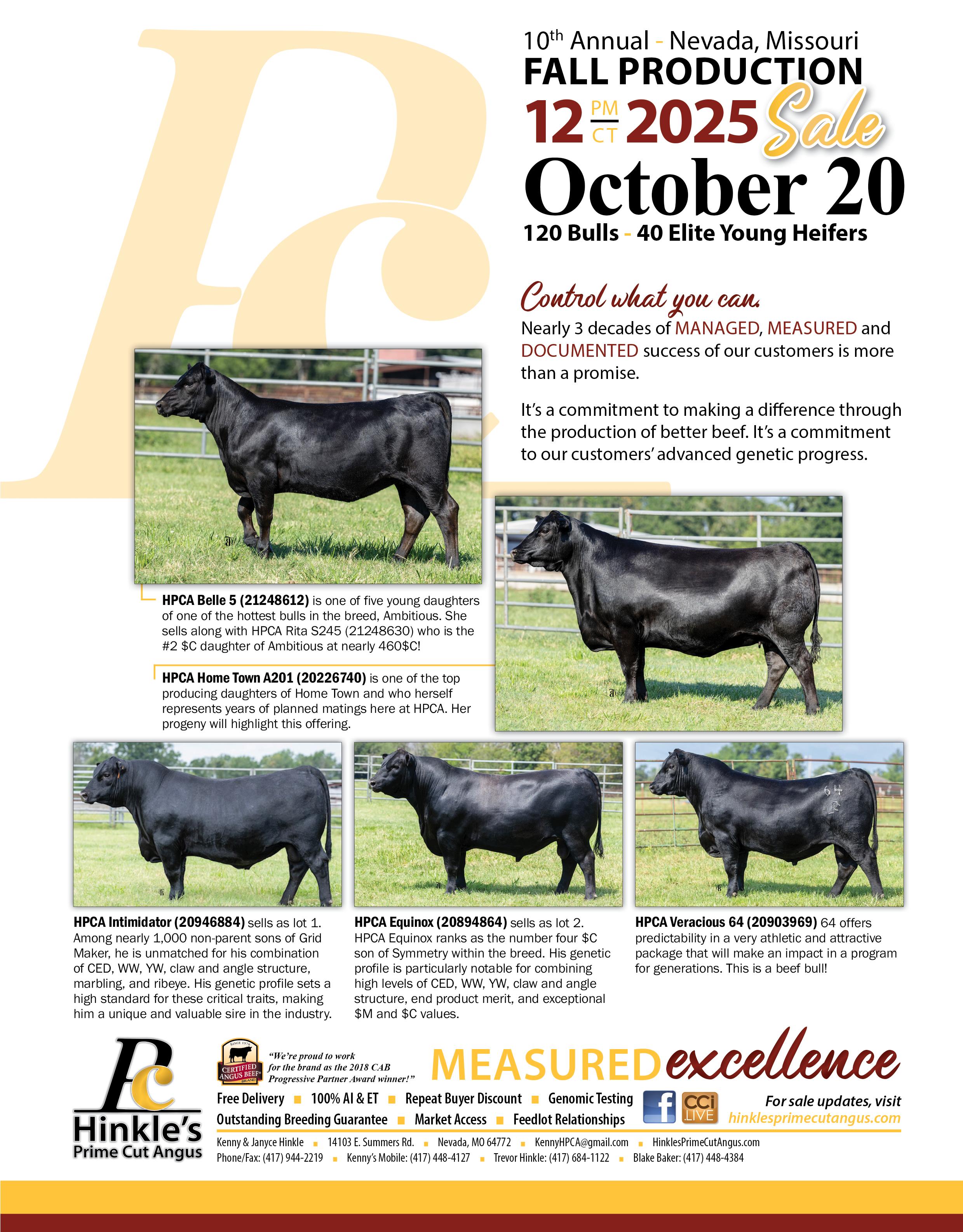

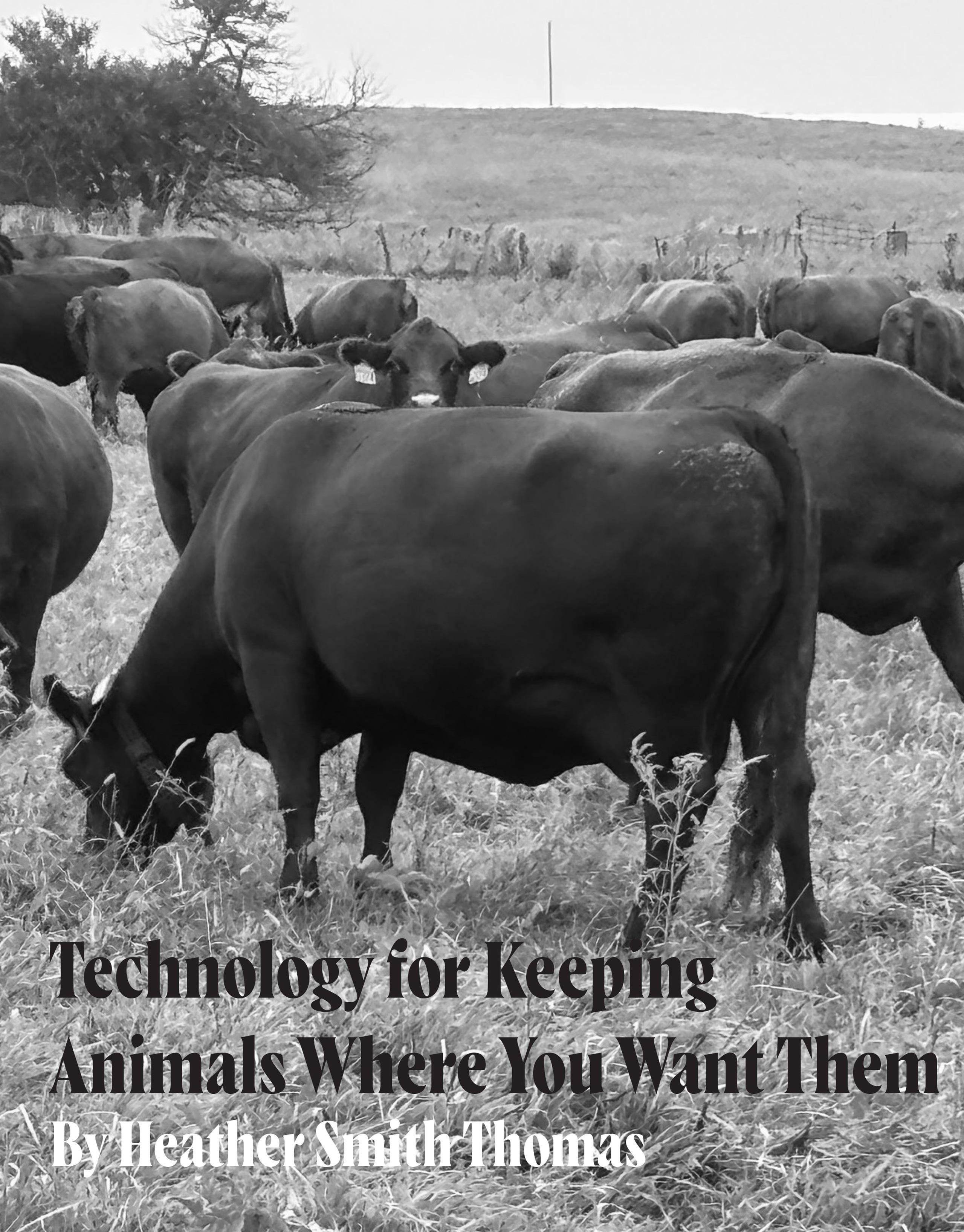
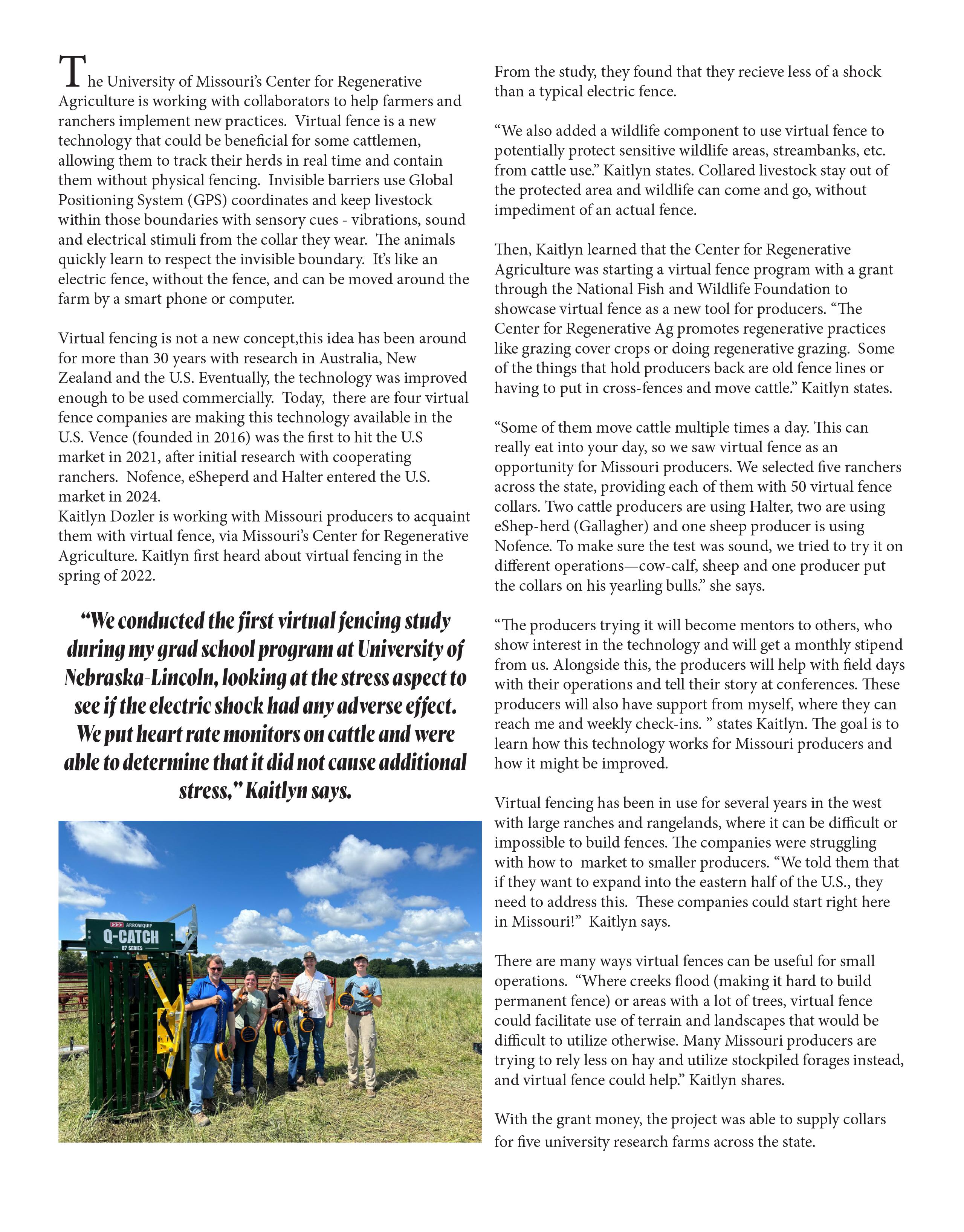
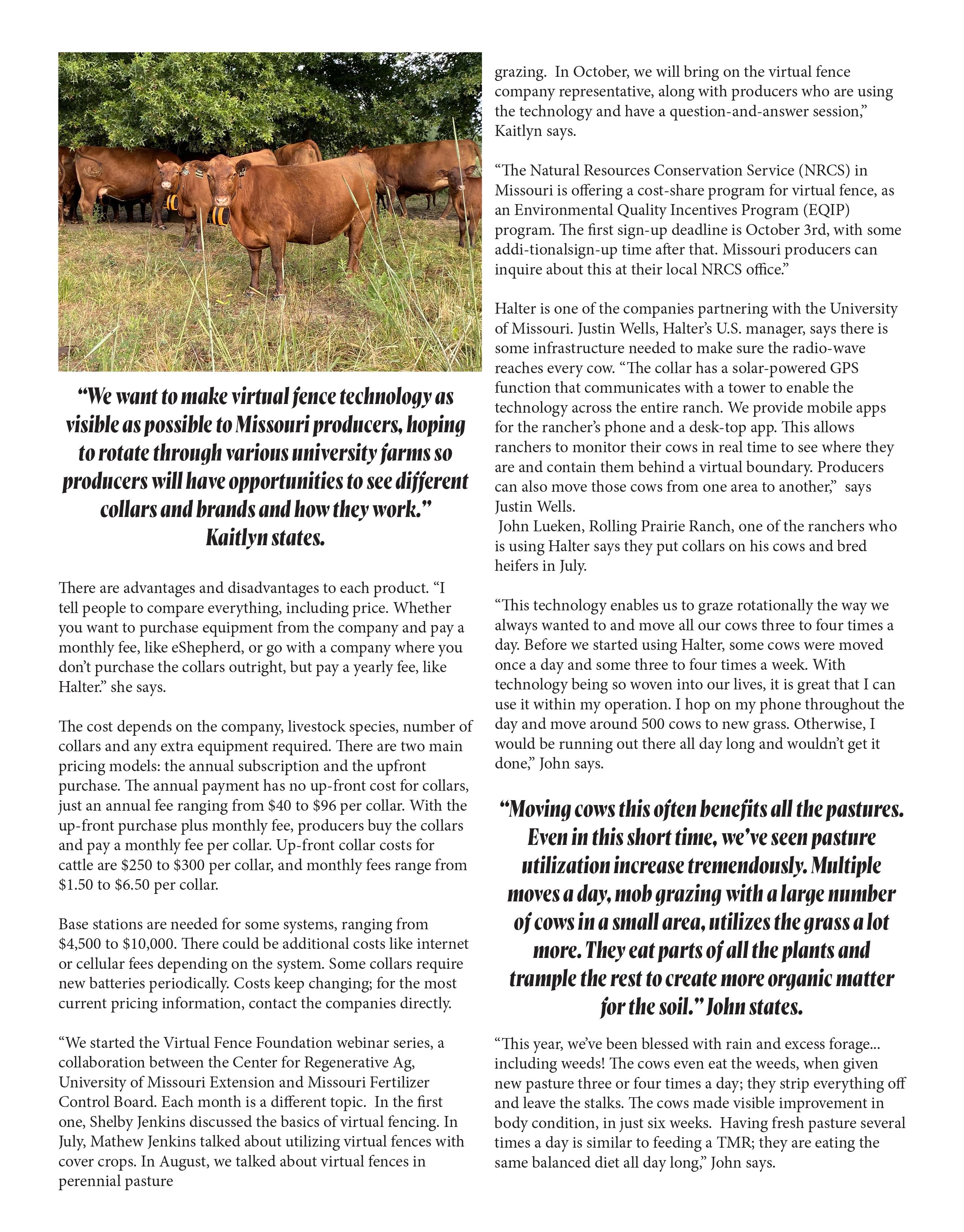
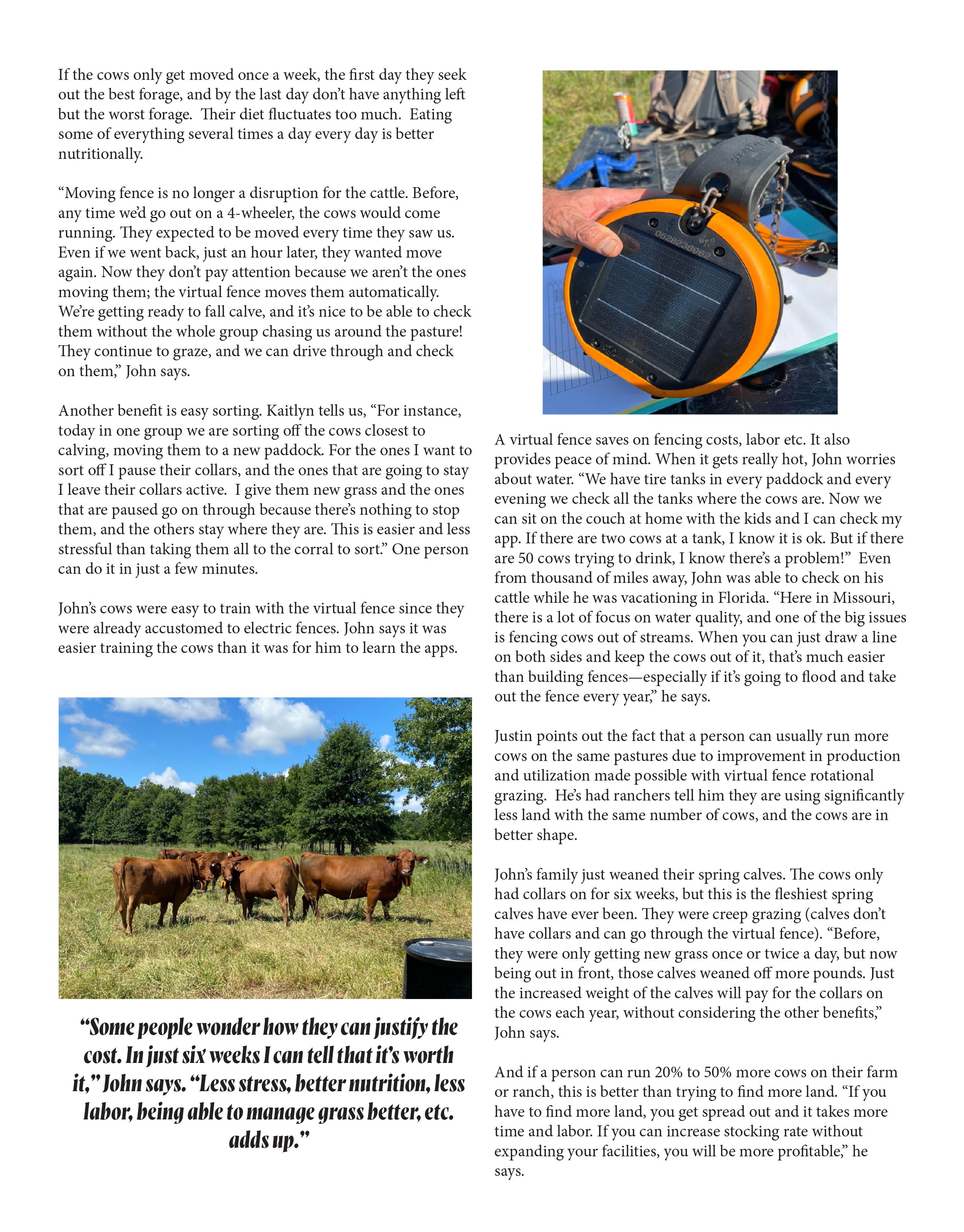
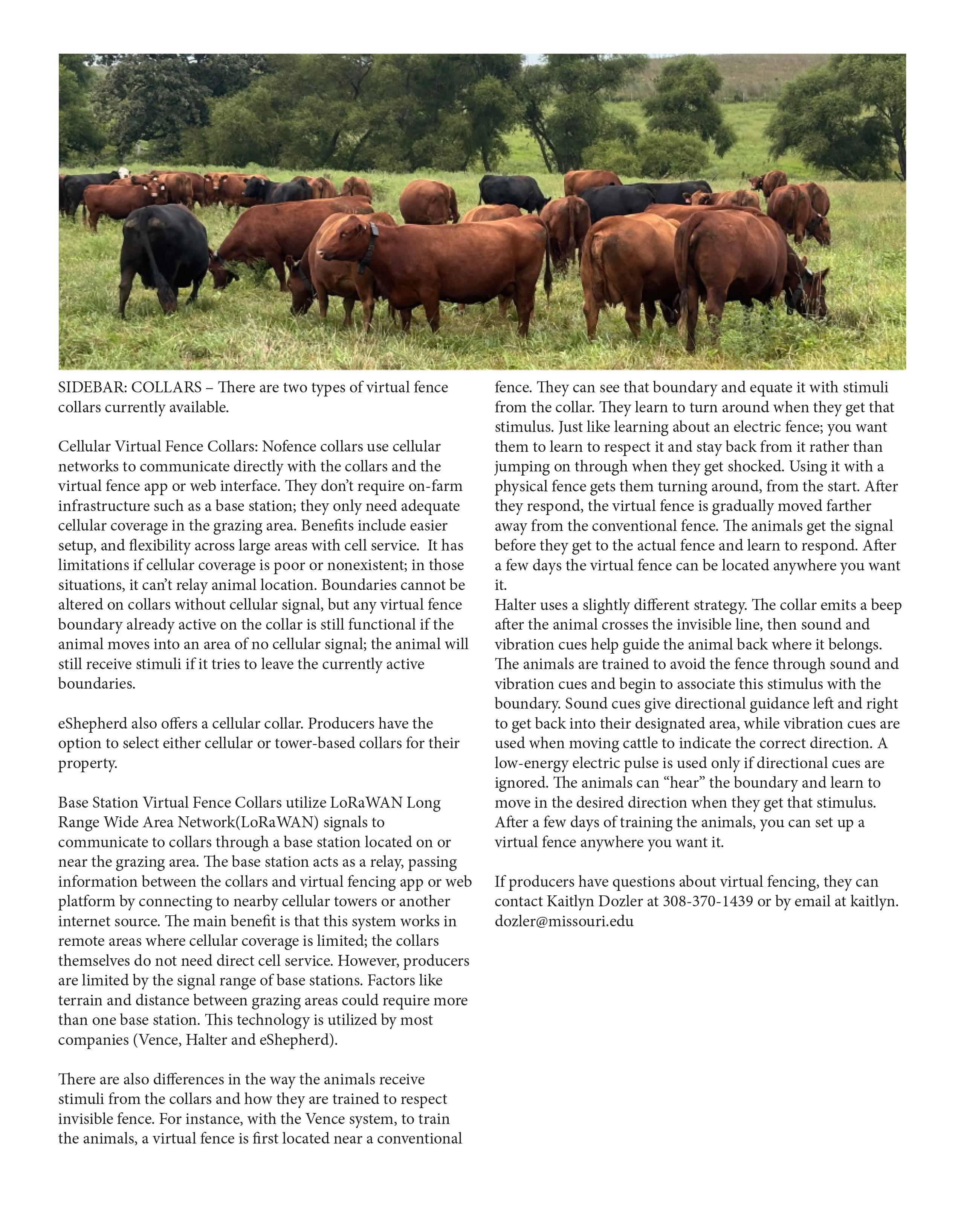


The American Royal’s annual livestock shows have been the nation’s premier agricultural showcase for generations. They offer an exciting platform for competition, learning and community building within the world of animal husbandry.
Fall Livestock Show
October 10-26, 2025
Meats Judging Contests October 19-22, 2025
Junior Premium Livestock Auction October 18, 2025
4-H/FFA Livestock Judging Contest October 19, 2025

Collegiate Livestock Judging Contest October 20, 2025
Crops Judging Contest November 17-18, 2025
Spring Livestock Show March 27-29, 2026
See the American Royal website for more details on these events: https://americanroyal.com/livestock/

Breeding Gilt Exhibitors
• All Purebred gilts will need to submit DNA by August 15th.
• Purebred Gilts must be born January 1st 2025 or younger.
• Purebred Gilts will be divided into classes by weight, with a weight limit of 350 lbs.
• Crossbred Breeding Gilts will be divided into Light and Dark divisions.
• Please see more detailed information in the breeding gilt section
Supreme Champion Bull Show
• Sunday October 26th, at the completion of the Simmental and Hereford Shows
• Each Breed Champion Bull is eligible to participate in the 2nd ever Supreme Champion Bull of the American Royal
• Coveted Bronze Crown perpetual Trophy will be awarded
• More info in supreme bull section of premium book
Supreme Champion Open Female Show
• Sunday October 26th, at the completion of the Simmental and Hereford Shows
• Each Breed Champion Female is eligible to participate in the 2nd ever Supreme Champion Open Female of the American Royal
• Coveted Bronze Crown perpetual Trophy will be awarded
• More info in supreme Open Female section of premium book
Market Exhibitors
(Steers, Lambs, Goats, Barrows)
• All market exhibitors are required to complete a Quality Assurance program. Examples include: Youth for the Quality Care of Animals, Quality Counts, Beef Quality Assurance, Pork Quality Assurance, or other programs approved by the American Royal. The program name and certificate number will be required on all market entry forms. Exhibitors failing to submit this information will have entries returned as incomplete and will be charged the $10 re-processing fee.
Exhibitor Age Requirements
• All junior exhibitors showing a market animal, steer momma, wether dam ewe, or wether dam doe must be no younger than 7 years old and no older than 21 years old as of January 1st, 2025.
• Junior breeding heifer and purebred and crossbred breeding gilt exhibitors will follow their respective junior breed association age requirements.
Market Animal Weigh back
• Market goats will receive a 5 lb. tolerance from declared weight.
• Market lambs will receive a 7 lb. tolerance from declared weight.
• Market barrows and breeding gilts will receive a 15 lb. tolerance from declared weight.
Steers
• Federal 840 ID tags are the official identification for steers. NO EXCEPTIONS.
Steer Divisions
• Steers will not be shown by breeds. There is no minimum or maximum weight limit for market steers. All steers will be weighed and divided by weight into classes at the discretion of the superintendent and the American Royal Livestock Manager. There will be no reweighs. All weights will be submitted online. There will be three weight divisions and 5 classes in each division. The three division’s champion and reserve champions will compete for Grand Champion and Reserve Grand Champion.
• The Grand and Reserve Champion Market Steer, divisions champions, reserve division champions as well as all first place steers MUST sell in the auction. Final sale order will be determined by the steer superintendent and Livestock Manager.
Swine
• Federal 840 ID tags will be used as the official identification for swine. Ear notches will only be utilized as a secondary form of identification.

• Market barrows weight range will be from minimum 230 lb. to 300 lb. maximum
• Purebred/Crossbred divisions will be broken into classes based on weight at the discretion of the superintendent.
• Breeding Gilt Show will kick off with TeamPurebred breeds (Chester, Hereford/Tamworth, Poland, Spot) on Friday October 17th. It will take place 30 min following the conclusion of the Barrow Show but no earlier than 4:00 p.m.
Market Lambs – Wether Dam Ewes
• Whiteface Influenced Division – please see more detailed information in the specie section.
Junior Premium Livestock Auction
• Market Lambs- Division Champions and Reserve Division Champions must sell in the Junior Premium Livestock Auction. Please see more detailed information under each species.
• Market Goats – All Division and Reserve Division Champions must sell in the Junior Premium Livestock Auction. Please see more detailed information under each species.
• All market animal exhibitors that qualify for the Junior Premium Livestock Auction will be required to complete an Animal Husbandry Form, which can be found at www.americanroyal.com. All medications, vaccinations, injections, medical treatments and any foreign substances administered, in any form or
manner, from the ownership deadline (August 15, 2025) through Junior Premium Livestock Auction must be recorded. The American Royal strongly advises all exhibitors to maintain this form from time of ownership and bring with them to the American Royal to ensure accuracy in record keeping.
• The Junior Premium Livestock Auction is a terminal auction.
Showmanship (Based on age of exhibitor as of January 1, 2025)
• The age divisions for Lamb, Goat, Barrow, Steer Momma, & Steer exhibitors are:
• Junior — 7-12 years old
• Intermediate — 13-16 years old
• Senior — 17 years & older
• The following species/breeds will be allowed to show in a Peewee division (6 years & younger):
• Purebred Breeding Gilt Exhibitors
• Crossbred Breeding Gilt Exhibitors
• Mini Hereford Junior Exhibitors
• Limousin Junior Heifer Exhibitors
• Red Angus Junior Heifer Exhibitors
• Maine-Anjou Junior Heifer Exhibitors
• Salers Junior Heifer Exhibitors
See Rules and Regulations for more detailed information on these changes/reminders.
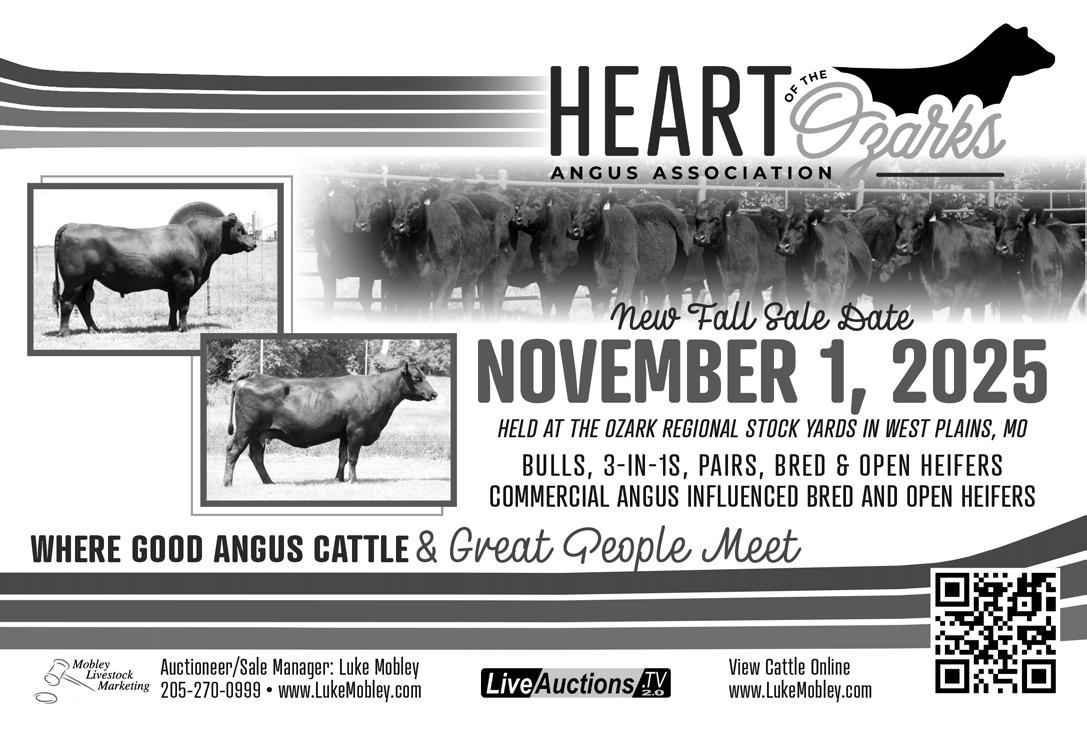

Thursday, October 9
11:00 a.m.
Move-In: Watusi, American Aberdeen, Belted Galloway, Black Hereford, Braunvieh, Gelbvieh, Limousin, Miniature Hereford, Salers, & ABGA
Friday, October 10
9:00 a.m. Watusi must be on grounds
10:00 a.m.
Move-In: American Aberdeen, Belted Galloway, Black Hereford, Braunvieh, Gelbvieh, Limousin, Miniature Herefords, & Salers
4:00 p.m. ABGA check in Saturday, October 11
8:00 a.m. Move-In: American Aberdeen, Belted Galloway, Black Hereford, Braunvieh, Gelbvieh, Limousin, Miniature Herefords, & Salers
9:00 a.m. Watusi Open Show – East Side Hale Arena
1:00 p.m. Black Hereford Sale – Wagstaff
1:00 p.m. ABGA Open Show – East Side Hale Arena
3:00 p.m. Junior Heifer Showmanship – West Side Hale Arena
Sunday, October 12
8:00 a.m. Belted Galloway Junior/Open Show-East Side Hale Arena
8:00 a.m. American Aberdeen Junior/Open ShowWest Side Hale Arena
11:00 a.m. Miniature Hereford Junior Show/Open Show – East Side Hale Arena
1:00 p.m. Black Hereford Junior Show/Open Show –West Side Hale Arena
2:00 p.m. ABGA Junior Show – East Side Hale Arena
Monday October 13
8:00 a.m. Limousin Junior/Open Show – West Side Hale Arena -
8:00 a.m. Salers Junior/Open Show–East Side Hale Arena
1:00 p.m. Gelbvieh Junior/Open Show – West Side Hale Arena
1:00 p.m. Braunvieh Junior/Open Show – East Side Hale Arena
Tuesday October 14
12:00 p.m. Sheep & Goat (VIP Trailer Arrival)
2:00 p.m. Sheep & Goat (Arrival till 10:00 p.m.)
5:00 p.m. Swine (VIP Trailer arrival)
Wednesday, October 15
7:00 a.m. Market lambs and Wether Dam Ewes Move-In, Vet Check & Showmanship check in (All Market Lambs and Wether Dam Ewes must be on the grounds by 4:00 p.m.)
7:00 a.m. Market Goats/Breeding Does Move-In, Vet Check, & Showmanship check in (All Market Goats/Breeding Does must be on the grounds by 4:00 p.m.)
8:00 a.m. Market Barrow and Breeding Gilt Move-In and Vet Check – Governors (All swine must be on the grounds by 10:00 p.m.)
4:00 p.m. Market Steer, Steer Momma (VIP Trailer Arrival)
6:00 p.m. Lamb/Goat Exhibitor meeting (Hale Arena Bleachers)
6:00 p.m. Market Steers, Steer Momma Move-In –Lower Ex
7:00 p.m. Sullivan’s Supply Lamb and Goat Fitting Contest Hale
8:00 p.m. Lamb/Goat Weight On-line Submission (Weight submitted by 8:00 p.m.) -Upper Ex
Thursday, October 16
8:00 a.m. Job Interview & Ag Sales Contest – Blue Ribbon Room
8:00 a.m. Market Barrow Check-In followed by Breeding Gilt Check-In (All submissions due by 1:00 p.m.) – Governors
10:00 a.m. (All Market Steers, and Steer Mommas must be on the grounds by 10:00 a.m.)
10:00 a.m. Market Steer Check-In (Weight submission due by noon) Steer Momma check in after Market Steers – Lower Ex
10:00 a.m. Lamb Showmanship – Hale Arena
12:00 p.m. Sullivan’s Supply Cattle Clinic
1:00 p.m. Goat Showmanship – Hale Arena
3:00 p.m. Steer Showmanship – Hale Arena
4:00 p.m. Sheep White Face Cross Check In –Upper Ex
5:00 p.m. Swine Showmanship– Governors Friday, October 17
8:00 a.m. Market Barrow Show (Pedigreed followed by Crossbred) – Governors
9:00 a.m. Market Lamb Show – Hale Arena
10:00 a.m. Market Goat Show – Hale Arena
11:00 a.m. Market Steer Show – Hale Arena
4:00 p.m. Breeding Gilt Show (Pedigreed followed by Crossbred) – Governors
***Team Purebred Breeds – Chester, Hereford/Tamworth, Poland, Spot*** ***Show will start 30 min following the conclusion of the barrow show but not before 4:00 p.m.
Saturday, October 18
7:30 a.m. Breeding Gilt Show Resumes - (NSR Breeds followed by Crossbred) – Governors
*If gilt show is not completed by 5:00 p.m. there will be a break for Royal Elite Drive*
8:00 a.m. Wether Dam Ewe Lamb Show – Hale Arena
8:30 a.m. Wether Dam Doe Goat Show – Hale Arena
9:00 a.m. Steer Momma Show - Hale Arena
5:00 p.m. Royal Elite Drive – Hale Arena
7:00 p.m. Junior Premium Livestock Auction – Hale Arena
*Everything must be off the grounds by 7:00 a.m. Sunday morning! *
Sunday, October 19
8:00 a.m. 4-H/FFA Livestock Judging Contest –Hale Arena
6:00 p.m. 4-H/FFA Livestock Judging Awards –Wagstaff
Monday, October 20
8:00 a.m. Collegiate Livestock Judging Contest –Hale Arena
7:00 p.m. Collegiate Livestock Judging Banquet –Hale Arena
Tuesday, October 21
2:00 p.m. Move-In: Angus, Charolais, Chianina, Hereford, Maine-Anjou, Red Angus, Shorthorn, & Simmental
Wednesday, October 22
7:00 a.m. Move-In: Angus, Charolais, Chianina, Hereford, Maine-Anjou, Shorthorn, Red Angus & Simmental
8:00 a.m. 4-H Meats Judging Banquet – Governors/ Ambassadors
1:00 p.m. Cattle Demonstration Sponsored by Weaver Livestock – Hale Arena
3:00 p.m. Junior Heifer Showmanship – East Side Hale Arena
Thursday, October 23
9:00 a.m. Shorthorn Junior Show – East Side Hale Arena
9:00 a.m. Maine-Anjou Junior Show – West Side Hale Arena
2:00 p.m. Red Angus Junior/Open Show – East Side Hale Arena
2:00 p.m. Chianina Junior/Open Show– West Side Hale Arena
Friday, October 24
8:00 a.m. Charolais Royal Breeders Bull Classic –East Side Hale Arena
8:00 a.m. Maine-Anjou Open Show – West Side Hale Arena
9:30 a.m. Shorthorn Open Show – East Side Hale Arena
1:00 p.m. Angus Junior Heifer Show – East Side Hale Arena
1:30 p.m. Royal Collection Charolais Sale – Wagstaff Sale Center
2:00 p.m. Simmental Junior Heifer Show – West Side Hale Arena
Saturday, October 25
8:00 a.m. Angus ROV Show – West Side Hale Arena
8:00 a.m. Charolais Junior Heifer Show followed by National Roll of Excellence Charolais Show – East Side Hale Arena
1:00 p.m. Young Breeders Conference International Team Fitting followed by International Showmanship – East Side Hale Arena
2:00 p.m. Hereford Junior Heifer Show – West Side Hale Arena
6:30 p.m. Ladies of the Royal: International Edition – Wagstaff Sale Center
Sunday, October 26
8:00 a.m. National Hereford Show – West Side Hale Arena
8:00 a.m. National SimGenetics Show – East Side Hale Arena
*30 minutes following completion of Hereford and Simmental Shows
Supreme Champion Jr. Heifer Drive
Supreme Champion Open Female Drive
Supreme Champion Bull Drive

Following a three-month recess, it was great to catch up with each other at the September Southwest Cattlemen’s meeting. Our chapter’s Vice President, Dr. Adam McGee, opened the meeting with the Pledge of Allegiance, then welcomed the officers from Ash Grove FFA, who joined us to offer their thanks for our support. The group gave a nice presentation, with each of them speaking about their role in FFA, and the then stayed to enjoy a delicious meal prepared and served by Glen Johnson, owner of Cowboy Catering.
The Keynote Speakers were Cody Smith and Brian Fieser, with ADM Animal Nutrition. The topic, Positioning Fall Supplements, was covered in depth. Brian spoke about the various supplements available in tubs, how they’re produced, their specific purpose, expected consumption, and placement options for each.
There are some busy months ahead! The Congressman Burlison’s 2025 Ag Tour is October 6, and several members have expressed an interest in attending the tour. The SWC Grill Team and membership volunteers will once again be serving ribeye sandwiches at the Southwest Research Extension and Education Center
Service age bulls, bred cows, cow/calf pairs, show prospect heifers available. 417-652-3425 417-839-7205 www.oryscircle7.com

Annual Field Day on Sept. 18, as well as the Apple Butter Makin’ Days in Mt. Vernon. If you haven’t attended an ABMD 3-day event before, you’re missing a real treat! We are also looking forward to accepting 2025 Collegiate NCBA Stipend and Jim McCann NCBA Stipend applications, as well as reviewing and awarding MCA Eldon Cole and MCA SWMCA Scholarships.
Please join us for our next meeting on Tuesday, October 7 at 7:00 pm, held at the MU Southwest Research Center, Mount Vernon. We don’t put on any airs, come as you are, and you’ll fit right in!
May God Bless America
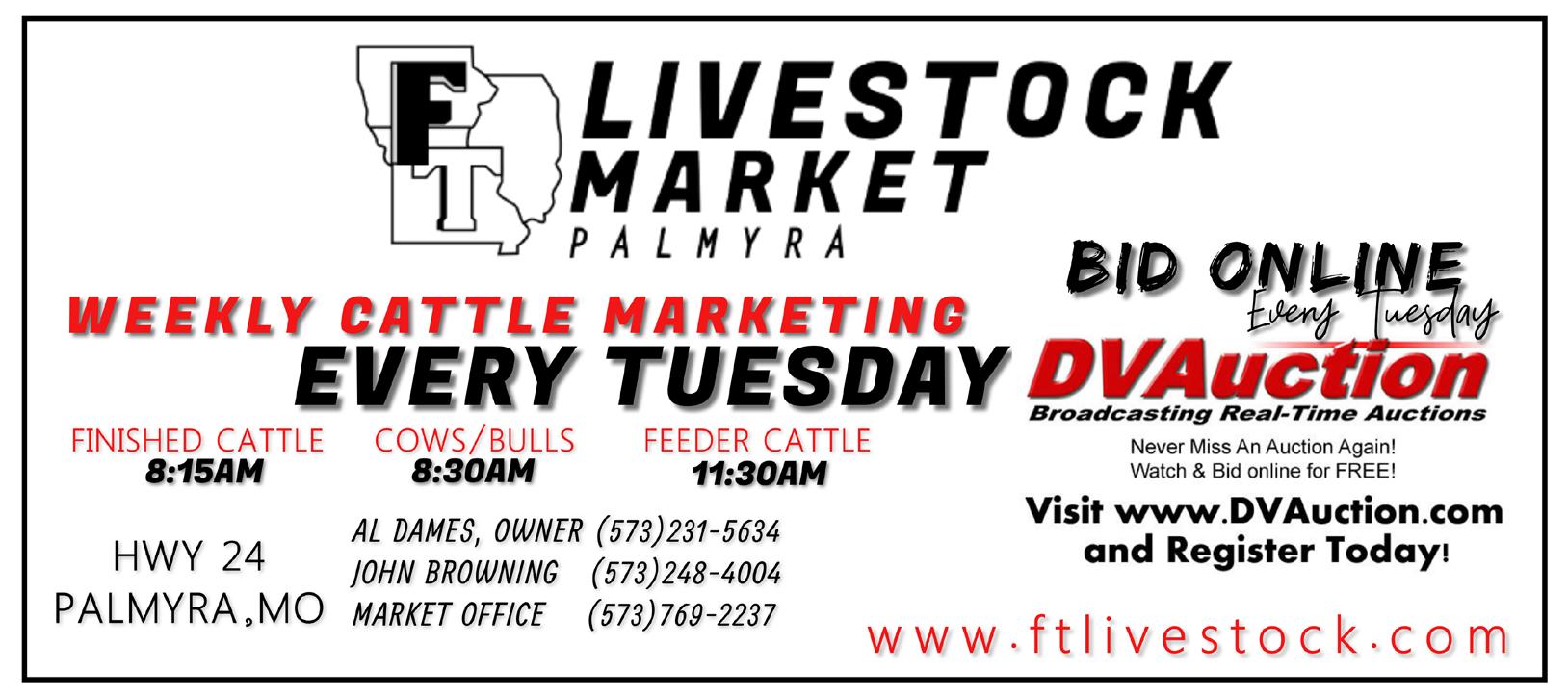

Fall is upon us and our fairs are a wonderful memory. Washington town and country fair in Washington, Missouri broke all records in their livestock auction as the buyers supported the kids with tremendous generosity. They brought in over 1.3 million in sales. A big shout of thanks whom support 4-H and FFA with the outstanding generosity. Franklin County crowned a new beef before the market steer show. The retiring queen is Miss Darcy Koch of Villa Ridge, Mo. and the new beef queen is Miss Aurora Hilkerbaumer. She is from Union, Mo. They both have extensive show records and very involved in 4-H and FFA. The Cattlemens association of Franklin County award scholarships to high school and college students each year. This year the high school went to Darcy Koch and the college went to Luke Strubberg and Darren Armfield.They all had criteria that had to be met to qualify.They were awarded $1,000 each.
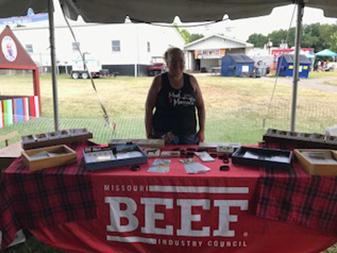
Every Monday: Slaughter Cattle 12:00 p.m. Selling All Classes of Cattle 12:30 p.m.
1st Thursday Nite of Each Month: 6:00 p.m. Bred Cows and Breeding Bull Sale
Jack Harrison 573-999-7197 (owner)
John P Harrison ............... 573-220-1482


The Franklin County Cattlemens had a promotional table sponsored by MBIC at the agriland tent all five days of the Washington Town and Country Fair. Promotional brochures and recipe cards were handed out to several thousand people to inform them as to wholesome beef and how to prepare it. Several people inquired as to where they could buy farm raised beef and they were referred to a local farmer whom raises beef from farm to table. We want to especially thank Amy Elbert on managing the promotional table. Callaway
Claude Niemeyer 573-470-1017
Roger Temmen 573-680-4538
Justin Oberling .................. 217-440-7724
Glenn Stegman 573-619-8495
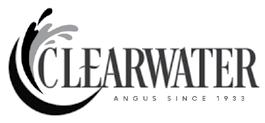



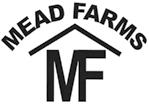
meadangus@yahoo.com
www.meadfarms.com








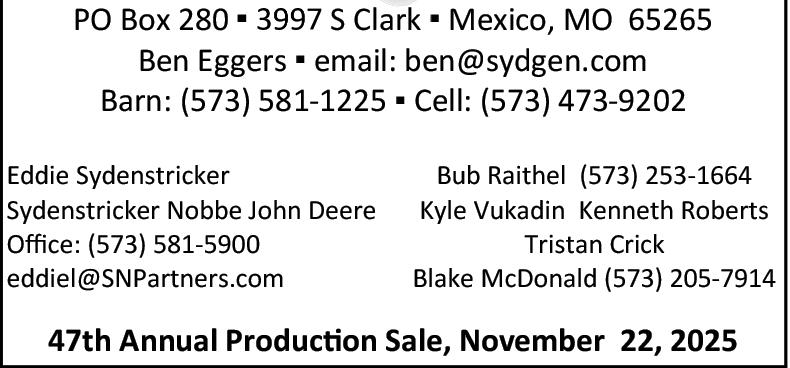
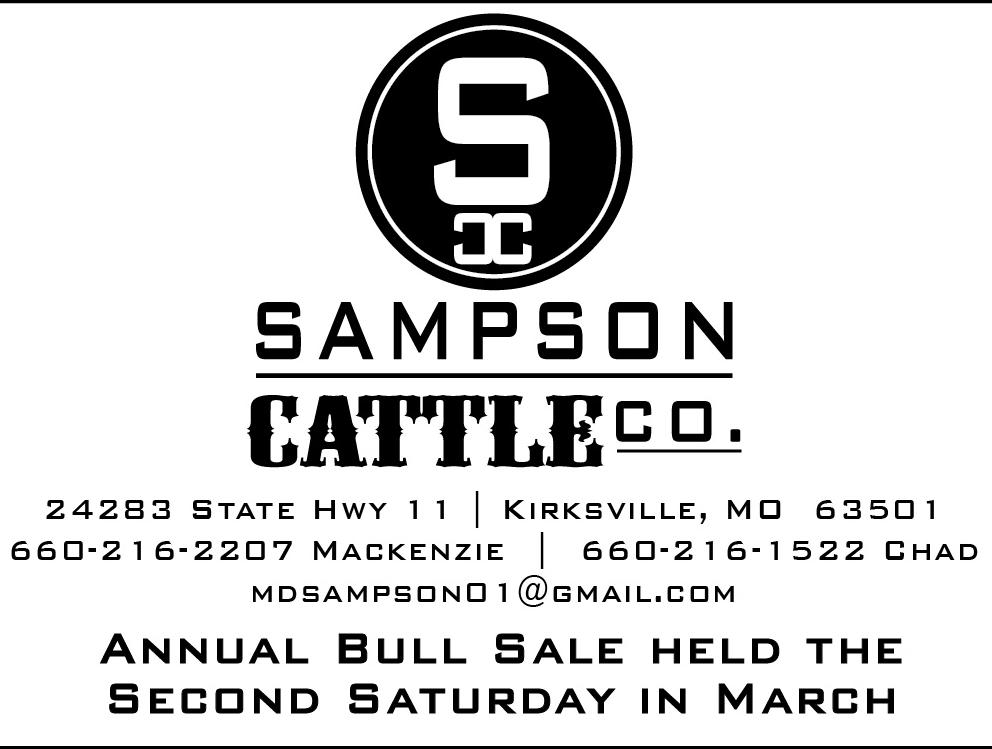


The St. Clair County Cattlemen’s Association had a busy August. On August 10 the St. Clair County Cattlemen worked along with the Osceola FFA Chapter at the Beef House at the Missouri State Fair. The Cattlemen enjoy their time going each year to the State Fair and serving steak sandwiches to fairgoers. The St. Clair County Cattlemen would like to thank the Osceola FFA Chapter for their help and continued support.
The St. Clair County Cattlemen’s Association had a fun filled Labor Day Weekend. On Saturday, August 30, the St. Clair County Cattlemen’s Association set up on the square in Osceola to sale hamburgers and steak sandwiches to the attendees of the Labor Dazes festivities. The members who served enjoyed their time visiting with the community members and getting to promote good quality beef. Thank you to each member who helped serve and to the community for their support.
At noon on that same Saturday the St. Clair County Cattlemen held the drawing for their gun raffle for the Ruger American Predator Kryptek 308. The gun raffle

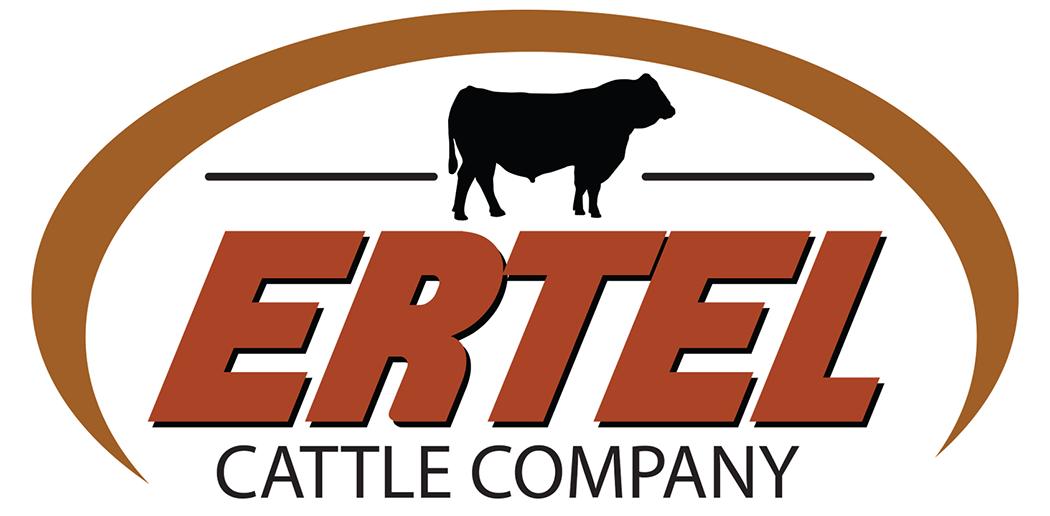
Gelbvieh and Balancer® Bulls & Females Specializing in Balancers® for the Modern Rancher Ertel Cattle Company • 660.234.2654 26694 Anchor Way • Greentop, MO 63546 www.ertelcattle.com • gertel@ertelcattle.com



is to support the Cattlemen’s scholarship program. The St. Clair County Cattlemen’s award scholarships to deserving high school seniors or college students who are pursuing a degree in agriculture. The winner of the gun raffle was Jame Porter. The St. Clair County Cattlemen’s Association would like to thank everyone who bought gun raffle tickets and for their continued support.
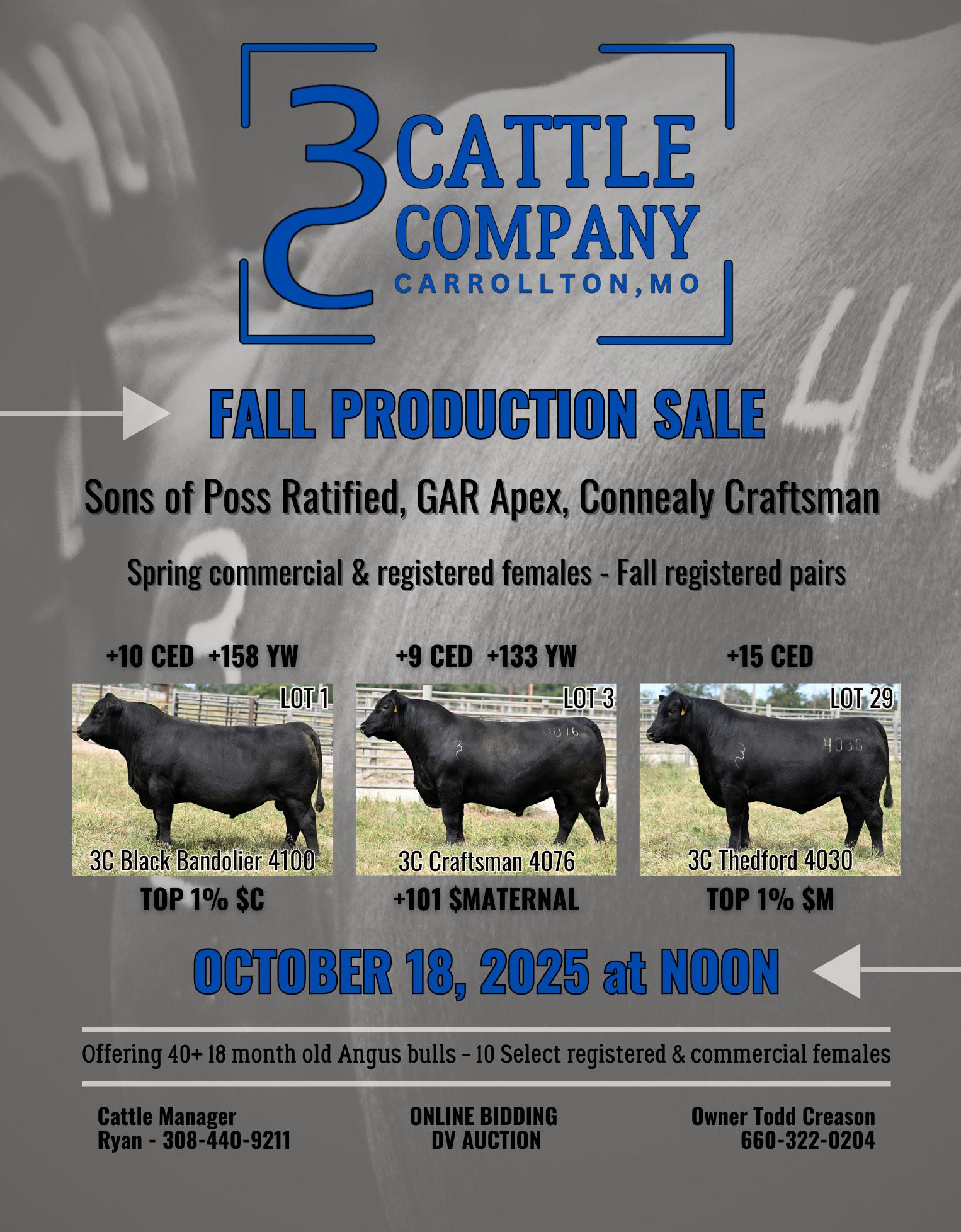
The Dallas County Cattlemen’s Association (DCCA) kicked off its fall meetings on September 9 at Prairie Grove School south of Buffalo. A crowd of 120 members and guests enjoyed rib-eye steak sandwiches with plenty of sides. We would like to greatly thank our meeting sponsors, Joplin Regional Stockyards and Worthington Angus, for the great meal and excellent presentations. Also, thank you to Ruby Hostetler and her ladies for the delicious sides as well as board member Jake Hostetler and his crew for grilling the awesome steaks.
First to speak to the group was Josh Worthington. Josh and his wife, Corry, along with their three sons, operate Worthington Angus at Dadeville. They host two sales each year. They believe in using science and data to make informed breeding decisions. They also believe their success is rooted in their customers’ success in using their genetics.
Josh mentioned that even though supply issues exist in the industry, demand is still a shining star in the beef equation. Consumers’ concern over price has not changed much. Taste and freshness are of utmost importance to the consumer. He said alot more prime is hitting the market, with a 30% increase in prime and choice over the last 25 years. Cattlemen have gotten more efficient and added more pounds to every carcass to become more profitable.
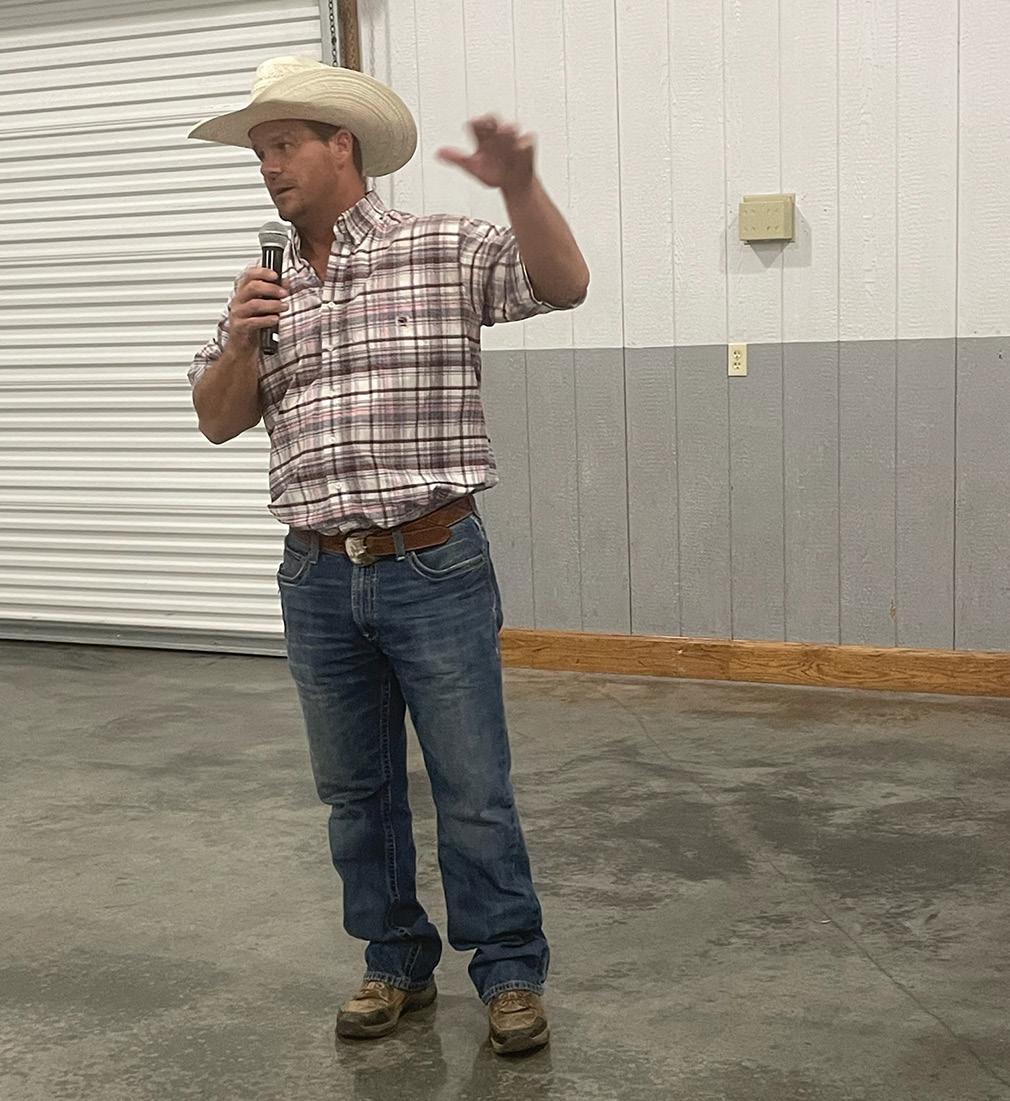
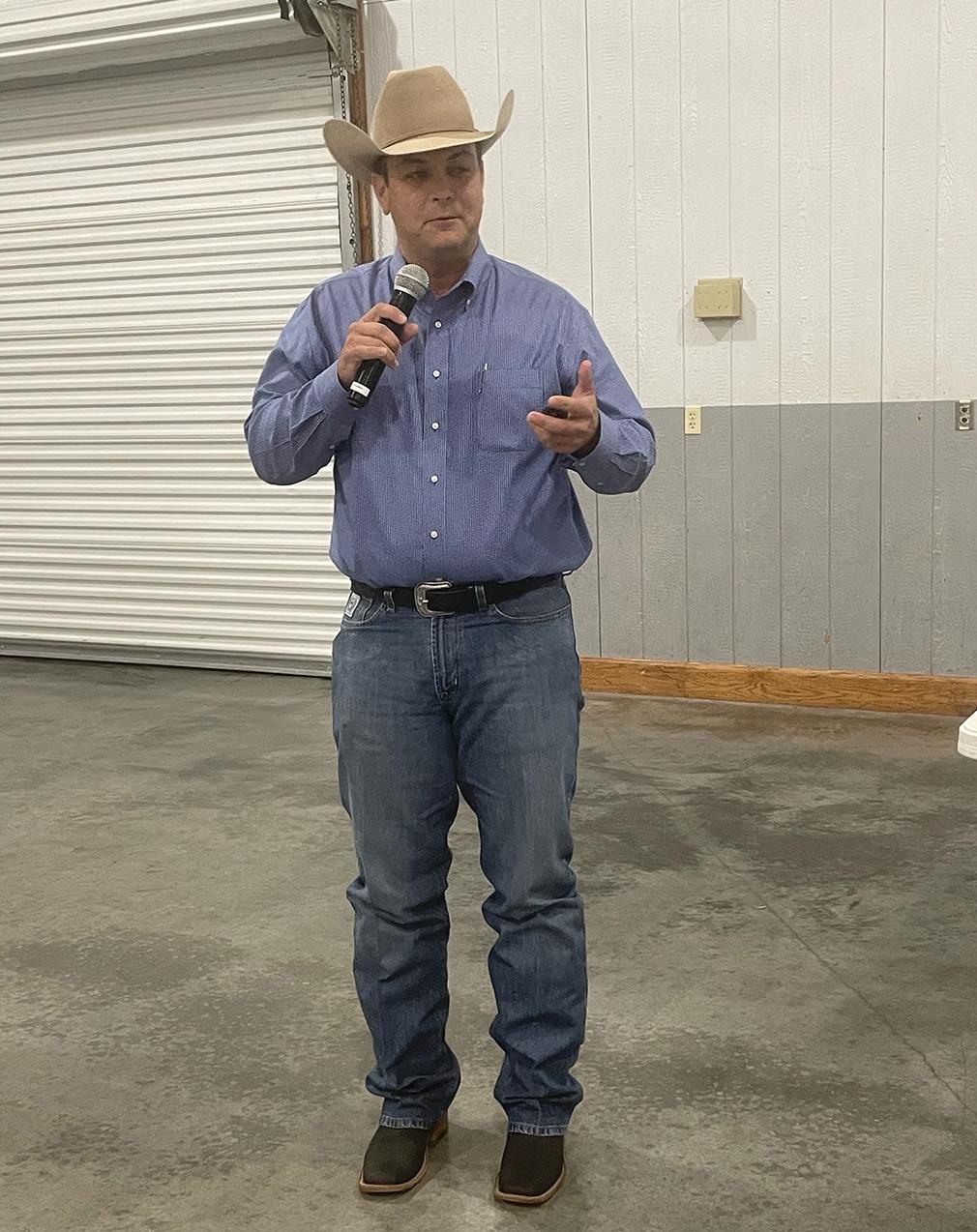
Speaking on behalf of JRS was Nick Flanagan. With record high cattle prices, Nick doesn’t think the market will get a whole lot higher, but it looks good for the near future. He told the audience, “JRS is here to work for you. We will get all we can for your cattle”. He quoted Jackie Moore in saying “Enjoy the good times!”
We very much appreciate the great job both JRS and Worthington Angus do in promoting the beef cattle industry.
Buffalo FFA students also gave a presentation about their summer activities and their trip to the Washington Leadership Conference. They thanked DCCA for its support in making the trip possible. Rounding out the evening Ashtyn O’Malley told about her trip on the MJCA Youth Industry Tour. She not only had alot of fun but certainly learned alot.
DCCA members enjoyed working in the Missoui State Fair Beef House in August. They recently fired up the grill at the annual Buffalo Celtic Festival in September. Future meetings are scheduled for October 14 and November 11.
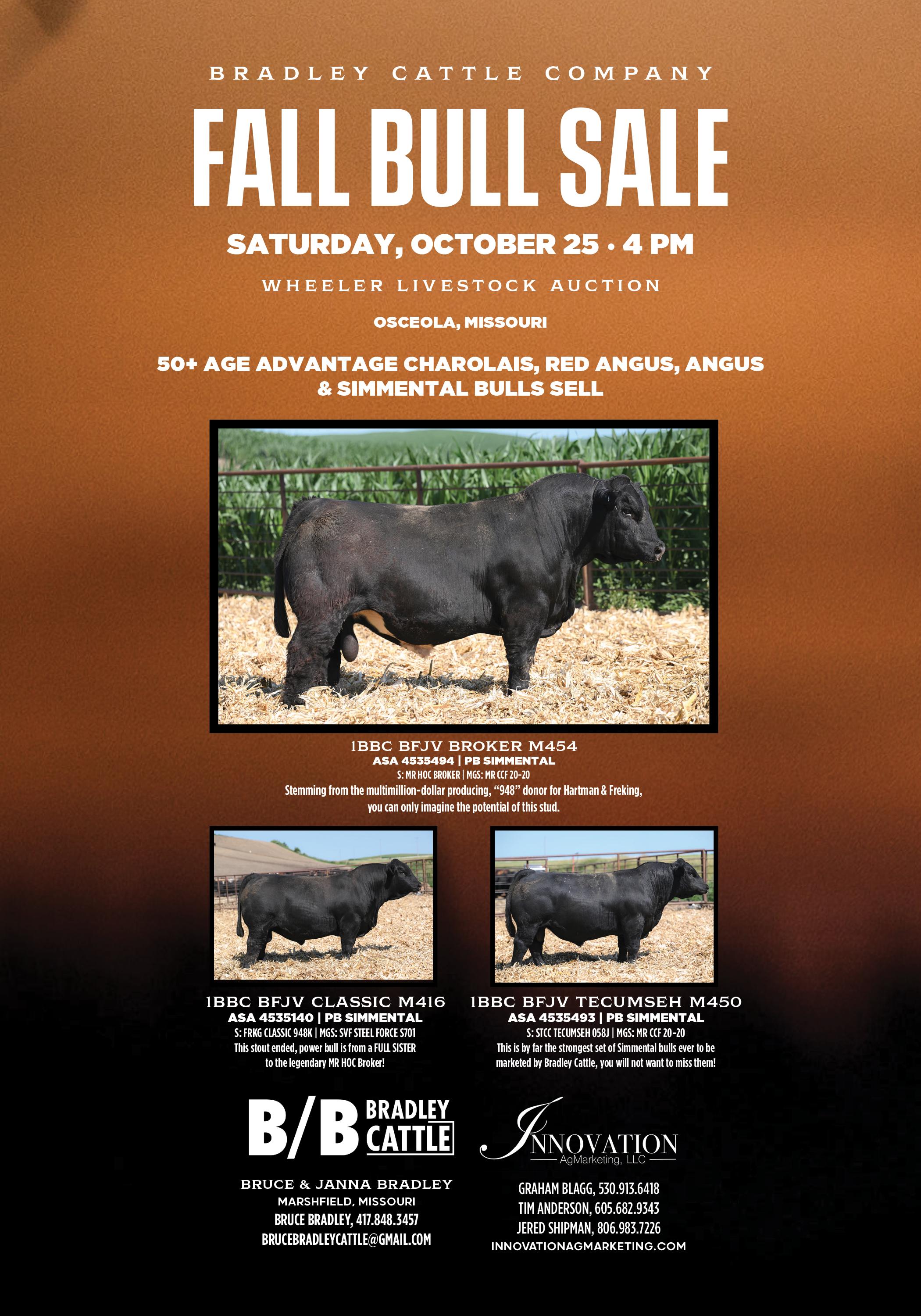
Source: Tom Brink, Founder and CEO, Top Dollar Angus
With appropriate respect offered to the author, publisher and comment providers who recently collaborated on the article entitled “Could mediocrity be the right goal? A practical perspective on cattle production” (link: Could mediocrity be the right goal? A practical perspective on cattle production | Ag Proud), I’d like to share several thoughts on why cow-calf producers should avoid such a mindset.
To begin, believing that mediocre cattle can be both acceptable and profitable over the long run is a fallacy. Producers targeting mediocre cattle as their long-term production goal have chosen a low-to-no profit road. As an industry, we tried this approach in the 1980s and 1990s. It failed miserably. Mediocre cattle (known also as commodity cattle) were everywhere back then. They were the rule, not the exception.
Result: Beef demand was in shambles. We lost market share to chicken and pork year after year and beef cattle ranchers and farmers left the business in droves. They simply could not make a living. We permanently exported some of the best young minds out of the beef industry. Many of our sons and daughters saw no future in ranching and sought careers elsewhere. That is the fruit of mediocre cattle. We who remember those two decades have no desire to recreate that same business environment ever again. There is no margin in commodity cattle.
Fortunately, producing mediocre cattle and watching our industry get hammered bought about meaningful change. The resulting shift toward higher quality cattle has been positive for all segments of the cattle business.
For most of the past 25 years (roughly 2000 to the present), the focus was to improve our cattle and offer consumers better beef. This strategy worked better than we could have imagined. Superior genetics, management and innovative marketing methods that rewarded top-quality cattle combined to significantly enhance our end product. Consumers came back and beef demand grew like never before. We still have plenty of challenges (always will), but if the yardstick is overall industry prosperity, the past couple decades are much preferred to the 1980s and 1990s. A highquality product and strong demand go hand in hand, no surprise. Continually making better cattle is the road we must stay on, both individually and collectively, because
more improvement is both possible and necessary. It is also proven effective.
As a final point, let me address the cost/value assumption set forth in “Could mediocre cattle be the right goal.” A theme of the article is that lower costs will accompany the production of mediocre cattle. Spending less might result in your cattle being mediocre, but at least you’ll have costs under control. Sounds intuitive, but this blanket claim was debunked by Cattle-Fax over a quarter century ago.
In the mid-1990s, Cattle-Fax analyzed high-profit ranching operations to determine why they were unique. They discovered that while high-profit ranchers had lower production costs overall, they actually spent MORE than their less-profitable peers on genetic inputs, animal health and pasture utilization. They invested in the creation of better genetic, healthier animals that would enter the beef supply chain and create superior value for everyone who owned them all the way to harvest. They were making value-added cattle well before most of us knew what that meant.
High-profit producers did not believe keeping costs down mandated the production of mediocre cattle. They understood the need to carefully manage input costs, but also knew cattlemen sell outputs for a living. The objective is to effectively balance both.
Spending more on pasture meant smaller outlays for winter feed. They grazed their cows longer, yet took care of them nutritionally, while actively investing in genetics and health to create superior animals. They exploded the myth that competitive production costs pigeonhole a producer into outputting commodity cattle.
Years later, we can still gain wisdom from this proven approach. We can also learn from both the mistakes and successful decisions the beef industry made during the past four to five decades. The takeaway is pretty simple: Each producer should continually strive to improve the genetics and health of each successive calf crop, while doing so in a cost-effective manner. Mediocrity should never be the goal. Not for anyone.
Tom Brink is a long-term cattle industry veteran who has held numerous leadership positions during the past 35 years. He resides in Brighton, Colorado and can be reached at tom@topdollarangus.com or 303-478-4331.

Source: USMEF
July exports of U.S. pork were slightly below last year but accounted for a larger share of production, according to data released by USDA and compiled by the U.S. Meat Export Federation (USMEF). Market access obstacles continued to weigh heavily on exports of U.S. beef, with the vast majority of plants still ineligible to ship to China.
Pork exports totaled 238,922 metric tons (mt), down just 1% from a year ago, while value fell 4% to $680.9 million, largely reflecting the 10% decline in pork variety meat prices due to China’s tariffs. July was another strong month for U.S. pork in leading destination Mexico, while exports increased year-over-year to Central America, Colombia, the Caribbean and the ASEAN region. Pork variety meat demand was strong in July, with exports posting the second largest volume this year.
Through the first seven months of 2025, pork exports were 4% below last year’s record pace in both volume (1.69 million mt) and value ($4.8 billion).
“While July exports to Mexico didn’t match the monster totals from a year ago, demand for U.S. pork remains very robust in our top market,” said USMEF President and CEO Dan Halstrom. “July also saw great results in Central and South America, while volumes to the key Asian markets were largely steady with last year and pork variety meat volumes achieved broad-based growth.”
U.S. beef performed very well in July in leading market South Korea, as well as in the Caribbean, Central America, Chile, the Philippines and Africa. But with shipments to China nearly halted due to a lack of eligible plants, July beef exports were down 19% from a year ago to 89,579 mt, the lowest in five years. Export value declined 17% to $752.5 million, the lowest since January 2023.

From January through July, exports were 8% below last year in volume (691,800 mt) and down 7.5% in value ($5.67 billion).
The decline was largely due to China’s failure to renew registrations for the vast majority of U.S. beef plants and cold storage facilities, most of which expired in March. China has also suspended 11 U.S. beef facilities since June.
“The plant registration impasse with China unfortunately drags on, and it has left U.S. beef essentially shut out of the market after exporters worked through their eligible inventories,” Halstrom explained. “Demand elsewhere has remained fairly resilient, even in the face of higher pricing, but restoring access to China is clearly the urgent priority. Export value and share of production exported declined in July, reflecting the loss of competing bids from Chinese buyers.”
July Lamb Exports Trend Higher Larger shipments to Mexico, Canada, the Bahamas and Costa Rica pushed July exports of U.S. lamb muscle cuts to 239 mt, up 56% from a year ago, while value increased 35% to $1.34 million. For January through July, exports increased 45% to 1,829 mt, valued at $9.6 million (up 26%).
In leading volume market Mexico, USMEF positions U.S. lamb as a premium product with the versatility for use in a variety of dishes featuring cuts such as shoulder and flap meat. January-July exports to Mexico increased 68% from a year ago to 834 mt, while value jumped 81% to $2.94 million – already surpassing the full-year volume and value totals from 2024.
A detailed summary of the January-July export results for U.S. pork, beef and lamb, including market-specific highlights, is available from the USMEF website.
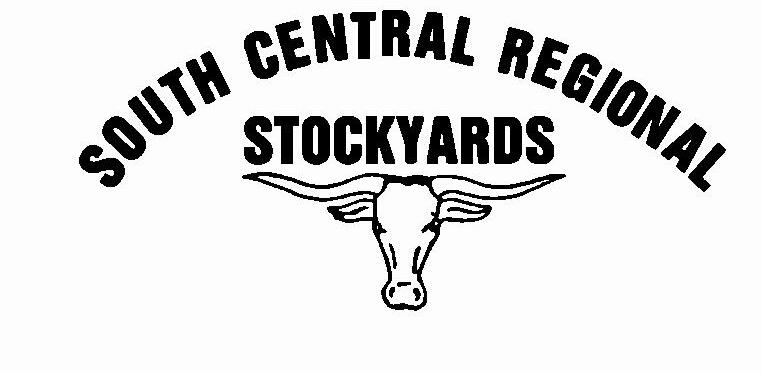
Selling All classes of Cattle Wednesday • 10:00 a.m. Featuring ‘Star-Vac Program’ Cattle Weekly DVAuction Service for convenient online viewing & bidding Hwy 42 West • Vienna Missouri 65582 45 Miles South of Jefferson City
For More Infor mation Call David Patton Of fice
573-308-6655 573-422-3305 573-308-6657 573-308-6658 Visit our website: www scrsvienna com or E-mail us: scrsvienna@gmail com “Make South Central your Livestock Market”

Source: NCBA
WASHINGTON (September 18, 2025) – Today, the National Cattlemen’s Beef Association (NCBA) and the Public Lands Council (PLC) congratulated a slate of nominees confirmed by the U.S. Senate who will take up positions at the U.S. Department of Agriculture (USDA), U.S. Department of the Interior, Environmental Protection Agency (EPA), and Council on Environmental Quality (CEQ).
“President Trump has been in office for eight months and there are still numerous vacant positions across the federal government. These vacancies delay the ability of federal agencies to craft policy and address

issues facing America’s cattle producers,” said NCBA CEO Colin Woodall. “We thank Majority Leader John Thune and all the senators who voted to advance this slate of highly qualified nominees. With new confirmed officials, important teams under USDA, the Interior Department, EPA and CEQ can be even more effective in serving America’s farmers, ranchers and rural communities.”
Department of Agriculture
Dudley Hoskins, Under Secretary for Marketing and Regulatory Programs
NCBA Senior Vice President of Government Affairs
Ethan Lane: “NCBA congratulates Dudley Hoskins on his confirmation as USDA Under Secretary for Marketing and Regulatory Programs. As a staff member for the U.S. Senate Agriculture Committee, Under Secretary Hoskins has supported America’s cattle producers and advanced critical Farm Bill programs. With his previous experience at USDA and at the National Association of State Departments of Agriculture, Hoskins is a highly qualified nominee, and we look forward to him supporting the economic health and security of the U.S. cattle industry.”
Dr. Scott Hutchins, Under Secretary for Research, Education, and Economics
NCBA Senior Vice President of Government Affairs
Ethan Lane: “As a scientist and researcher, Dr. Scott Hutchins has dedicated his career to protecting American agriculture and advancing gold standard research. The innovation and information provided by the Research, Education, and Economics Mission Area of USDA is critical to the success of family cattle farmers and ranchers. NCBA congratulates Dr. Hutchins on his confirmation and looks forward to working with him.”
NCBA Senior Vice President of Government Affairs
Ethan Lane: “America’s cattle producers rely on the Farm Production and Conservation team at USDA to manage local Farm Service Agency offices, support risk management offerings, and manage voluntary conservation tools through the Natural Resources Conservation Service. NCBA is grateful to see a qualified nominee like Richard Fordyce receive confirmation as Under Secretary of Farm Production and Conservation to lead these efforts. NCBA looks forward to Under Secretary Fordyce supporting family farmers and ranchers in accessing disaster relief, risk management and voluntary conservation tools that support healthy ranches and healthy rangeland.”

Source: NCBA
WASHINGTON (September 11, 2025) – Today, the Livestock Marketing Council (LMC) of the National Cattlemen’s Beef Association (NCBA) announced opposition to two proposed rules released by the Wisconsin Department of Agriculture, Trade and Consumer Protection (DATCP) that raise fees on local sale barns by as much as 1700%.
“Local sale barns are an important part of the cattle industry, local communities, and the economy. They also serve as an essential way for Wisconsin cattle
producers to market their livestock,” said LMC Chair Holly Foster. “The proposed rules from the Wisconsin Department of Agriculture raise fees on sale barns from $450 to $7,500. This massive increase makes it even harder for local sale barns to stay in business, and these regulations pose a significant threat to Wisconsin’s cattle industry.”
This massive fee increase would make Wisconsin one of the most expensive states for sale barn licensing. By comparison, Minnesota only charges about $300, Illinois charges $200, and Iowa charges just $50 for similar user fees. If this fee increase becomes law many local Wisconsin sale barns will be forced out of business and local cattle producers will have fewer places to sell their cattle, with many being forced to truck their cattle out of state.

“These massive fees are a burden that Wisconsin’s cattle farmers and sale barn owners simply cannot survive,” said Wisconsin Cattlemen’s Association President Tressa Lacy. “We urge Governor Tony Evers and Secretary of Agriculture Randy Romanski to abandon this fee raising plan that would forever harm Wisconsin agriculture.”
Individuals interested in making their voices heard on this proposed regulation are invited to participate in public hearings on Tuesday, September 16 at 1:00 pm or Wednesday, September 17 at 1:00 pm. These hearings will be held at the Prairie Oaks State Office Building, Room 106, 2811 Agriculture Dr., Madison, WI 53708 and may be attended in-person or virtually. Written comments may also be submitted to the Wisconsin Department of Agriculture, Trade and Consumer Protection by October 15. For more information, please visit www.wisconsincattlemen.com.

Source: NCBA
WASHINGTON (September 22, 2025) – Today, National Cattlemen’s Beef Association (NCBA) CEO Colin Woodall responded to the announcement from the U.S. Department of Agriculture that a new case of New World screwworm has been detected in the Mexican state of Nuevo León, less than 70 miles from the U.S.-Mexico border:
“It is extremely concerning for the American cattle industry that New World screwworm has moved so far north in Mexico and now is just 70 miles from the border. The speed that screwworm has moved through Mexico is a reminder that this pest poses a critical and urgent threat to America’s cattle producers.
“NCBA appreciates all the resources Secretary of Agriculture Brooke Rollins has invested in protecting American agriculture from the New World screwworm. Designating funds for a domestic sterile fly facility, exploring new technologies for sterilizing flies,
enhancing fly surveillance, and coordinating with other departments across the U.S. government are all important steps for safeguarding the U.S. cattle industry. We are also encouraged by the Food and Drug Administration’s work to authorize emergency treatments for screwworm, and we look forward to additional product approvals.
“With the threat so close, we need more sterile fly dispersal to push this pest back from our border. Now is the time for USDA to expedite construction of the domestic sterile fly facility and eradicate this pest from our doorstep. We also ask USDA to continue holding Mexico accountable and urge them to reduce animal movements that could spread screwworm north. NCBA is also urging the Environmental Protection Agency to authorize new pesticide products to combat screwworm and provide another tool for American cattle producers.
“NCBA will continue working to protect the U.S. cattle industry from New World screwworm.”




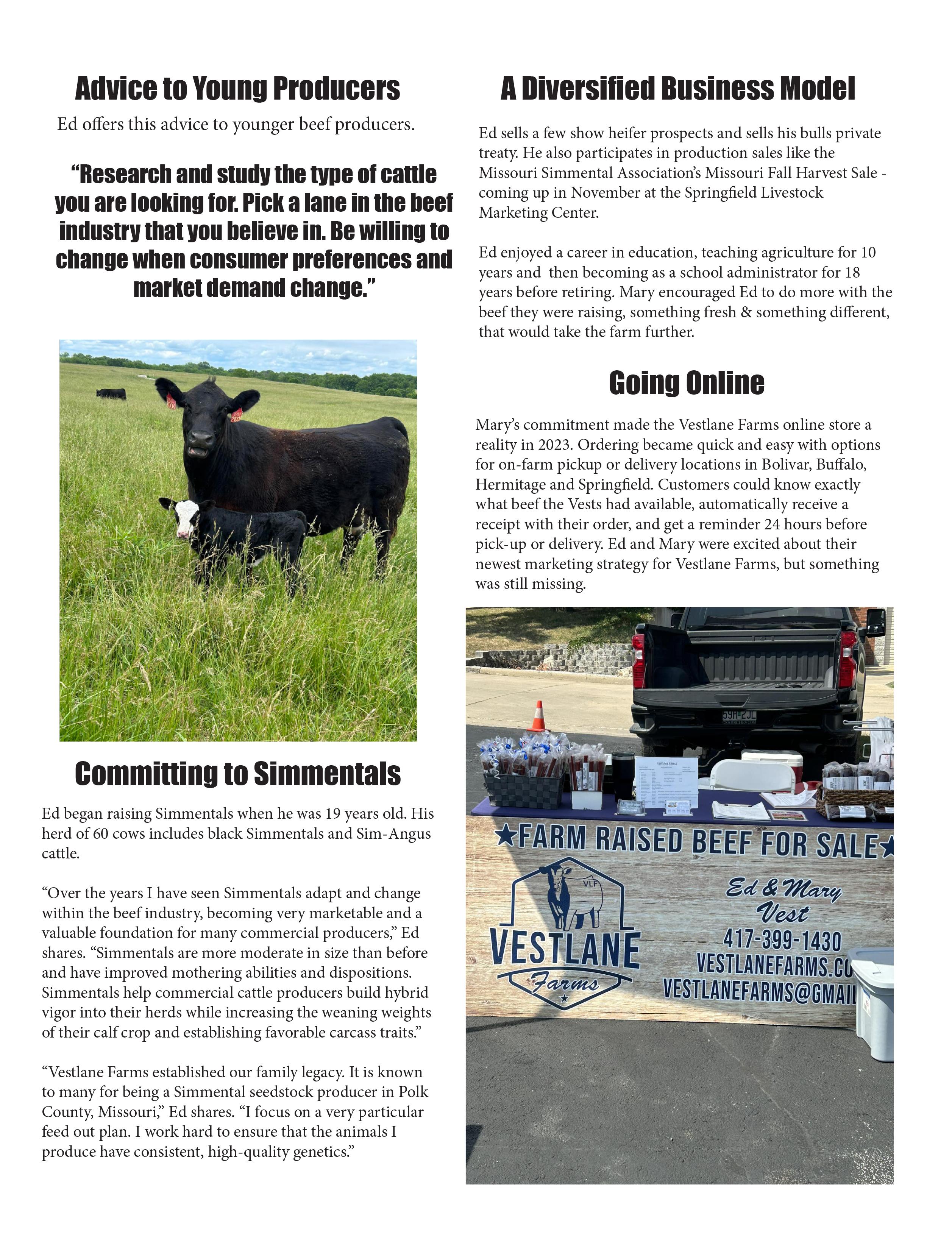

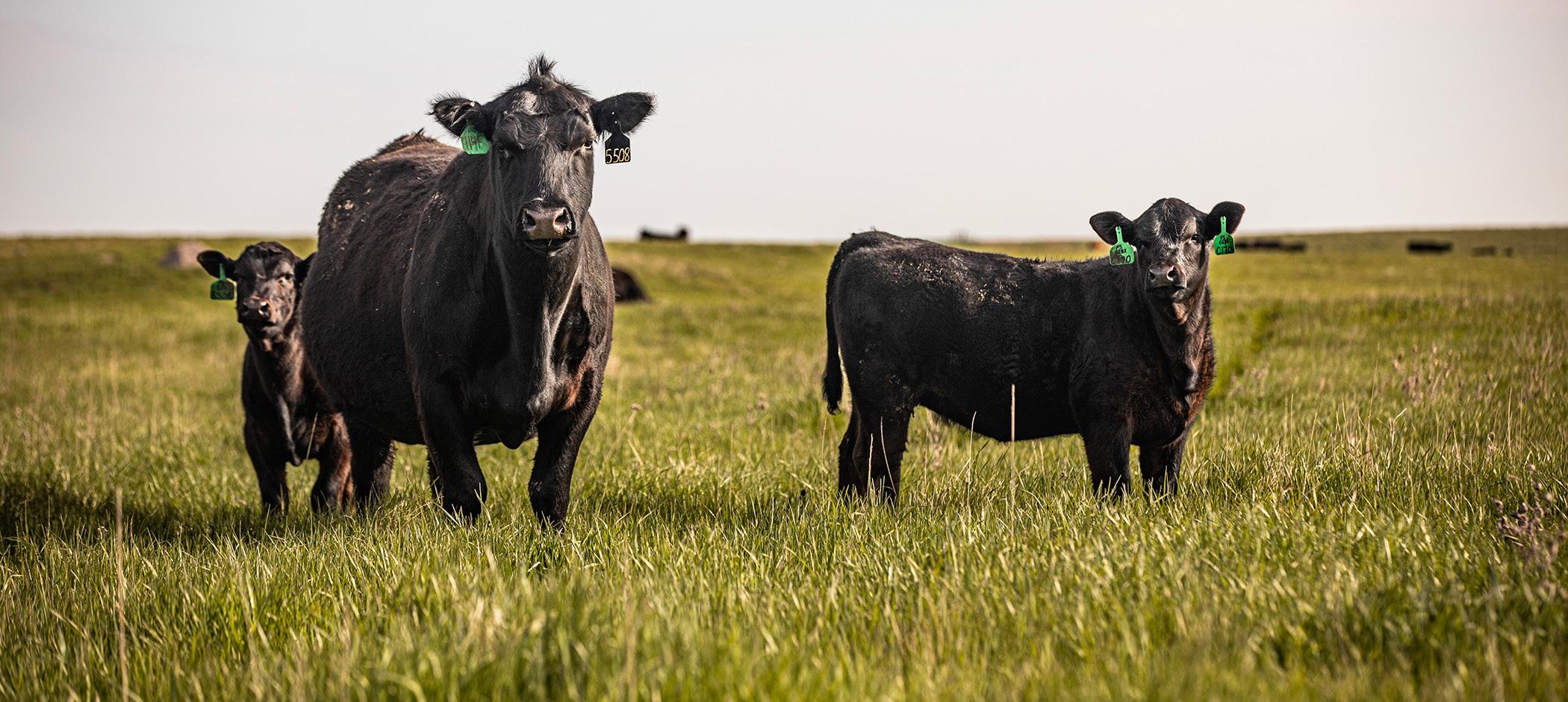
Source: by Dr. Jon DeClerk for ASA
Packers continue to demand heavier finished cattle, while cow-calf producers are faced with the challenge of maintaining efficiency, longevity, and profitability in their cow herds. How can producers balance these two seemingly contradictory demands?
With record high prices across all classes of cattle, the beef industry is buzzing with both excitement and uncertainty. Cow-calf producers, in particular, find themselves at a crossroads. The industry is caught in a paradox — balancing the proven efficiency of moderateframed cows with the market’s growing demand for larger, heavier cattle.
Research consistently shows that moderate-sized cows excel in efficiency. They wean a higher percentage of their body weight, bounce back quicker for rebreeding, and remain productive in the herd longer than their larger, heavier counterparts. Yet, market pressures are pulling in the opposite direction. With the US cow herd at its smallest since 1961 and retail beef demand surging, packers and feedlots are calling for heavier calves and larger carcasses to keep the supply chain humming.
This contradiction — where efficiency supports one approach while demand pushes for another — leaves many in the industry searching for answers. That’s why, at the American Simmental Association’s 2025 Fall Focus in Columbia, Missouri, on August 22–23, tackled this challenge head-on, exploring strategies to help cowcalf producers stay profitable while staying true to what science tells us works.
Every environment presents its own challenges, and what works in one region may not in another. A cow that thrives on the vast, semi-arid rangelands of New Mexico isn’t necessarily the best fit for the Upper Midwest — and vice versa. For the sake of this discussion, I’ll focus on what holds true in most production settings.
Let’s talk numbers. For years, research has reinforced a simple truth: moderate-framed cows — typically weighing between 1,100 and 1,300 pounds — are the most cost-efficient engines of the cow-calf business in most settings. A 2017 study from Ohio State University found that cows well-matched to their environment, especially those on the smaller to mid-sized end of the spectrum, excel at converting forage into pounds of weaned calf.1
The key metric here is weaning efficiency — the proportion of a cow’s body weight she converts into a calf at weaning. Research consistently shows that moderate-framed cows wean an impressive 45–50% of their body weight, while larger cows (1,500 pounds and up) often drop below 40%.1 That gap adds up fast, especially when feed costs are factored in.
In commercial operations, where efficiency drives profitability, bigger isn’t always better — despite market trends favoring larger cattle. While seedstock operations may supplement calves to maximize genetic potential, commercial producers generally rely solely on forage and milk. In these settings, moderate cows simply wean more efficiently, making them the more sustainable choice.
Fertility is another major advantage. Moderate-framed cows tend to maintain their body condition scores (BCS) more easily through tough seasons — whether it’s a harsh winter or a drought — because they require less forage to sustain themselves. Research from the University of Arkansas found that cows with a BCS of 5 to 6 at calving re-bred within 60 days at a 90% success rate, compared to just 70% for cows with a BCS of 4 or lower.2 Simply put, smaller cows hit that optimal condition more reliably with fewer inputs, leading to higher fertility rates and tighter calving intervals — both key drivers of profitability.
Then there’s longevity, the ultimate cost-saver. Moderate-framed cows stay productive longer. A 2011 analysis by Kent Olson in BEEF Magazine found that smaller to mid-sized cows often remain in the herd for ten to 12 years, while their larger counterparts start breaking down — whether from joint issues or metabolic strain — around 7–9 years.3 That’s two or three additional calf crops per cow. Fewer replacements mean lower development costs and more time keeping proven, high-performing females in the herd.
In an industry where every dollar matters, the long-term benefits of moderate cows can’t be ignored.
Last year’s Fall Focus in Amarillo explored the feedlot and packing sectors’ growing push for larger, heavier cattle. While carcass weights have steadily increased over the past few decades, the past couple of years have seen a notable surge driven by simple supply and demand dynamics.
As of January, the US cow herd shrank to a historic low of just 27.9 million head,4 while beef demand has never been stronger. Retail sales hit a record high in 2024, climbing 8% over the previous year.5 With fewer cattle available and demand soaring, packers and feedlots have made their priorities clear: they need bigger cattle and heavier carcasses to keep the supply chain moving.
The data speaks for itself. CattleFax reported that hot carcass weights hit a record high in 2024, surpassing 900 pounds — a full 36 pounds above the three-year average.6 Feedlots benefit from these heavier cattle, as greater growth potential translates to more pounds gained in the yard, diluting initial purchase price and improving margins. Packers win, too: more beef per hook means greater plant efficiency and a steadier supply to meet strong consumer demand.
This demand inevitably trickles down to the cowcalf sector. Producers are tempted to retain those big, growthy heifers from top-end bulls, knowing their calves will generate serious pay weight at weaning. But here’s

where things get complicated. Those big bulls can often sire daughters that mature into 1,500-plus-pound cows, significantly increasing the herd’s feed and forage demand. A pasture that once supported a moderateframed herd is suddenly stretched thin, with cows consuming 20–25% more feed per head.7 And when the feed/hay bill arrives, efficiency — and often profitability — start to erode.
Let’s break it down. A 1,200-pound cow in good condition (BCS 5) typically requires about 24 pounds of dry matter per day — roughly 2% of her body weight — depending on forage quality and weather conditions.8 Increase that to a 1,600-pound cow, and daily intake jumps to 32 pounds. Over a 120-day winter feeding season, that’s an extra 960 pounds of hay per cow. Scale that up to a 100-head herd, and you’re looking at an additional 48 tons of hay — or a much steeper feed bill. And that’s assuming your summer pastures can keep up. Bigger cows graze harder, increasing the risk of overstocking, especially in dry years.
But the challenges don’t stop at feed costs. The bigger daughters of those high-growth bulls don’t just require more feed — they’re often less resilient. A 2019 study
from Oklahoma State University found that largerframed cows have lower rebreeding success in tough environments, leading to herd pregnancy rates as much as 10% lower than their moderate-framed counterparts.9 So, while those heavier calves typically bring in more dollars at weaning, they often come at a cost: reduced weaning efficiency (weaning a lower percentage of a cow’s body weight), more open cows, and a shorter herd lifespan. In many instances for commercial cow-calf producers, it’s the classic case of winning the battle but losing the war.
So, what’s the path forward for seedstock producers? Again, every operation is unique, and there’s no onesize-fits-all approach. What thrives in North Dakota won’t necessarily succeed in Oklahoma — and vice versa. Fortunately, the data suggest that Simmental breeders are already moving in the right direction. A study from the US Meat Animal Research Center (USMARC) in Clay Center, Nebraska, shows that Simmental-sired calves have a slight advantage in weaning weight over Angus-sired calves, yet their mature cow counterparts weigh in at 74 pounds lighter than those sired by Angus bulls.10 This indicates that growth
and efficiency don’t have to be mutually exclusive — Simmental genetics are proving they can deliver both.
The key is having an effective breeding strategy. For commercial cow-calf producers, crossbreeding is virtually non-negotiable. Heterosis doesn’t just boost weaning weights by 10% — it increases cow lifetime production by an impressive 23%.11 &12 That’s a massive advantage for long-term profitability, giving ranchers more pounds of calf over a cow’s career without ballooning input costs.
In many cases, it may be worth considering a more structured approach to mating cattle. High-performance bulls with big growth EPD may produce sale barn standouts, but are they building sustainable herds? Their daughters will be the backbone of commercial operations for a decade or more; if they grow too big to thrive on available resources, profitability takes a hit.
Perhaps a plausible solution is greater differentiation, developing bulls specifically for maternal or terminal purposes. Research from the University of Nebraska shows that selecting sires with strong maternal traits — like stayability and moderate mature size — can extend cow longevity by one to two years compared to high-

Quick Facts:
• The US cow herd at its smallest since 1961; as of January, it shrank to a historic low of just 27.9 million head.
• Moderate-framed cows wean 45–50% of their body weight, while larger cows (1,500 pounds and up) often drop below 40%.
• Cows with a BCS of 5 to 6 at calving re-bred within 60 days at a 90% success rate, compared to just 70% for cows with a BCS of 4 or lower.
• Smaller to mid-sized cows often remain in the herd for ten to 12 years, while their larger counterparts start breaking down — whether from joint issues or metabolic strain — around 7–9 years.
• Hot carcass weights hit a record high in 2024, surpassing 900 pounds — a full 36 pounds above the three-year average.
• A 1,200-pound cow in good condition (BCS 5) typically requires 24 pounds of dry matter per day — roughly 2% of her body weight. A 1,600-pound cow’s daily intake jumps to 32 pounds. Over a 120-day winter feeding season, that equals an extra 960 pounds of hay per cow.
• Larger-framed cows have lower rebreeding success in tough environments, leading to herd pregnancy rates as much as 10% lower than their moderate-framed counterparts.
• Heterosis boosts weaning weights by 10%, and increases cow lifetime production by 23%.
• Sires with strong maternal traits — like stayability and moderate mature size — can extend cow longevity by one to two years compared to high-growth sires.
growth sires.13 This study not only confirms the premise behind $API but also highlights the value of retaining females from maternal-focused sires. This approach builds a more efficient, longer-lasting cow herd, while
still allowing producers to capitalize on high-growth genetics through complementary terminal sires.
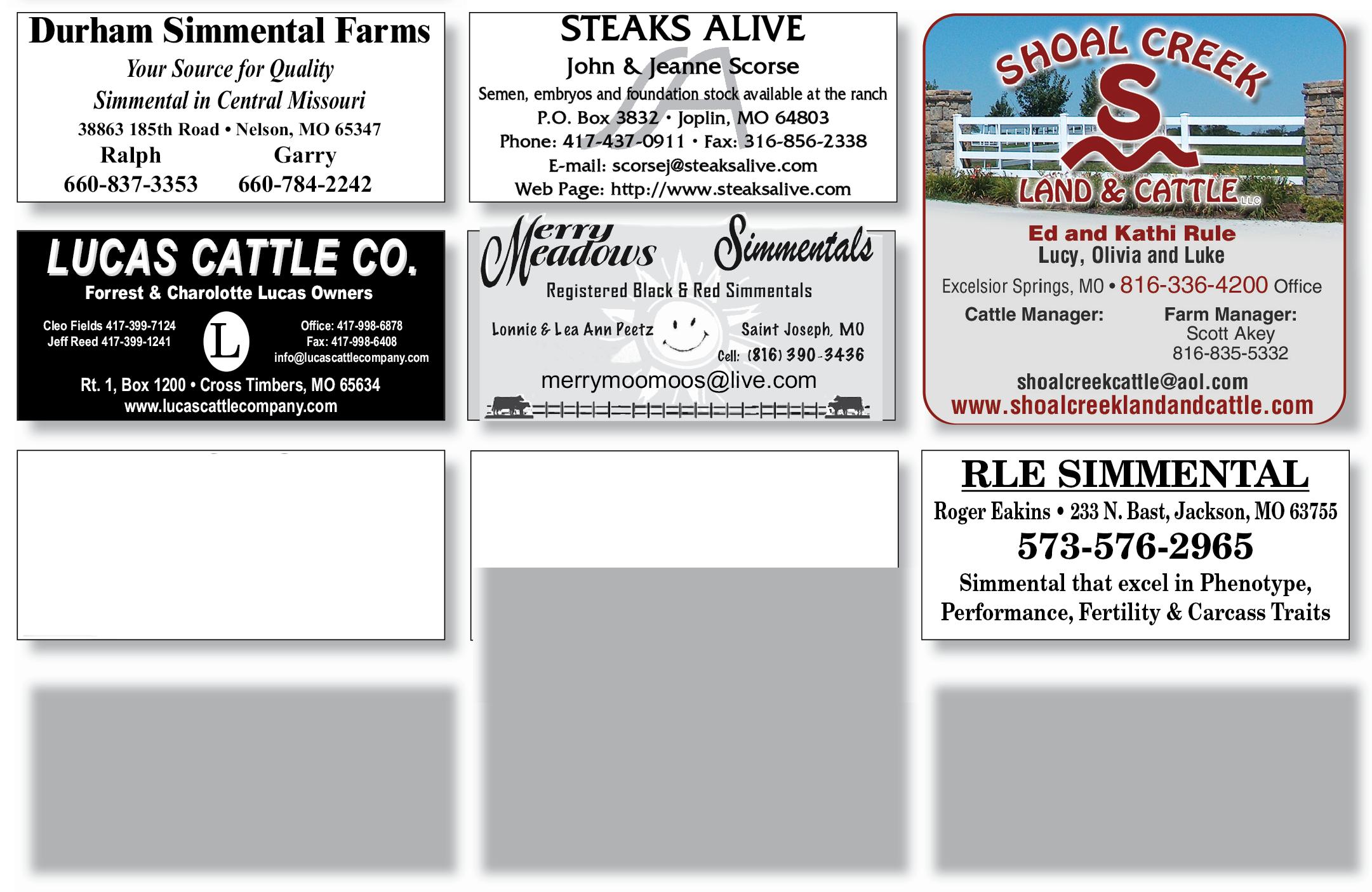



The fix isn’t about abandoning performance, it’s about strategic selection. Mating moderate-framed females with top-tier maternal traits (CE, Stay, and $API), to terminal-focused sires ($TI), can generate feeder calves at the top of the market without compromising cow efficiency.
It’s not about choosing sides in the industry debate. It’s about bridging the gap.
Here’s the challenge: science proves moderate cows win on cost and longevity, but the market demands bigger, heavier cattle. Cow-calf producers are stuck in the middle, trying to stay profitable without stretching their resources too thin. With numerous different environments, it goes without saying there’s no one-sizefits-all solution, but there are effective strategies. Maybe it’s leveraging crossbreeding — Simmental’s strong suit — to merge efficiency with growth. Or maybe it’s working closely with your seedstock supplier to match the right bulls to the right job: maternal sires for herd longevity and terminal sires for top-dollar feeder calves.
As the industry wrestles with these competing pressures,

Literature Cited:
[1] Beck, P., et al. (2017). “Matching forage systems with cow size and environment for sustainable cow-calf production in the southern region of the United States.” Ohio State University Beef Newsletter, July 2017.
[2] Gadberry, S. (2015). “Body Condition Scoring and Reproductive Efficiency.” University of Arkansas Extension Service.
[3] Olson, K. (2011). “Cow Size & Production.” BEEF Magazine.
[4] USDA National Agricultural Statistics Service (NASS). (2025). “Cattle Inventory Report, January 1, 2025.”
[5] National Cattlemen’s Beef Association. (2025). “Beef Industry Review and Consumer Insights: February 2025 Edition.”



[6] Kevin Good, quoted in “CattleFax Forecasts Continued Producer Profitability with Herd Expansion on the Horizon,” National Cattlemen’s Beef Association, February 5, 2025. details/41486/cattlefax-forecasts-continued-strong-demand-
[8] National Research Council. (2016). “Nutrient Requirements
Reproduction and Longevity.” *Journal of Animal Science.
[10] Cundiff, L. V., et al. (2010). “Breed Comparisons in the Germplasm Evaluation Program at MARC.” *Proceedings,
[11] Núñez-Dominguez, R., et al. (1991). “Effects of Heterosis on Lifetime Cow Productivity in Hereford, Angus, and Shorthorn Crossbred Females.” Journal of Animal Science, 69(10), 3857-
[12] Cundiff, L. V., et al. (1992). “Effects of Heterosis on Maternal Performance and Reproduction in Beef Cattle.” Journal of
[13] Thallman, R. M., et al. (2018). “Genetic Parameters for Stayability and Longevity in Beef Cattle.” *Journal of Animal

Source: by Lilly Platts for ASA
Missouri is third in the nation for cow-calf production, and a leader in the Simmental breed. The Missouri Simmental Association hosted a full day of education on the state’s rich beef cattle industry, kicking off Fall Focus 2025.
The Missouri Simmental Association helped kick off Fall Focus 2025 with a full day showcasing the state’s rich beef cattle industry. Early in the morning of Friday, August 22, producers from Missouri and beyond boarded buses for the Trowbridge Livestock Center on the University of Missouri (MU) campus.
Dr. Bryon Wiegand, professor of Animal Science at the University of Missouri, opened the morning session by covering MU’s animal science program. The undergraduate enrollment in animal science at MU is expected to be over 500 students in the 2025–2026 academic year, and continues to grow. Many of these students are on the pre-veterinary medicine track. The animal science department is currently constructing a state-of-the-art meat processing and teaching facility, which will further expand their ability to educate future professionals in agriculture.
Cyndi Young-Puyear, with Brownsfield Ag News, provided an overview of Missouri’s agricultural production. Missouri ranks third in the nation for cowcalf production, just behind Texas and Oklahoma, with 1.864 million head of beef cows, up 34,000 compared to last year. The state is also home to 60,000 dairy females, and 90,000 head of cattle on feed. “This strong cow presence underscores Missouri’s vital role in the beef cattle industry,” Young-Puyear shared.
The majority of these cow-calf operations are small, family-run farms with a modest average herd size of


36 cows. The state is losing farm ground and family operations to consolidation, mirroring the nationwide trend. Despite this, Missouri’s beef industry is still driven by small family farms. “The base of the industry continues to rely on thousands of family-owned ranches, 88% of which are still operated by families,” YoungPuyear shared.
Demographically, Missouri also mirrors the nation, with the average age of producers at almost 58. Fewer than ten percent of producers in the state are under the age of 35. While this presents a challenge, Young-Puyear shared that there are some bright spots, including the 46,000 farmers with less than ten years of experience. Women make up one-third of the state’s agricultural producers, and there are 16,000 veterans helping grow food.
The Simmental breed has an especially strong presence in the Show Me State. Missouri’s climate is varied, but thanks to an average annual rainfall of 35–50 inches, producers across the state can expect around 200 grazing days per year. Many of the families raising SimGenetics cattle in Missouri have been involved for generations. Young-Puyear shared, “Over the decades, Simmental genetics have become deeply woven into the fabric of Missouri’s beef cattle industry.”
Fescue is present in many Missouri pastures, presenting challenges for cow-calf producers. The fungal endophyte in toxic tall fescue produces ergot alkaloids, which restrict blood flow. This restricted blood flow leads to poor nutrient delivery to hair follicles, which can cause delayed hair shedding. Missouri summers can be hot and humid, so this delayed shedding, or rough hair coat, can lead to serious heat stress, weight loss, and a lowered productivity. Simmental cattle are known
for adaptability to fescue, but still, genetic progress is needed to improve this issue, which costs the beef industry one billion dollars annually.
Dr. Jamie Courter, assistant professor and State Beef Extension Specialist at MU, provided an update on innovations in fescue tolerance research and genetics. Hair shedding is an economically relevant trait that is moderately heritable. Hair shedding scores, when reported to universities and associations, help tie this trait to specific genetics that are either tolerant or resistant to fescue. Courter shared that collecting these scores should be handled in the same manner as any trait. She also emphasized that hair shedding and hair coats are two entirely different measures. Cattle can have somewhat curly hair, straight hair, thick hair, etc., much like people; what matters isn’t the texture of the hair, but how efficiently it sheds each spring.
Age impacts hair shedding, which means that older cows should not be viewed the same as heifers. Selection decisions should be made based on these age groups, either focusing on young animals, or older females. “Younger cows will always on average have higher hair shed scores than their older counterparts,” Courter said.
Management is extremely important in hair shedding — nutrition, stress, and parasites can draw energy away from hair shedding. For producers, especially in areas like Missouri, to fully understand their herd’s hair shedding status, management needs to be in order. MU has a database of 11,000 hair shedding scores, available for public viewing.
Next, Dr. Teagan Schnurbusch, assistant Extension professor & State Extension Specialist in Meat Science at MU, shared about her beef-on-dairy research. In 2018, the industry saw a major uptick in the number of dairy-cross cattle entering the feed yard, and in 2024, there were more beef-on-dairy calves in the feedlot than straight dairy, signifying an overall shift in the industry. Dr. Schnurbusch and her team studied the carcass differences among dairy, beef-on-dairy, and beef cattle.
The study included SimAngus-sired calves and straight dairy calves that were fed under a uniform protocol, using a Growsafe system to measure feed intake. The cattle were harvested at MU’s meat lab, and wet-aged. Using an advanced imaging system, the team analyzed various attributes of each steak, including size, shape, and quality. Steaks were also placed in a simulated meat case to observe differences in color, which often impacts consumer choice on grocery stores shelves. The SimAngus, dairy-cross cattle had a shorter, more compact carcass, and ribeye size was notably bigger than the straight dairy cattle. At the time, these SimAngus, dairy-cross cattle would have earned $300

Chris Chinn, Missouri director of Agriculture, shared about the state’s beef industry, and overall agricultural industry. Photo by Chloe Tolar.
more per head than their straight dairy counterparts, which would be even more in today’s market. In a second study, the team added 100% SimAngus steers and heifers to the study. In the end, the straight beef cattle were notably more fat, demonstrating the differences in how dairy cattle carry fat.
MU is continuing beef-on-dairy research. Graduate student Annika Donlick presented a preview of her upcoming study, which will analyze phenotypic differences of beef and dairy animals. A survey of dairy producers showed that while many animals they are selecting for will enter the feedlot, carcass traits are usually not considered. Calving ease and milk, which are of course important for dairy producers, continue to be the priority, even for animals they know will be terminal. Donlick’s research will further explore this, with the goal of better understanding the impact of sire genetic merit on beef-on-dairy calves.
The morning session closed with three guests who are extremely influential in Missouri agriculture. Chris Chinn, the Missouri Director of Agriculture, spoke about the overall impact of agriculture in the state. Agriculture is a 93.7 billion dollar industry in Missouri, and ranks in the top ten for many commodities. The state’s Boothill region grows a variety of crops, including rice, cotton, peanuts, and melons. The rolling grass hills of the state are home to a variety of livestock operations. Chinn discussed the future of the American Food Group beef plant, which at full capacity, will be able to process 2,400 head of cattle a day. Historically, Missouri has not had a strong cattle feeding presence due to the distance required to get fat cattle to a processor, and this new facility aims to change that.
Next, MU President, Dr. Mun Choi, welcomed the crowd to Missouri. Choi shared about the University’s students, programs, and the importance of the School of Agriculture. He also discussed other areas where MU stands out, including in cancer research. “It is my great honor to be here and welcome you,” Choi said.
The final guest for the morning was Mike Kehoe, Missouri’s Governor. Elected in 2024, Kehoe is just getting started in his work for the state, but has emphasized the importance of agriculture from the beginning. A cattle producer himself, Kehoe shared about how the cattle industry has had a positive impact on his own life. “My journey in agriculture has been incredible. Through all my business opportunities… none of that taught me how to make decisions like agriculture did,” Kehoe said. “I am very passionate about the agriculture industry.”

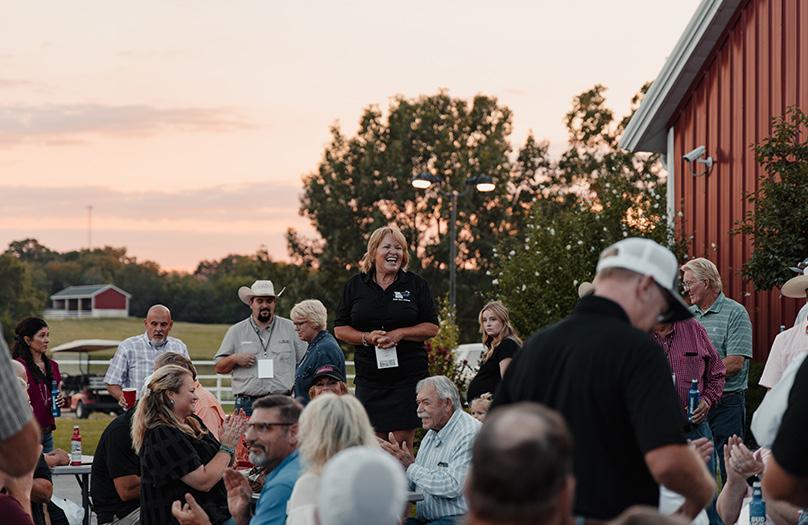
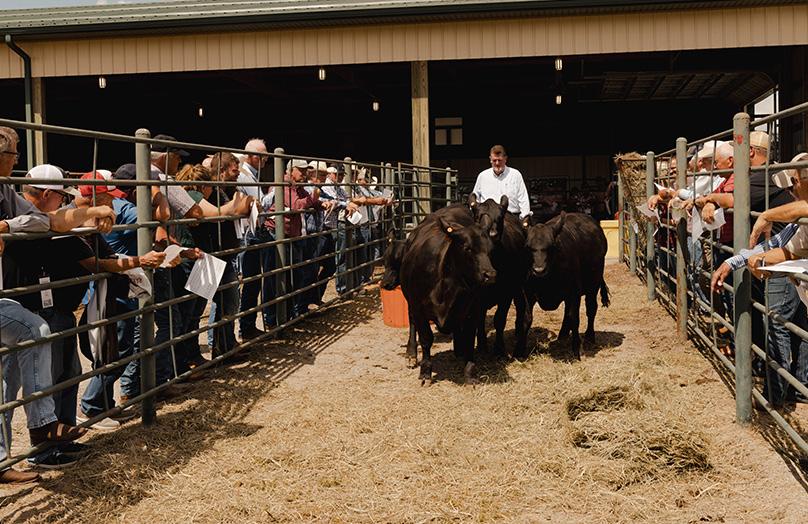












Source: USDA
Cattle and calves on feed for the slaughter market in the United States for feedlots with capacity of 1,000 or more head totaled 11.1 million head on September 1, 2025. The inventory was 1 percent below September 1, 2024.
Placements in feedlots during August totaled 1.78 million head, 10 percent below 2024. Net placements were 1.73 million head. During August, placements of cattle and calves weighing less than 600 pounds were
355,000 head, 600-699 pounds were 265,000 head, 700799 pounds were 390,000 head, 800-899 pounds were 420,000 head, 900-999 pounds were 260,000 head, and 1,000 pounds and greater were 90,000 head.
Marketings of fed cattle during August totaled 1.57 million head, 14 percent below 2024. Marketings were the lowest for August since the series began in 1996.
Other disappearance totaled 51,000 head during August, 6 percent below 2024.





Source: University of Missouri Extension
COLUMBIA, Mo. – As harvest nears, University of Missouri Extension agronomy specialists see signs of flash drought creeping into Missouri farmland and threatening crop yields.
According to MU Extension state climatologist Zachary Leasor, the U.S. Drought Monitor map for Missouri released on Sept. 4 shows that 93.68% of Missouri is at least abnormally dry following an unusually wet spring.
The southeastern and southwestern parts of Missouri are hardest hit, but the rest of the state except for northwestern Missouri is showing emerging signs of drought.
Soybean Specialist: Anticipate Harvest
The rain shortfall comes just as most soybean are in the seed-filling stage, when demand for water is highest to produce and transfer photoassimilates into seed reserves, says MU Extension state soybean farming systems specialist Andre Froes de Borja Reis.
“Under dry conditions, soybean seeds may become undersized, resulting in yield loss,” Reis says.
He recommends that growers consider anticipating harvest. “Drought has already reduced seed formation in some regions and planting date scenarios, and any rainfall on harvest-matured beans could trigger seed deterioration and price penalties,” he says.
Undersized and overdried beans are particularly vulnerable to deterioration if rainfall there’s rain after harvest maturity. Beans with low moisture content become especially prone to damage following rainfall, says Reis.
Low test weights are already expected due to drought during the seed filling, as predicted by the University of Missouri’s Soybean Growth and Yield Tool.
Something similar happened in the 2024 growing season when Hurricane Helene brought heavy rainfall to southern Missouri in late September, exposing mature beans to excessive moisture.
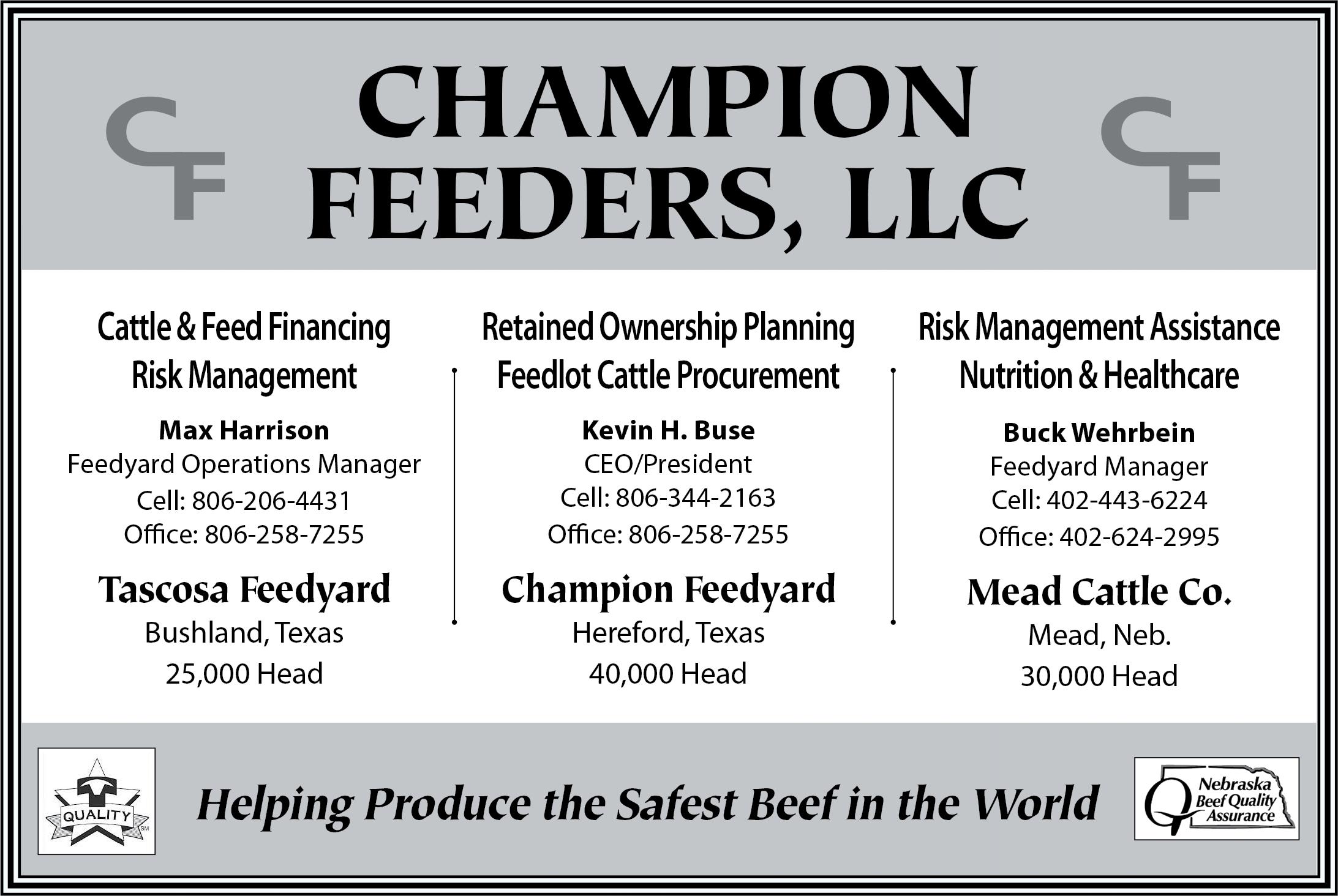
However, seed deterioration and other quality issues only became apparent after the storm. Deteriorated seed from the 2024 storm was tested and found to contain species of Fusarium, Cercospora and Diaporthe, which can lead to dockage at the elevator, says Mandy Bish, MU Extension state plant pathologist. Learn more from the MU Integrated Pest Management article “Soybean Seed Deterioration in Southern Missouri.”
Reis notes that the Soybean Farming Systems Yield Prediction Tool currently forecasts a yield decrease in several areas. More details are available at MU Extension Soybean Growth Monitoring.
Weed scientist: Watch for herbicide carryover
MU Extension weed scientist Kevin Bradley says growers should watch for herbicide carryover to cover crops that will be seeded or planted soon. Residual herbicides applied later than usual in corn or soybean this year may not have fully degraded because of dry conditions at the end of the season. This creates the potential for injury of cover crops species planted in the coming weeks, says Bradley.
“With rapid corn senescence and drought conditions, farmers should scout for stalk and ear rots, as some fungal pathogens favor these stresses,” says Bish.
The “push test” is a simple way to assess lodging risk: Push 20 plants in five areas of a field about 45 degrees. A weak stalk will snap or break, while a strong one will remain intact.
Bish advises prioritizing early harvest for fields where more than 10%-15% of stalks are weak or where noticeable ear rot is present, as many ear rot fungi continue to grow until grain moisture falls below 15%.
Find more information in “An Overview of Ear Rots” from the Crop Protection Network.
No Immediate Relief in Sight Leasor says no significant rainfall is forecast, and tropical storm relief like last year is unlikely.
Preliminary data for August 2025 indicated this was Missouri’s second-driest August on record, with just 0.79 inches
of statewide average precipitation. Springfield saw its driest August ever with only 0.19 inches, and Columbia recorded 0.11 inches, its second driest.
“This is a classic flash drought, developing rapidly after a wet growing season,” Leasor says.
Since the 1980s, Missouri has experienced 16 drought disasters costing $1 billion or more each in damages, underscoring the need for proactive management, he says.
More Information
Missouri Climate Center: http://climate.missouri.edu or https://www.facebook.com/missouriclimatecenter.
MU Extension drought resources: https://muext.us/ DroughtResources.


Source: American Gelbvieh Association
LINCOLN, Neb. – The American Gelbvieh Association (AGA) has released three new economic selection indexes and four new EPDs that are now available to all AGA members and stakeholders.
“AGA is excited to introduce these new selection indexes to commercial cattlemen. They combine relevant traits and applicable pricing information to create tools that will assist producers in finding animals that best fit their ranch profitability model. The new EPDs bolster AGA’s impressive suite of traits that can be implemented by both AGA members and commercial producers using Gelbvieh and Balancer® genetics,” said Harold Bertz, AGA executive director.
Economic Selection Indexes
The new indexes are designed around three common production/marketing scenarios as described below. All three indexes are based on a breeding system where Gelbvieh bulls are mated to Angus-based cows and include selection criteria (EPDs) for economically relevant or key indicator traits. Summary statistics and percentile ranks will be reported through the DigitalBeef portal. Each index has been carefully designed and reviewed, and is described below with its selection criteria. Commercial producers should utilize the selection index whose production scenario most closely matches their production system.
Maternal Profit Index (MPI): In this production scenario, Gelbvieh bulls are mated to Angus-based cows with surplus calves marketed at weaning, with replacement heifers retained from the calf crop. EPDs weighted in this index are Calving Ease Direct (CED) and Maternal (CEM), Weaning Weight (WW), Milk, Mature Weight (MW), Dry Matter Intake (DMI), Stayability (STAY), and Heifer Pregnancy (HP). Mature weight is the primary driver and represents the significant cost of maintenance energy requirement in the cow-calf sector. Weaning Weight and Milk (expressed in pounds of calf weaning weight) represent the principal revenue stream. Stayability helps account for differences in replacement costs in the system and the effect of heifer retention on revenue streams. This index should be used by commercial cattlemen whose production scenario includes the traditional marketing of calves at weaning and replacement retention from the herd.
Feeder Profit Index™ (FPI™): Envisioned as a completely terminal index, FPI assumes all calves are marketed as finished beef carcasses priced on a valuebased grid. Thus, it shouldn’t be used in production scenarios where replacements are kept from these matings. The new FPI formulation more precisely weights economically relevant traits available for selection, including the key carcass traits of Carcass Weight (CW), Ribeye Area (REA), and Dry Matter Intake (DMI) that were not included in the original formulation. The new FPI also weights Fat Thickness (FAT), post-weaning Average Daily Gain (ADG), and

Calving Ease Direct (CED). Carcass value determined by carcass weight, quality, and yield grade influencing traits accounts for approximately 75% of the index as principal revenue drivers. Dry Matter Intake captures differences in expected costs to the terminal carcass endpoint.
Total Profit Index (TPI): Combining replacement female retention from the herd with carcass endpoint for marketed surplus heifers and all steers, TPI balances both maternal and terminal selection criteria. Because of the challenges faced by commercial cattlemen by the antagonisms in selection for this production scenario, TPI includes the largest and most diverse set of EPDs in the model, including carcass traits as the primary revenue drivers with cow Mature Weight (MW), Stayability (STAY), and Dry Matter Intake (DMI) as cost drivers.
Implementation of the new Gelbvieh indexes into sire selection decisions is simple and straightforward. Each index is reported in dollars and represents the differences of sires’ progeny values when produced under each of the specific scenarios. The index values reported are on a per conceived calf basis. It is expected that users of the indexes generally conform to the respective production circumstances.
The new Gelbvieh-specific selection indexes present an unprecedented opportunity for breeders and commercial cattlemen to select the right bulls for improved profit potential. These tools provide a simple, efficient, and impactful multiple trait selection strategy for producers in each of the common production scenarios.
Mature Weight (MWT): Body weight of cows adjusted to six years of age at body condition score 5. MWT is reported in pounds and is computed from a genetic model that leverages information from weaning weight, post-weaning gain, and mature weights of cows. Reported weights are adjusted for both age at observation and for body condition. Body weights of cows 2 to 12 years of age are utilized in the evaluation,
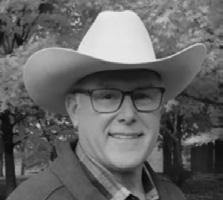

so producers can report data at any age for the evaluation. Preferably, cows should be evaluated at or shortly following weaning, as that’s a convenient time for many producers to process cows. Weights collected at other times in the production cycle are acceptable. Producers should measure full contemporary groups on the same day as the observation date, which helps form the contemporary group.
Cow Energy Requirement-Yearly (CERY): Mature body weight, lactation potential, and birth weight are primary predictors of energy requirements. Mature Weight, Milk, and Birth Weight EPD are utilized to inform prediction equations from beef cow nutrition research to estimate differences in energy requirement over a production year. The CERY EPD is reported in pounds of Total Digestible Nutrients (TDN) required for an age 6 cow.
Dry Matter Intake (DMI): the genetic difference in pounds of expected average daily dry matter intake of progeny.
$GAIN: reports the difference in expected marginal value of gain, less the cost of feed to achieve that gain. Reported in dollars of marginal profit, with more positive values representing increased efficiency and profit.

Source: RAAA
DENVER— Gracie Rogers of Princeton, Missouri, was named the Red Angus Association of America’s 2025 Outstanding Junior Member earlier this summer during the Red Angus Youth Expo in Chickasha, Oklahoma. Rogers, a sophomore studying animal science at Iowa State University, currently serves as the Junior Red Angus Association president after two years as secretary. She was also recognized during the 72nd Annual National Red Angus Convention in Loveland, Colorado.
The Outstanding Junior Member Award recognizes young leaders who have contributed significantly to the success of JRA while embodying the character and vision of the Red Angus breed.
Rogers said the recognition came as a surprise.
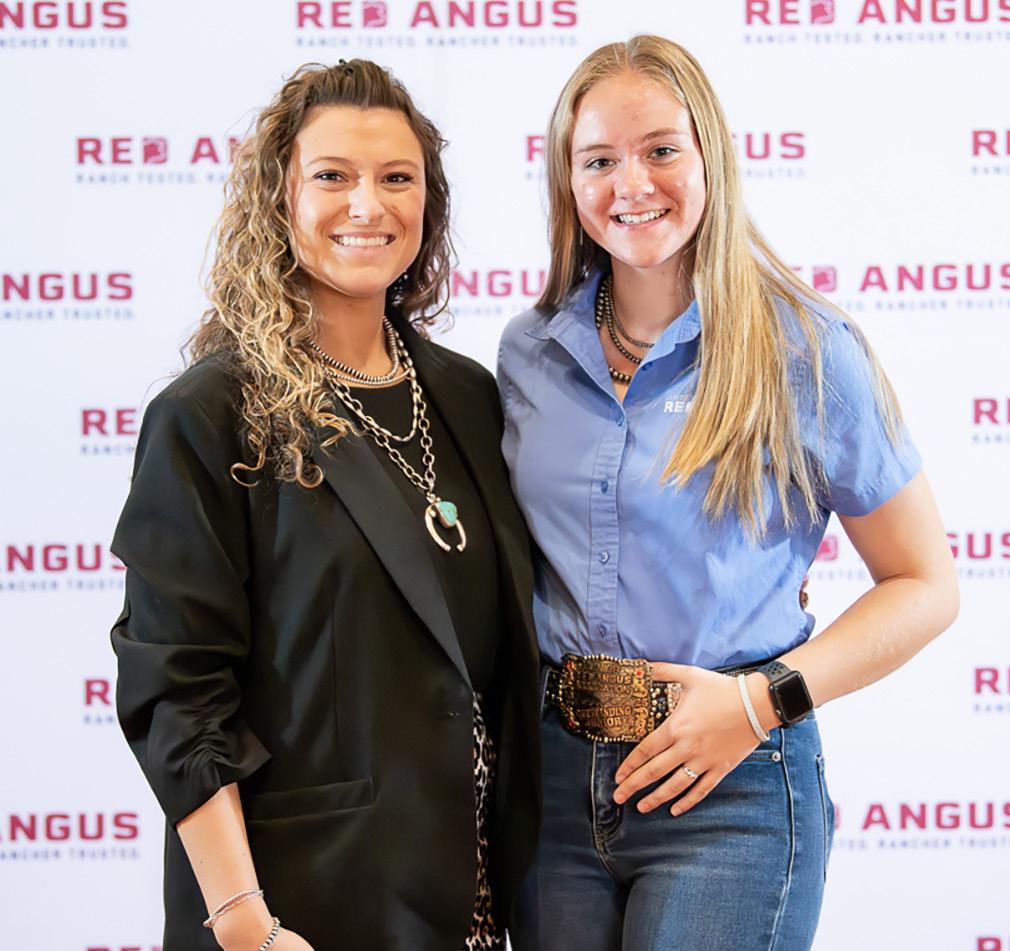
Taylor Dorsey, RAAA Junior Programs Coordinator, alongside Gracie Rogers of Princeton, Missouri, who was recognized as the 2025 Red Angus Outstanding Junior Member at the Red Angus Youth Expo in Chickasha, Oklahoma, and honored again during the 72nd Annual National Red Angus Convention in Loveland, Colorado.


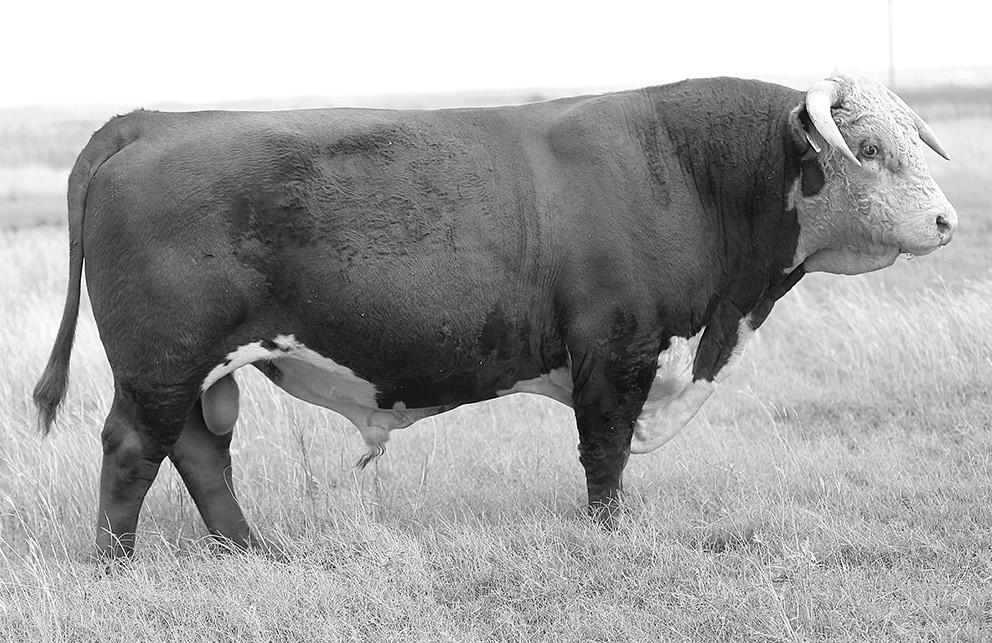

“This award is a huge honor and I was not expecting it at all,” she said. “I’ve never done anything for attention or recognition. I like putting my head down, getting things done and enjoying time with the people around me. Receiving this award really showed me how much that approach has impacted others.”
Raised on her family’s Red Angus operation, Rogers said the breed has been part of her life for as long as she can remember. What began with showing cattle as a child grew into an appreciation for the breed’s progressive mindset and commitment to the future.
“We’re always looking toward the future and how we can improve the industry and the breed,” Rogers said.
Her involvement in JRA took off after attending the Young Stockman’s Program in Columbia, Missouri, which she credits to her father and long-time Red Angus supporter Kim Heller. From there, leadership roles and national events such as Round Up and Young Stockman’s shaped her development.

“Those events forced me to open up, become more outgoing and make new friends,” she said. “They also showed me how important it is to have that leader in your life, you never have to be afraid to go to for help.”
Rogers counts her father as her biggest cheerleader, alongside past junior board members who inspired her to lead. She said her experiences in JRA have broadened her horizons through travel, new connections and fresh management practices she has brought home to Missouri.
Looking ahead, Rogers hopes to pay that inspiration forward.
“I want to continue making a difference in the breed, starting with the juniors – they’re the future,” she said. “I hope younger members see how important it is to be involved, and that they can always come to me with questions or just as a friend.”
Kingsville, Missouri Hwy. 58 • 45 Miles SE of Kansas City, MO Special Cow & Bull Sale Friday, October 17 • 5:00 p.m.


Source: Brenda Black on behalf of Briarwood Farms
Dr. Curtis W. Long of Briarwood Farms annually rewards Missouri State Fair Angus exhibitors who participate in the 4-H and FFA steer show and the carcass contest. In 2025, 12 contenders vied for championship titles and prize money for their contribution to America’s beef supply by showing Angus steers.
Seven of the 12 steers exhibited in the 4-H and FFA shows also entered the Carcass Contest. Kye Lehenbauer from Palmyra with a 1,355 lb. steer out of class 4 won the 4-H Grand Championship and $300 in prize money. Lawson Ogle of Nevada secured Reserve Grand Champion in the 4-H Angus Steer contest with his 1,385 lb. entry. He then took Grand Champion Angus Carcass with his Hotel/Restaurant Window calf grading CH+. The carcass weighed 871 lbs, dressed at 62.9%, with BF 0.6, REA 12.9, YG 3.58, and Percent Retail Cuts at 48.39. Ogle’s total winnings added up to $1,150 in cash prizes from Briarwood Angus Farms.
Blake Fuemmeler of Armstrong and the Glasgow FFA Chapter won the FFA division with a 1,450 lb. steer out of class 6, claiming $300 in cash prizes. Addison Ward of Oak Grove led her Angus calf weighing 1,220 lbs.
1 mile west on Hwy 32 • Buffalo, MO 65622 Barn: 417-345-8122
• Selling 1200 to 1700 head Farm Fresh Cattle weekly
• Special Stock Cow and Bull Sale 3rd Tuesday night of each month at 6:30 p.m.
• Pre-Vac Feeder Calf Sales 2nd Saturday of every month in conjunction with Regular Sale (Pfizer Pre-Vac, BLM BPre-Vac, Bayer Program, Mo Quality Assurance. LMA-Vac and MFA Health Track)
Order Buying Service Available
Owners… Lyle Caselman Leon Caselman 417-345-7876 H 417-345-4514 H 417-533-2944 cell 417-588-6185 cell
into the Reserve status in the FFA Angus Steer show, representing Fort Osage FFA. Ward also took Reserve Angus Carcass with her Hotel/Restaurant entry. The steer dressed at 60.0% with carcass weight of 732 lbs., YG 3.18, REA 12.5, and Percent Retail Cuts of 49.3, earning Ward a total of $950.
Peyson Larrick, with South Shelby FFA, garnered third in the Angus Carcass contest, winning $250 for his 1,165 lb. steer that dressed at 59.6% to render a 694 lb. carcass weight, with YG 3.17, REA 12.1 and Percent Retail Cus 49.31.
Charles Goodnight’s Angus steer claimed the Lean/ Retail Grand Champion title, weighing 1,360 lbs, dressing at 53.2%, with REA of 13.9, YG 1.70 and Percent of Retail Cuts 52.99.
Landon Witherow, of Baring, also received $250 from Briarwood in the Angus Carcass show for Highest Revenue or dollar generating Angus steer with his 1,500 lb. entry producing a 958 lb. hanging weight out of the Lean/Retail division.
Congratulations to all of the Angus youth exhibitors who participated in the MSF Angus Carcass Contest: Charles Goodnight, Billings, Mo.; Larissa Larrick and Peyson Larrick, Shelbina, Mo.; Tyne Lehenbauer, Palmyra, Mo.; Lawson Ogle, Nevada, Mo.; Addison Ward, Oak Grove, Mo.; and Landon Witherow, Baring, Mo. For their entries, each exhibitor receives a $200 Participation Award. All cash prizes will be presented during the Missouri Angus Association 2026 Annual Banquet in February.
For more information about the annual State Fair Carcass Contest, visit https://www.mostatefair.com/ or https://www.briarwoodangusfarms.com/carcasscontests/. And to learn more about the Missouri Junior Angus program, visit https://www.missouriangus.org/ boards/juniors/.



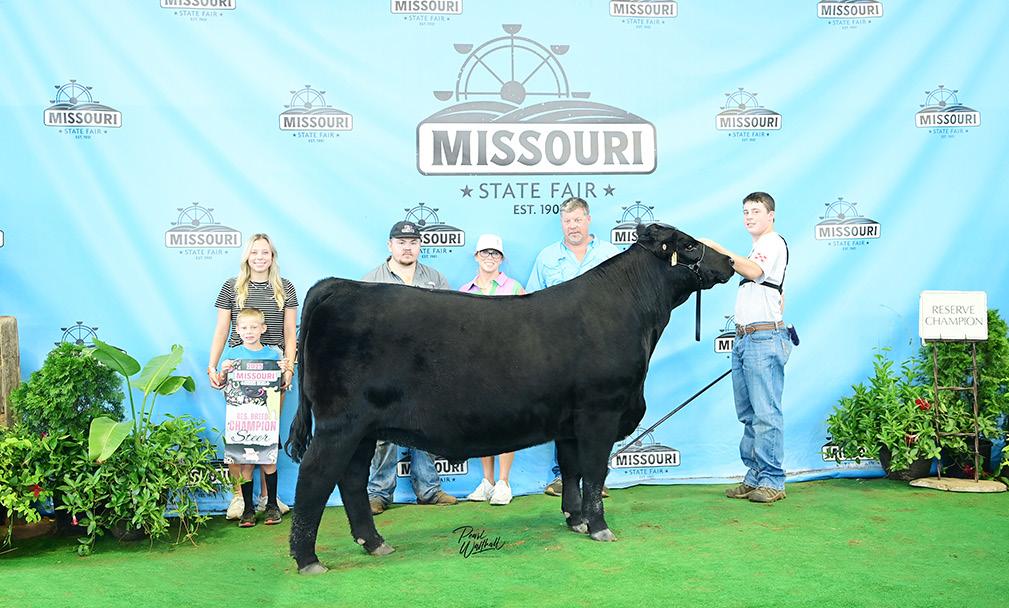
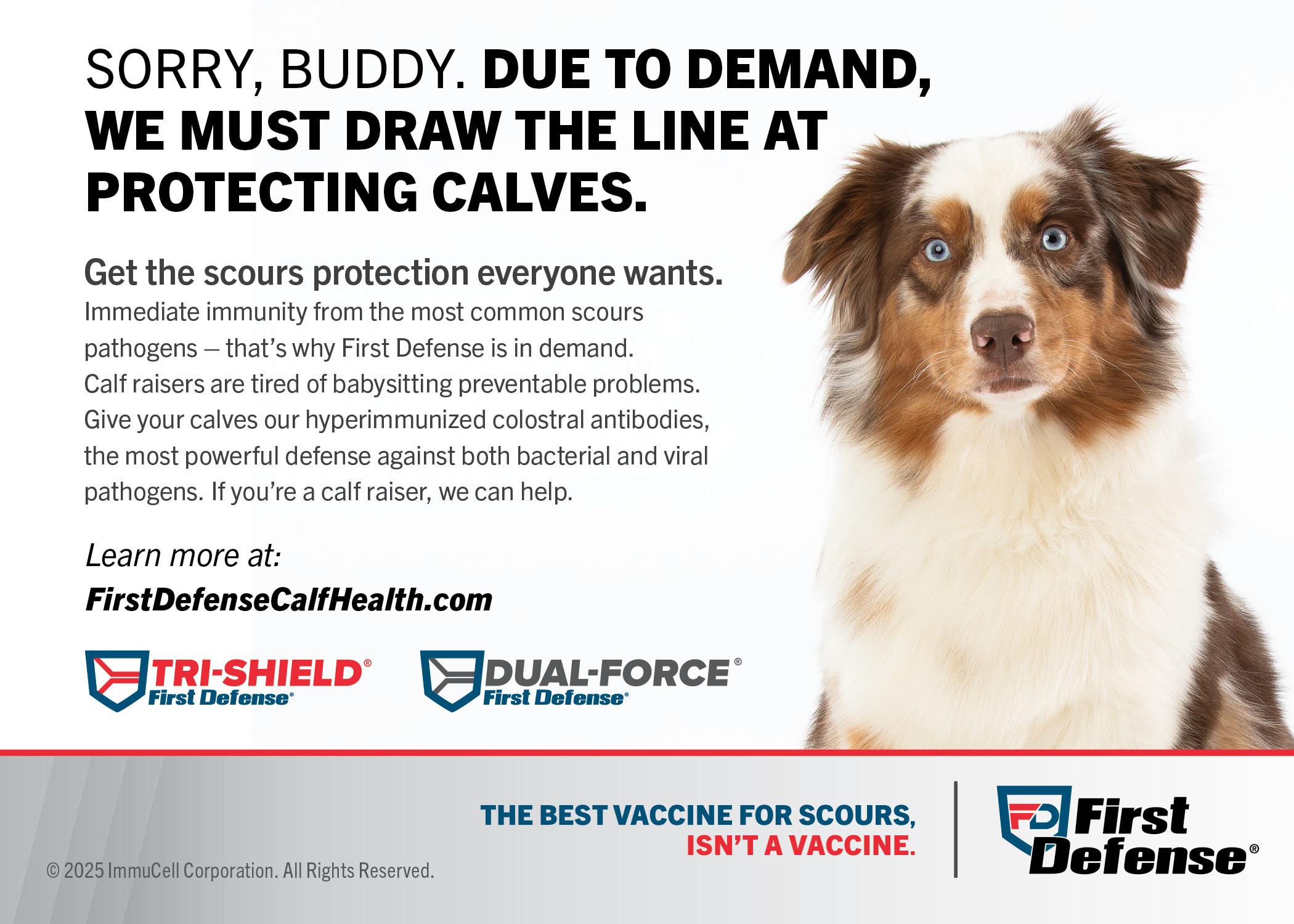
(SEDALIA, Mo.)—The Missouri State Fair celebrated youth in agriculture on Saturday, Aug. 16. The Best of Missouri Awards and Sale was a highlight of the Fair. This sale raised more than $88,000 for Youth in Agriculture.
The Grand Champion Youth Ham was exhibited by Kierstyn Lawson of California. Kierstyn is the daughter of Jason and Stephanie Lawson and is a member of the California FFA Chapter. Her ham sold for $8,250 and was purchased by Greg and Rachel Logsdon, along with Youth in Agriculture and hometown supporters.
The Grand Champion Youth Bacon was exhibited by Paxton Crane of Centralia. Paxton is the son of Travis and Stacy Crane and is a member of the Hallsville FFA Chapter. His bacon sold for $8,900 and was purchased by Brent Hazelrigg, along with Youth in Agriculture and hometown supporters.
The Grand Champion Youth Steer Carcass was exhibited by Ryder Yount of Belgrade. Ryder is the son of Greg and Rebecca Yount and is a member of the CCK 4-H Club. His beef carcass sold for $11,400 and was purchased by American Foods Group/America’s Heartland Packing, along with Youth in Agriculture and hometown supporters.
The Grand Champion Youth Barrow Carcass was exhibited by Kendall Brewer of Sweet Springs. Kendall is the daughter of Tara and Jared Brewer and is a member of the Sweet Springs FFA Chapter. Her pork carcass sold for $8,100 and was purchased by BTC Bank, along with Youth in Agriculture and hometown supporters.
The Grand Champion Youth Lamb Carcass was exhibited by Callen Fosnow of Jamestown. Callen is the son of Daniel and Emily Fosnow and is a member of the Eager Eagles 4-H Club. His lamb carcass sold for $4,400 and was purchased by Walt Group and Sheep Merchandising Council, along with Youth in Agriculture and hometown supporters.


The Grand Champion Youth Meat Goat Carcass was exhibited by Gavin Conrad of Hume. Gavin is the son of Ryan and Kayla Gander and William Conrad and is a member of the Backroads 4-H Club - Vernon County. His goat carcass sold for $5,975 and was purchased by Missouri Southern Seeds and Zac and Bailey Abell, along with Youth in Agriculture and hometown supporters.
The Reserve Grand Champion Ham was exhibited by Aubrey Embry of Clarksburg. Aubrey is the daughter of Debbie Williams and Kent Embry and is a member of the Tipton FFA Chapter. Her ham sold for $4,725 and was purchased by Fordyce Farms and Missouri Soybean Merchandising Council “Brought to you by Missouri soybean farmers and their check-off,” along with Youth in Agriculture and hometown supporters.
The Reserve Grand Champion Bacon was exhibited by Aidon Bolton of Bowling Green. Aidon is the son of Steve Bolton and Amanda Perkins and is a member of the Bowling Green FFA Chapter. His bacon sold for $3,675 and was purchased by the Missouri Soybean Merchandising Council “Brought to you by Missouri soybean farmers and their check-off” and Missouri Pork Producers Association, along with Youth in Agriculture and hometown supporters.
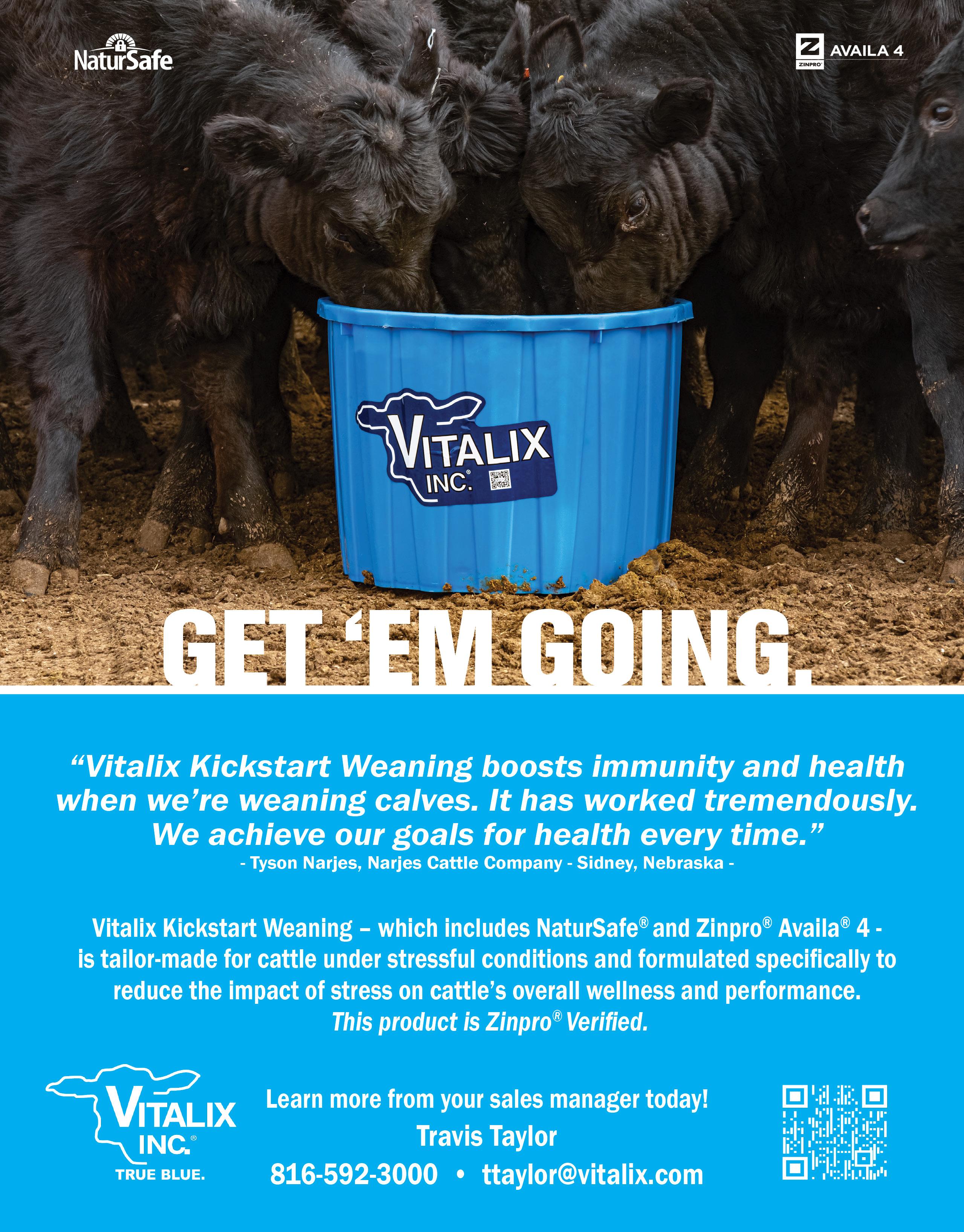

The Reserve Grand Champion Youth Steer Carcass was exhibited by Tyler Wassmann of Boonville. Tyler is the son of Daniel and Melanie Wassmann and is a member of the Boonville FFA Chapter. His beef carcass sold for $5,775 and was purchased by Walnut Hill Farms and BTC Bank, along with Youth in Agriculture and hometown supporters.
The Reserve Grand Champion Barrow Carcass was exhibited by Harper Wolf of Chillicothe. Harper is the daughter of Neal and Brooke Wolf and is a member of the Livingston County 4-H Club. Her pork carcass sold for $7,025 and was purchased by BTC Bank, along with Youth in Agriculture and hometown supporters.
The Reserve Grand Champion Lamb Carcass was exhibited by Joshua Bax of Maryville. Joshua is the son of Matt and Sara Bax and is a member of the NE Bluejays 4-H Club. His lamb carcass sold for $6,725 and was purchased by Mizzou Meat Market and Chuck, Christi, Abby, and Ethan Miller, along with Youth in Agriculture and hometown supporters.
The Reserve Grand Champion Meat Goat Carcass was exhibited by Geena Curtis of Harrisburg. Geena is the daughter of Brian and Elaine Curtis and is a member of the Hallsville Go Getters 4-H Club. Her goat carcass sold for $3,825 and was purchased by BTC Bank, along with Youth in Agriculture and hometown supporters.
Two award-winning baskets of Missouri Grown Products were donated by the Missouri Department of Agriculture’s Missouri Grown Program and sold in custom wood boxes made by former Missouri State Fair Director Mark Wolfe. The proceeds of the Missouri Grown boxes will go to the Youth in Agriculture Scholarship Fund. Box one was purchased by Friends of Missouri Farm Bureau for $2,500 and box two was purchased by Missouri State Fair Commissioners, Missouri Director of Agriculture, and Missouri State Fair Director for $2,500.
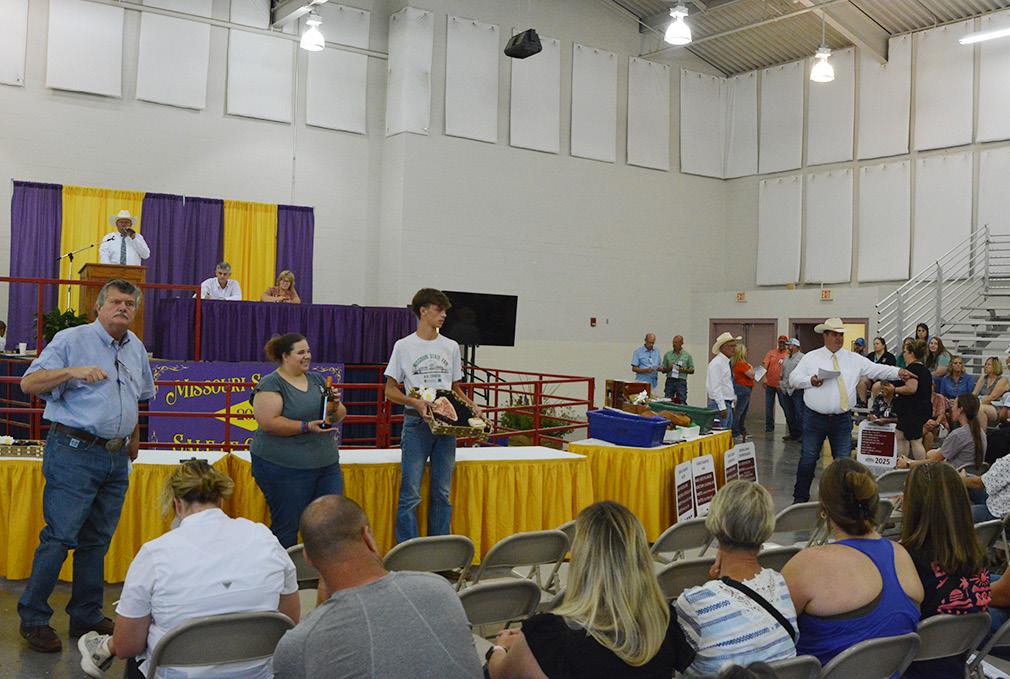
Two award-winning wine collections were donated by the Missouri Department of Agriculture’s Wine and Grape Board and sold in custom wood boxes made by former Missouri State Fair Director Mark Wolfe. The proceeds of the wine boxes will go to the Youth in Agriculture Scholarship Fund. The Best of Class Missouri Wine Collection features 14 bottles of award winning wine and was purchased by Missouri State Fair Commissioners, Missouri Director of Agriculture, and Missouri State Fair Director for $1,500. The Governor’s Cup Wine Case with a bottle signed by Governor Mike Kehoe, featuring Adam Puchta 2024 Dry Vignole, was purchased by Grant Co. for $1,100.
The Best of Class Cheeses were sold in a custom wood box made by former Missouri State Fair Director Mark Wolfe. The award-winning collection of Missouri State Fair Best of Class Cheeses was purchased by Charlie Rosenkrans for $1,500. The proceeds of the Best of Class Cheese Collection will go to the Youth in Agriculture Scholarship Fund.
Chuck Miller, Superintendent of the Sale of Champions and Co-Chairman of the Missouri State Fair Foundation Youth in Agriculture Committee, and Rodney Heimer, Co-Chairman, offered thanks and appreciation to all buyers, Youth in Agriculture sponsors and hometown supporters. The Best of Missouri Sale and the Sale of Champions raised approximately $332,000 for youth exhibitors and youth involved in agriculture across Missouri. A listing of the 2024 Youth in Agriculture sponsors is available on the Fair’s website. A listing of the 2025 sponsors will be posted soon. Anyone interested in becoming a sponsor can visit the Fair’s website to make an online donation. To receive more information about sponsorship, contact Chuck Miller at 573-881-3589, Rodney Heimer at 217-2576182, or Chip Kemp at 573-239-0524.

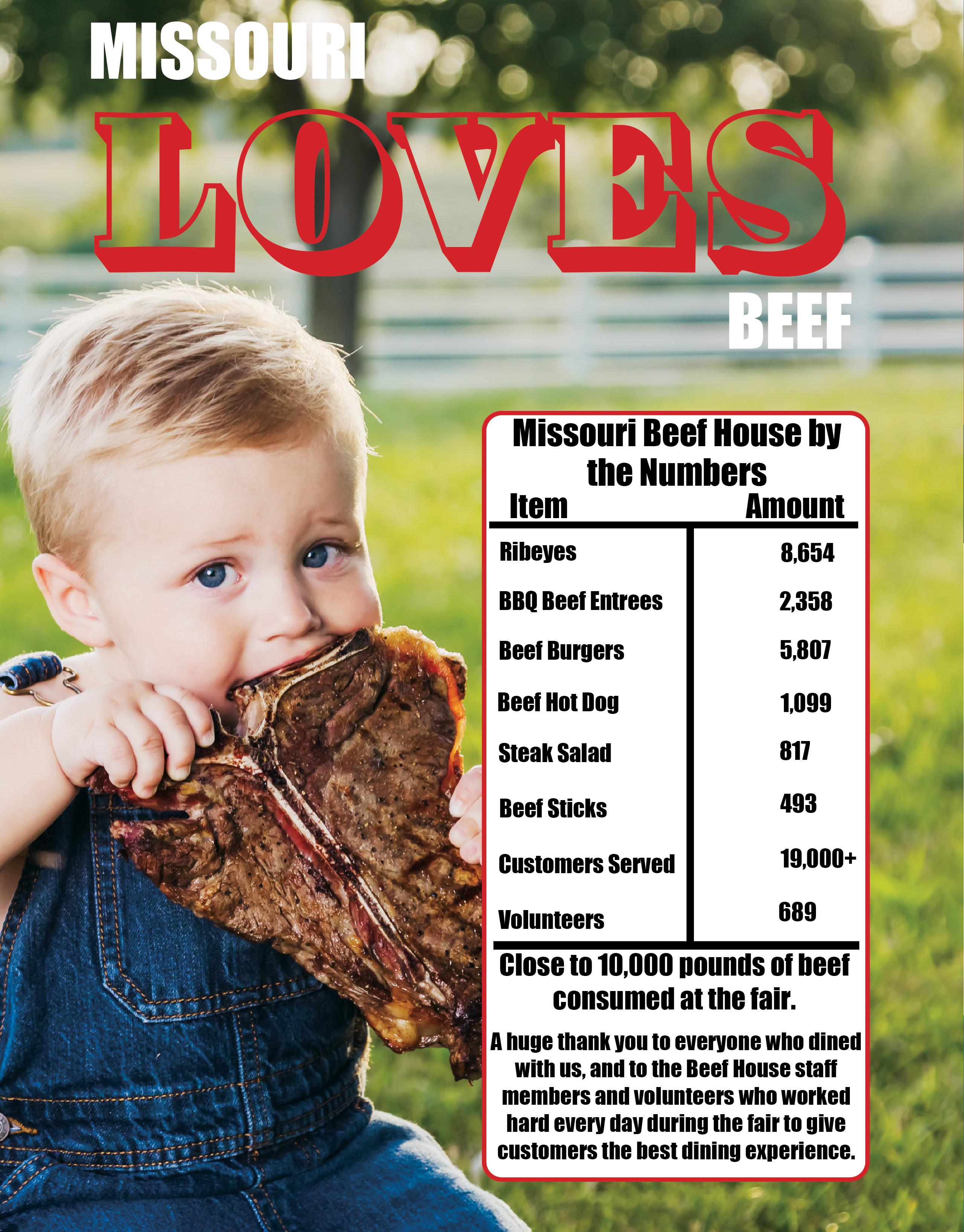
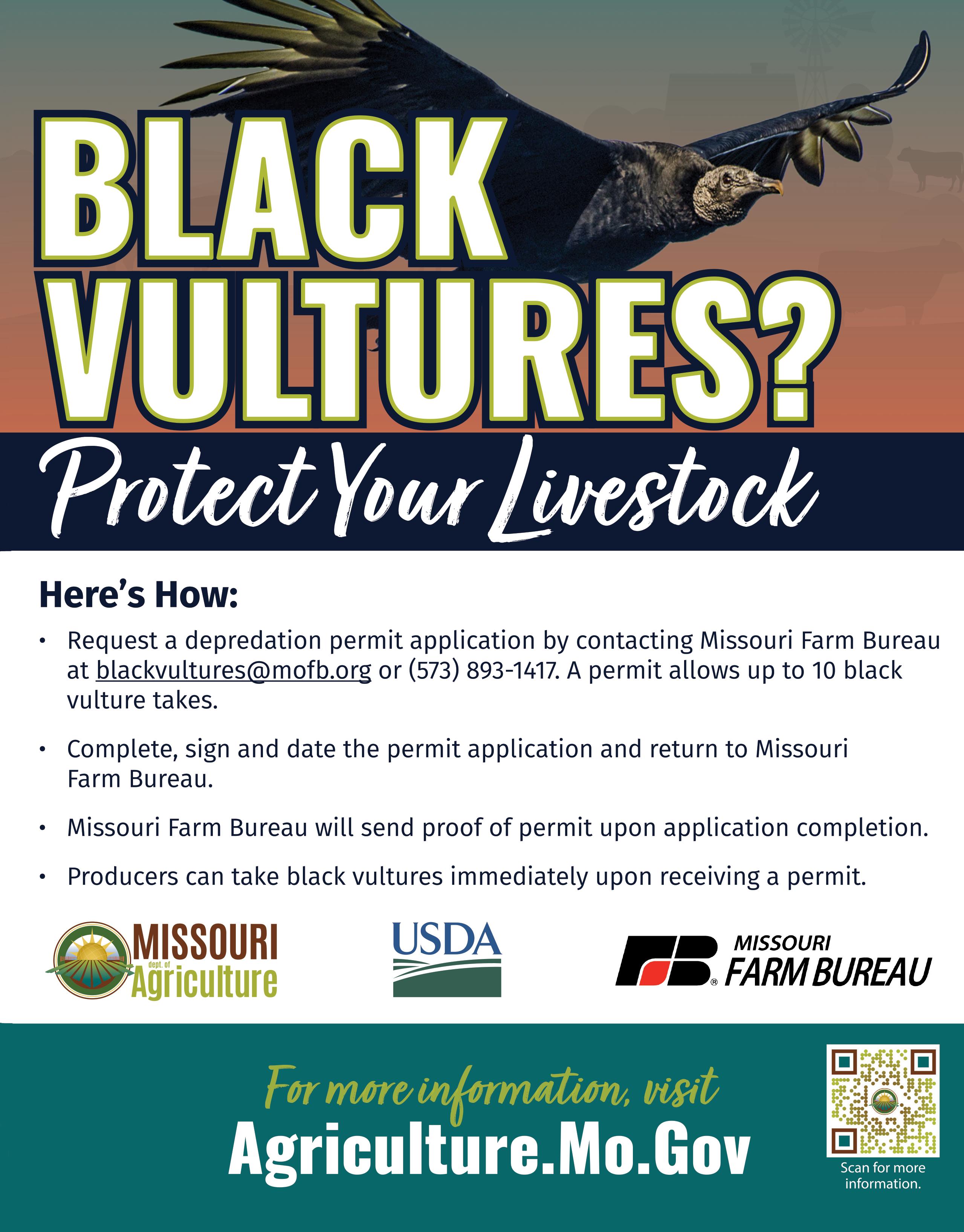

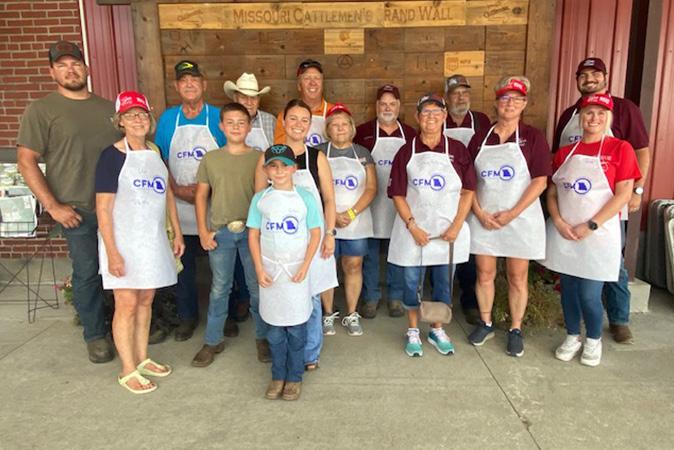

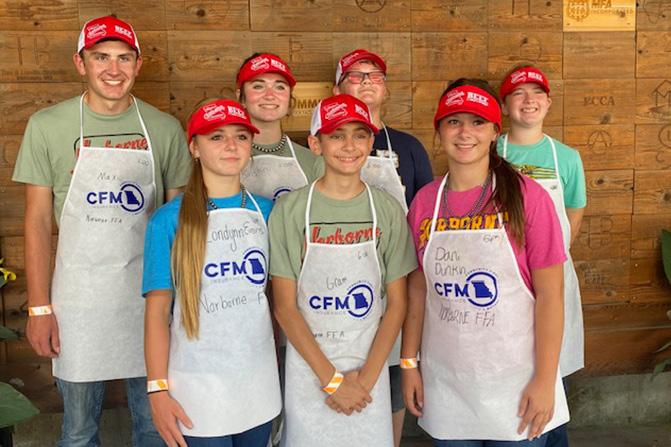
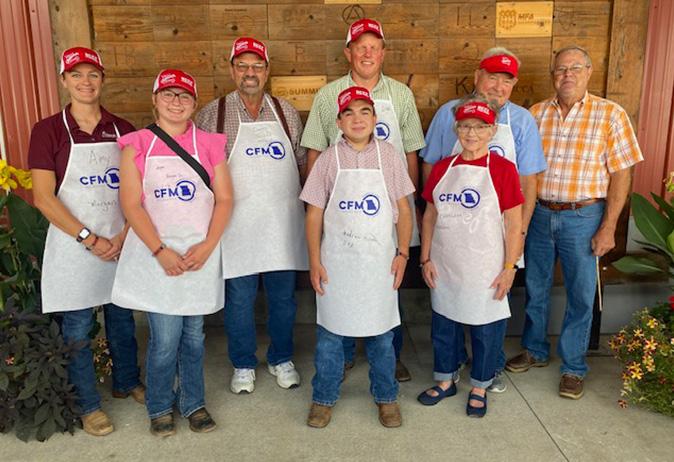
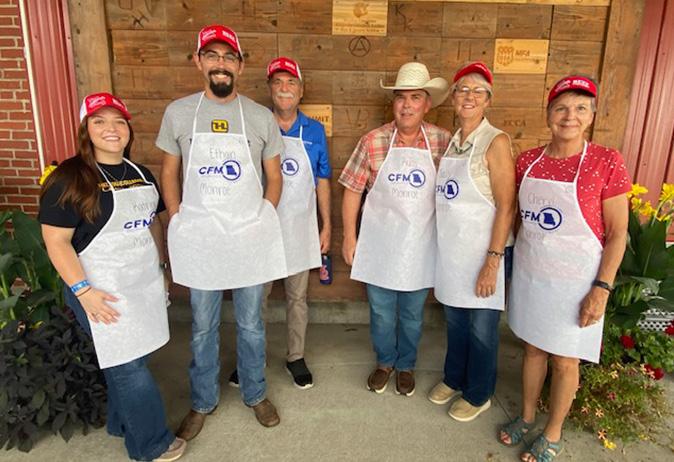


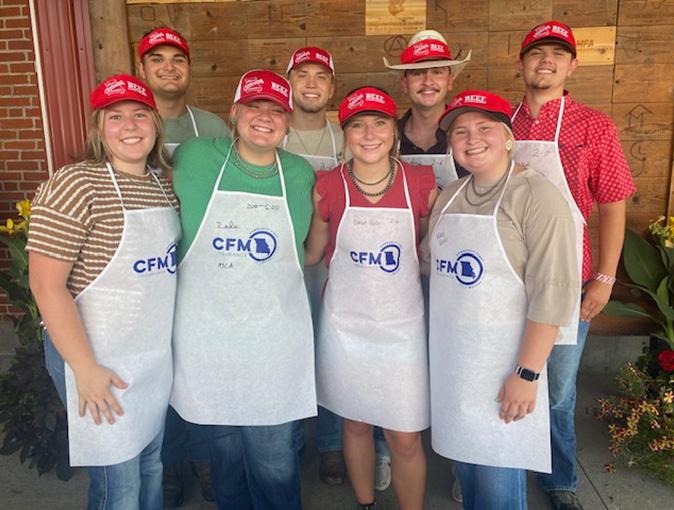
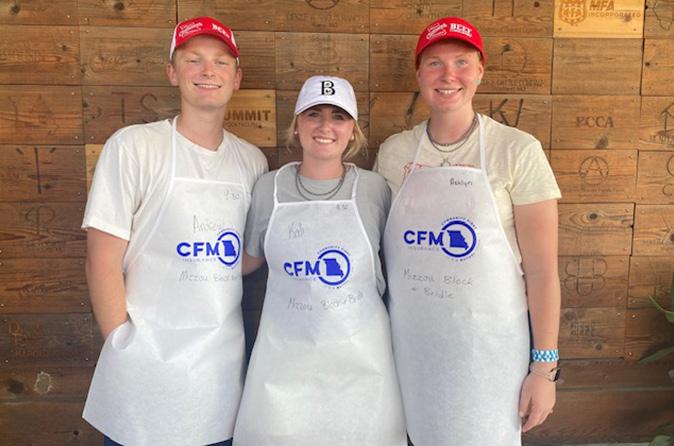

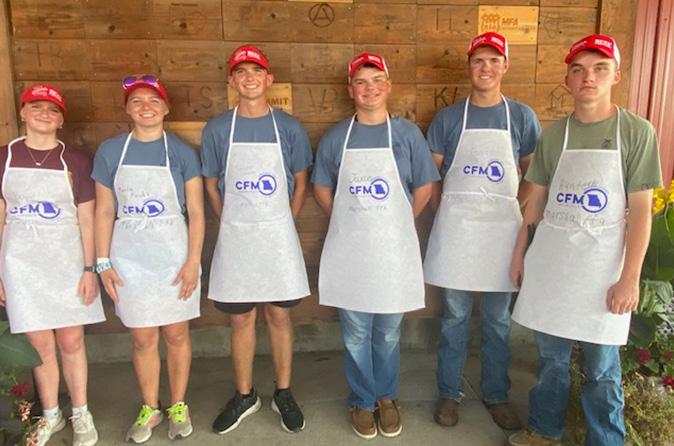




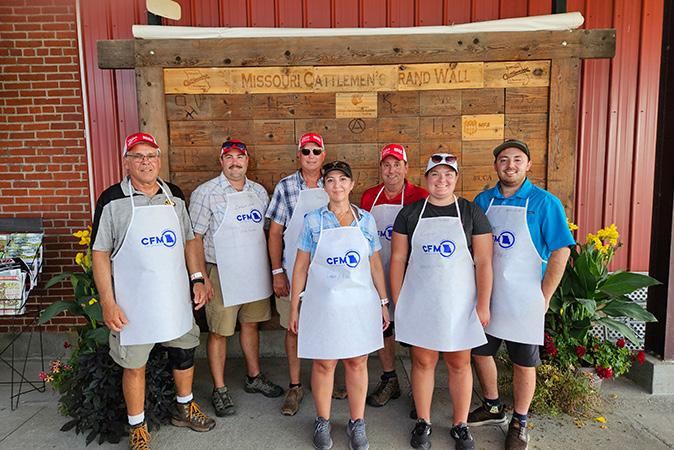
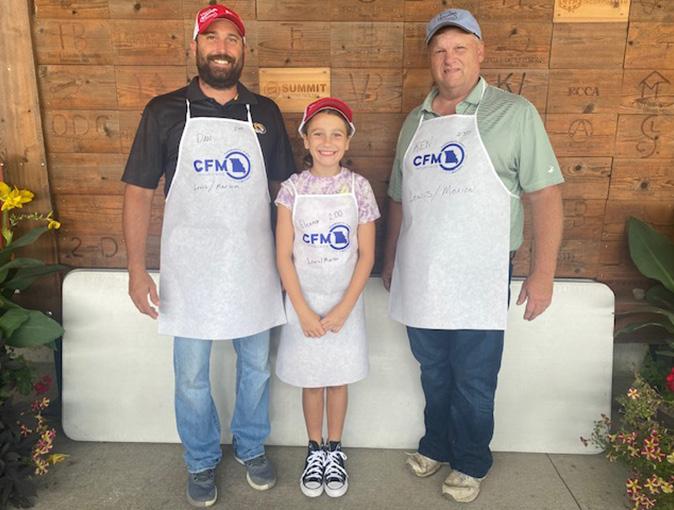

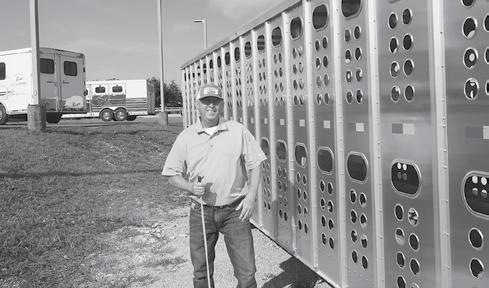
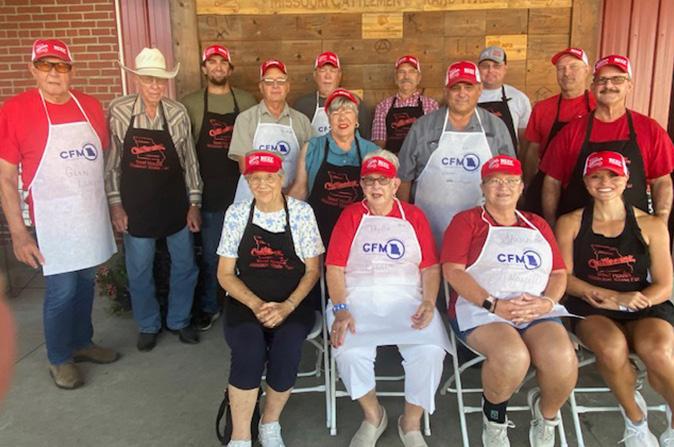



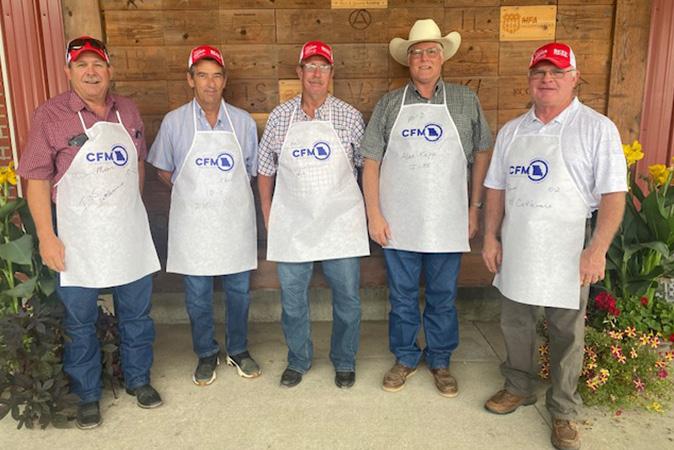
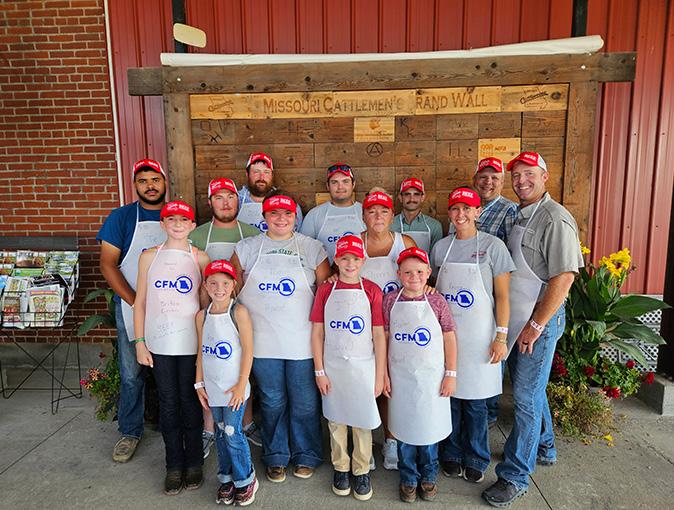



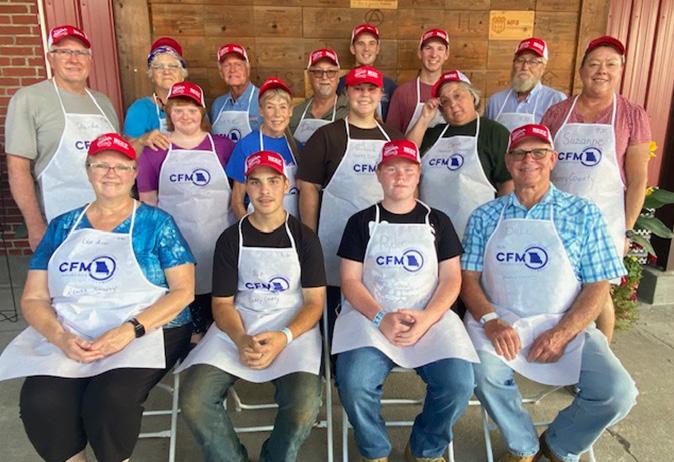











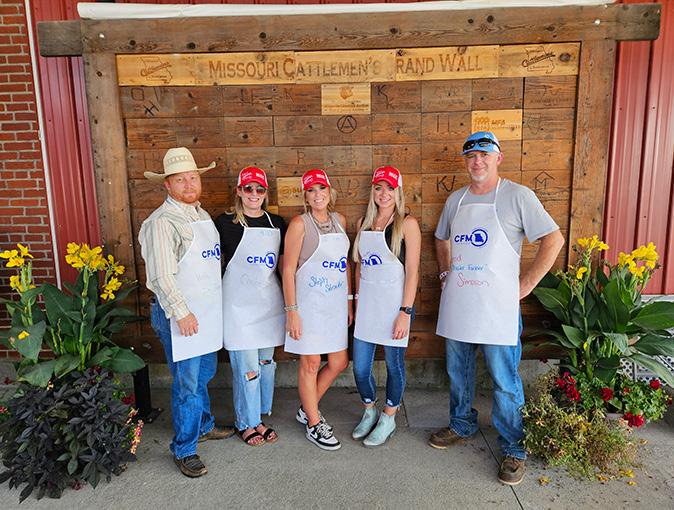


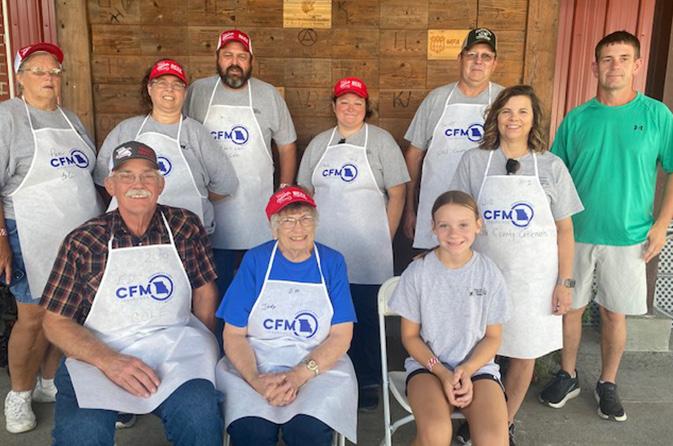








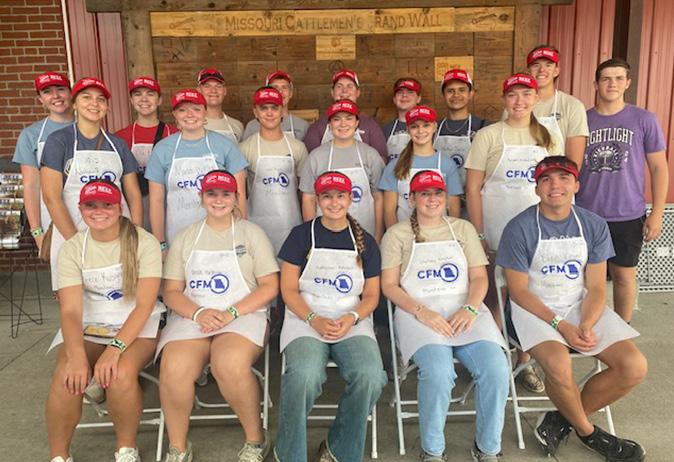
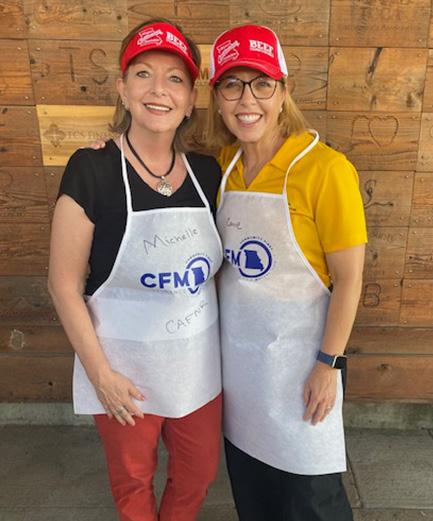

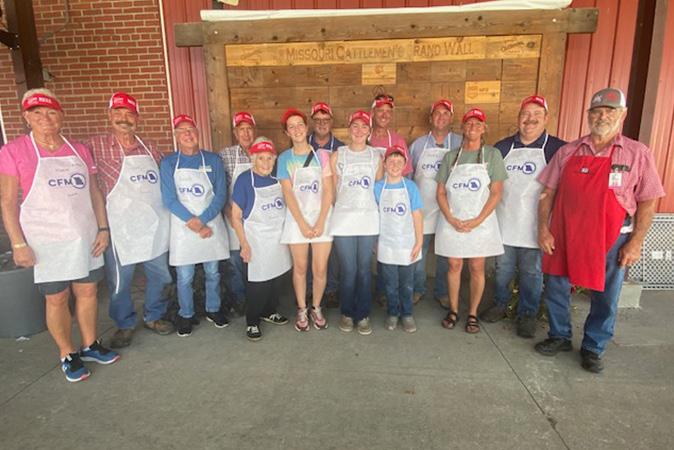
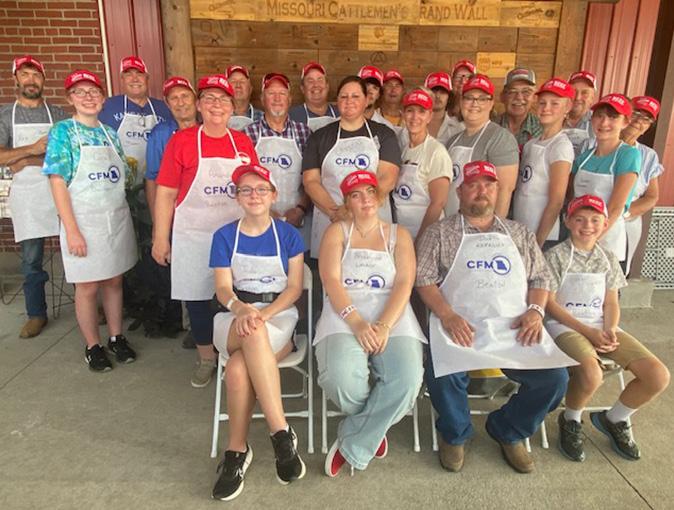




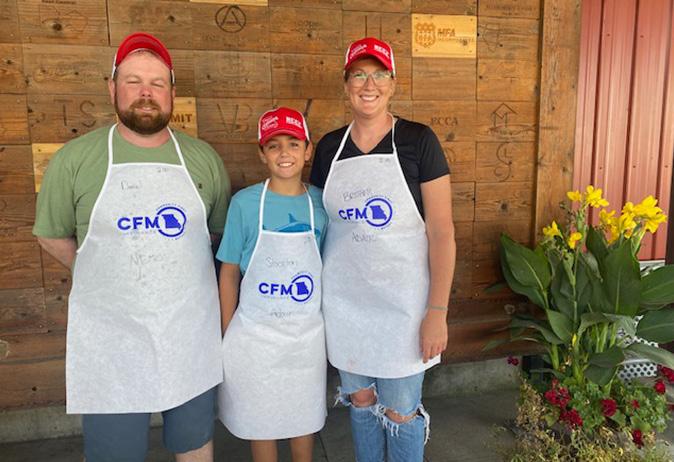


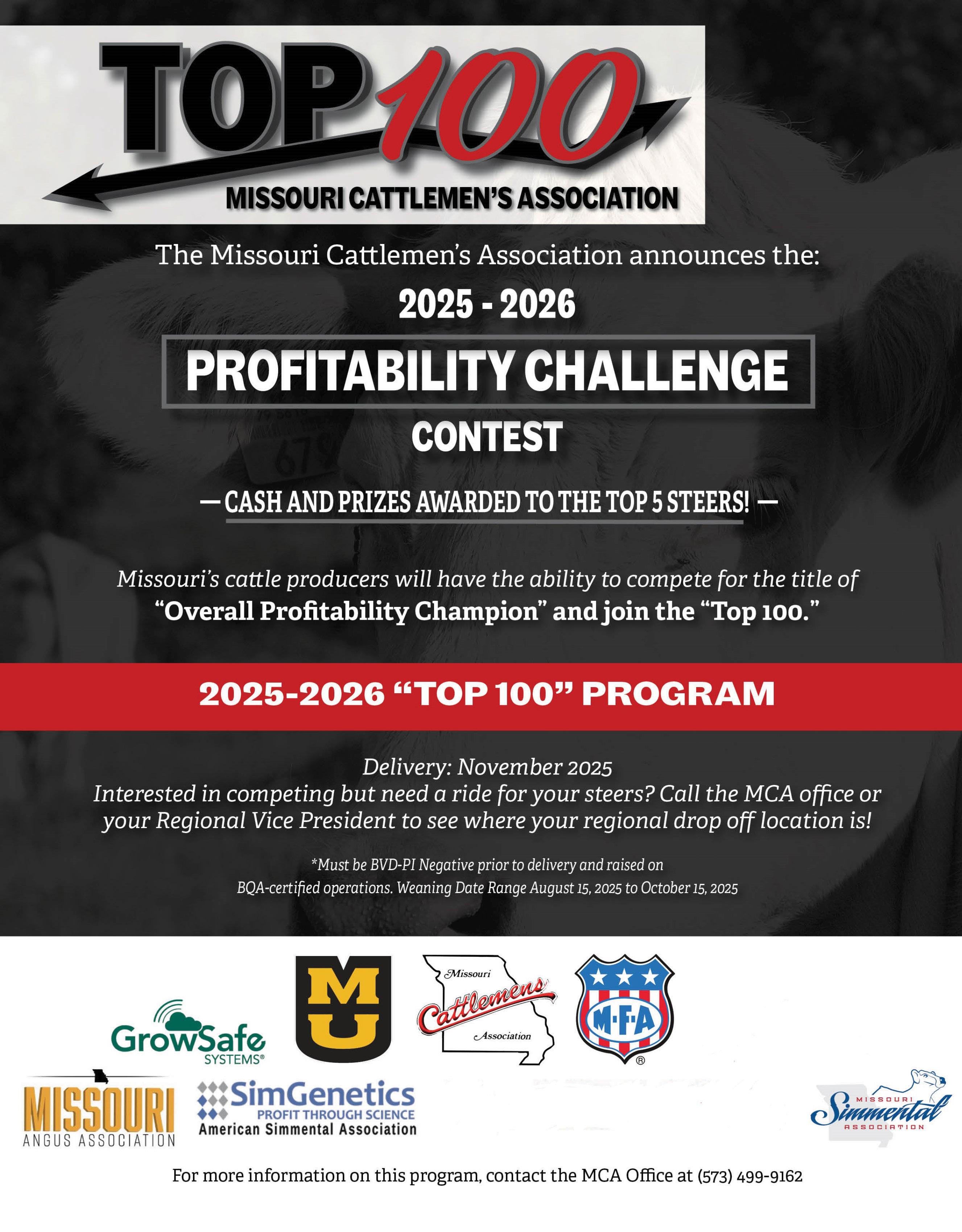




Missouri politics took an unusual—and some would argue reckless—turn during last month’s special session when Governor Kehoe and legislative leadership revisited the state’s congressional district map middecade. Traditionally, redistricting happens once every ten years following the census. This time, however, the push to reopen the maps didn’t originate in Jefferson City or even within Missouri’s borders. Instead, pressure reportedly came directly from President Donald Trump, urging Missouri Republican leadership to strengthen Congressman Emanuel Cleaver’s district for partisan gain.
At first glance, such a move may have seemed advantageous for those seeking short-term political wins. But as anyone who has worked cattle through a muddy lot knows, quick fixes can have long-term consequences. By breaking precedent and reopening the map outside the usual cycle, legislative leaders disrupted fragile norms that have held Missouri’s Senate together through countless storms.
The immediate fallout was unmistakable: the Senate, once proud of its tradition of civility and decorum, was left fractured. What began as a tactical maneuver quickly spiraled into bitter debate and strained relationships among colleagues who must now work side-by-side on other critical issues—many of them deeply important to Missouri agriculture. When trust erodes, so does the ability to build coalitions for rural priorities like water infrastructure and protecting market access for cattle producers.
For organizations like the Missouri Cattlemen’s Association, whose members rely on a functional legislature to advocate for rural communities, the

Nancy Giddens & Shannon Cooper
damage may extend far beyond congressional boundaries. A weakened Senate risks gridlock on everything from transportation funding to disaster relief programs—issues that don’t wear party labels but affect ranchers in every corner of the state.
History offers plenty of reminders that today’s power plays can become tomorrow’s regrets. The same procedural precedent set to benefit one party or faction could be wielded against them when political winds shift. Missouri’s cattle producers understand this principle better than most: you don’t break down a working gate just to speed up one herd, because you may need that gate to hold the next.
Ultimately, the lesson here isn’t about party politics or personalities—it’s about prudence. Missouri’s strength lies in its institutions’ stability and its leaders’ willingness to uphold traditions that keep government functional, even in contentious times. By stepping outside those norms, legislators may have won a fleeting political advantage but at the cost of the Senate’s cooperative spirit.
For cattlemen and women whose livelihoods depend on steady, predictable rules, the takeaway is clear: be careful what you wish for. Short-term victories are rarely worth long-term damage to the relationships and processes that make representative government—and by extension, rural advocacy—work.
Respectfully, Nancy and Cooper
Please take a moment to fill out this short questionnaire to offer your input on MCA’s policy priorities and decision-making for the coming year. Tell us what matters most to your family. The association represents YOU!
USDA Secretary, Brooke Rollins, announced a “five prong” strategy to combat New World Screwworm (NWS), including a plan to build a NWS sterile fly facility in south Texas. The only known way to eradicate the screwworm is a massive supply of sterile male flies. Female flies only mate once in their lifetime. Experts agree NWS will eventually find its way into the United States. USDA officals stated NWS has been found previously in migratory birds, which poses significant threats to Missouri. NWS could be detrimental to Missouri producers and the agricultural economy.
Do you believe state resources should be allocated to the Missouri Department of Agriculture to assist with producer education and
Livestock Risk Protection is a federal insurance program designed to protect livestock producers against declining market prices. It provides a safety net by establishing a floor price for livestock. Pasture, Rangland and Forage insurance is a federal program to protect producers from the financial impact of forage losses due to the lack or precipitation. While crop insurance has been a tool utilized by crop producers since 1938, these two risk management tools for livestock producers are relatively new. Crop insurance is subsidzed at higher rates by the federal government than the LRP and PRF.

In the ruling of the court case Sackett vs. U.S. Environmental Protection Agency, the Supreme Court scaled back regulatory authority under the definition of “Waters of the United States” in the Clean Water Act. Agricultural organizations largely praised this Court ruling.
Do you believe Missouri should examine current waters of the state definitions to ensure they mirror the Supreme Court’s ruling?
The Missouri Public Service Commission plays a vital role in determining which energy projects are granted public utility status with the authority to use eminent domain. Currently, the Public Service Commission is comprised of five commissioners appointed by the governor.
Do you believe MCA should work with other agricultural organizations to ensure agriculture is adequately represented on the Public Service Commission?
Yes, the commission should be expanded to ensure agriculture has representation similar to the Clean Water and Clean Air commissions
No, I prefer we leave the stucture of the commission alone
NO, but I believe the commission needs more oversight when it comes to granting
The USDA National Institute of Food and Agriculture has identified multiple shortages of veterinarians in Missouri. Most of these shortages involve rural area veterinarians with food animal practices, including in the following Missouri counties: Adair; Andrew; Barry; Barton; Bollinger; Caldwell; Cape Girardeau; Cedar; Christian; Clinton; Crawford; Dade; Daviess; DeKalb; Dent; Greene; Knox; Laclede; Lawrence; Madison; Perry; Phelps; Pulaski; Putnam; Ray; Schuyler; Scotland; St. Clair; Ste. Genevieve; Stone; Stoddard; Sullivan; and Vernon Counties. These shortages are exacerbated by the fact that a number of large animal veterinarians serving these areas are nearing retirement.
Technology continues to advance, despite these shortages. The University of Missouri has both Ph.D. and M.S. degrees in its animal sciences program studying advanced reproductive technologies, but current law does not allow them to carry out some of these practices. The Missouri Veterinary Practice Act has not been amended on this topic since 1999, addressing only embryo transfer. Should the Act be amended to allow non-veterinarians trained with advanced degrees to perform reproductive technologies like ovarian oocyte collections?

Should the Act be amended to allow non-veterinarians trained with advanced degrees to perform certain reproductive technologies?
Solar energy is rapidly expanding in rural Missouri replacing traditional agricultural land with solar panels. Many producers are voluntarily leasing land to utility companies for solar energy development. Currently, solar companies are taxed and assessed by the state rather than undergoing local tax assessment like wind energy.
Should MCA support legislation requiring local tax assessment rather than state assessment?
Yes, rural communities need to see economic benefit No, I believe state assessment is fine NOt Sure
Currently, there are no clear requirements on placement of solar panels like there is for livestock feeding facilities and other agricultural structures.
Do you support establishing policy to support mandatory setback distances from residences, businesses, schools, etc?
The current political climate in Washington, D.C., has created uncertainty about government subsidizing solar energy. If federal subsidies are discontinued, the concern is whether the property will be returned to its original state or be left with decommissioned panels.
Do you support developing policy to require the state of Missouri to establish mandatory decommissioning requirements for solar
The Missouri Parks, Soils and Water Sales Tax will be on the ballot for renewal in 2026. This 1/10th of one percent sales tax is divided 50/50 between state parks and the state soil and water conservation program. The soil and water dollars are used to help farmers implement voluntary soil and water conservation practices on their operation through local Soil and Water District Boards.

Have you utilized the soil and water program to implement rotational grazing, nutrient management or other conservation practices?
Do you support renewing the 1/10th of one percent sales tax to prevent it from expiring in 2028?
Regarding state issues, what do you believe should be the top policy priority for MCA in 2026?

This is your opportunity to say anything you want regarding MCA and its efforts on the policy front. All comments will be made availPlease return the completed survey to MCA (2306 Bluff Creek Drive, Columbia, MO. 65201) by November 1, 2025. This survey will also be e-mailed to all members who have an e-mail address on file.
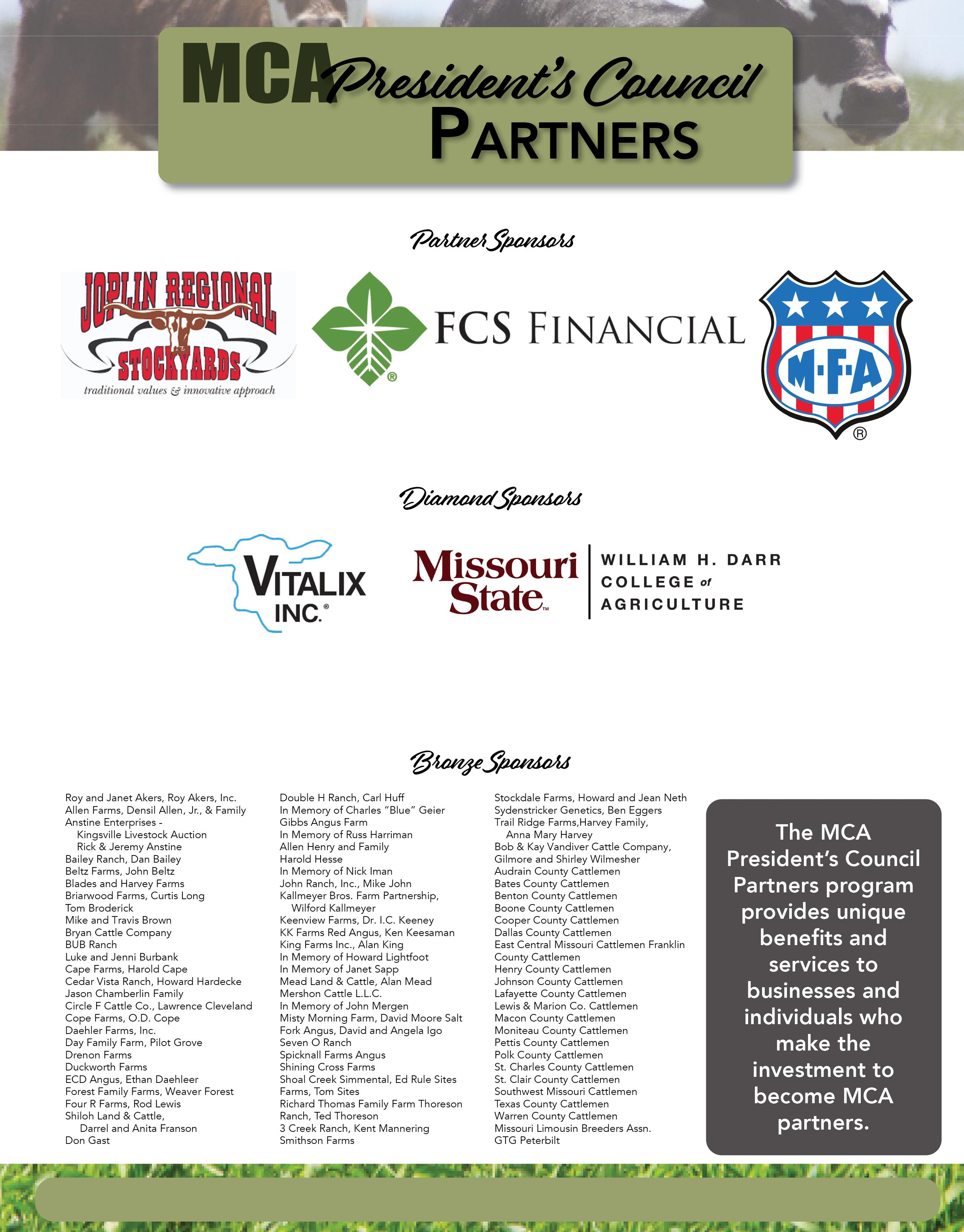

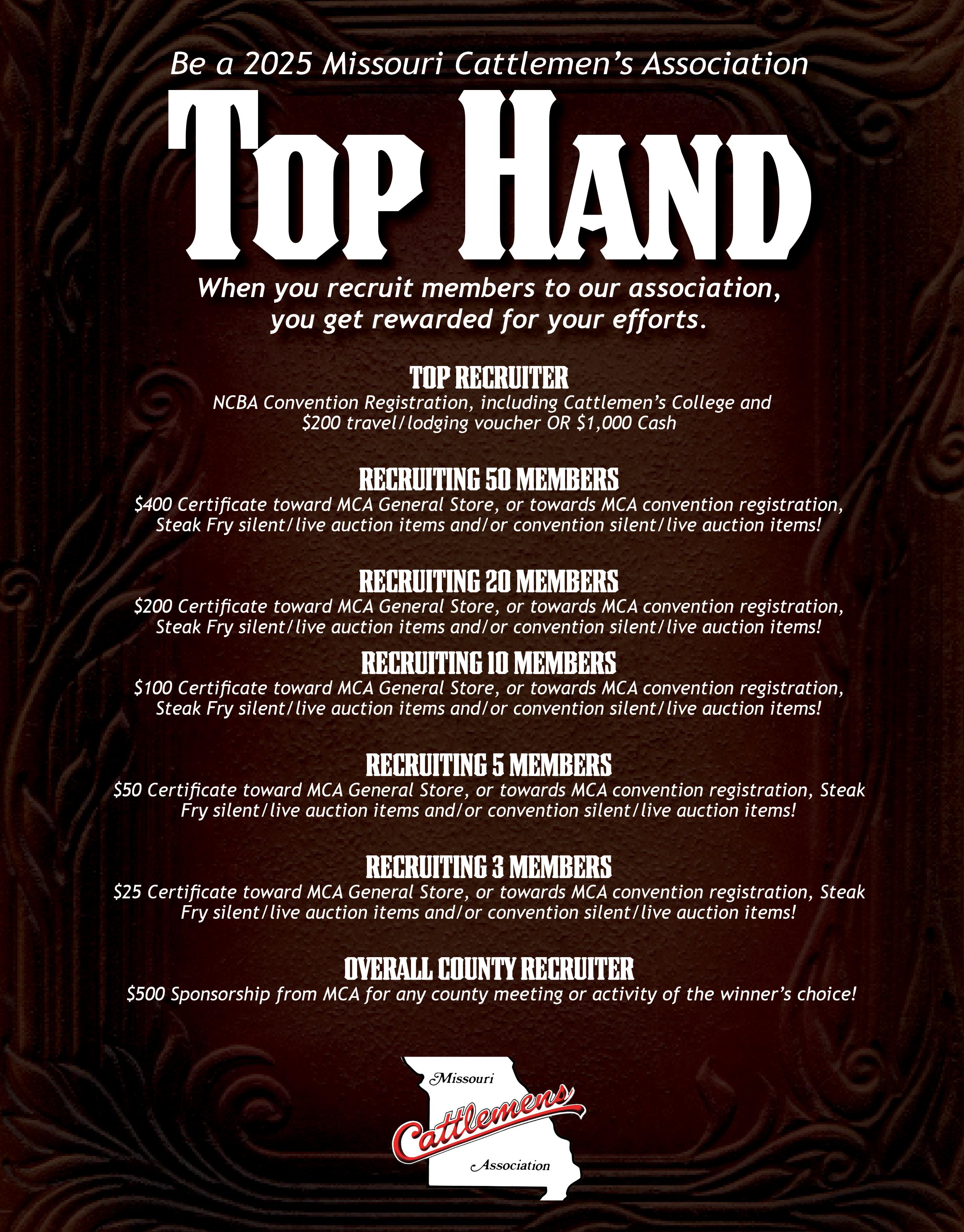
Executive & Board of Directors Meeting Dates
February 15 – Executive Committee
March 29 – Board of Directors Meeting
June 21 – Executive Committee
July 19 – Board of Directors Meeting
October 9 – Executive Committee - Conference Call
November 6 – Board of Directors Meeting
January 2026 – Executive Committee
January 21-23, 2026 – Board of Directors Meeting & MCA Annual Convention
Special Events
March 29 – Board of Directors Meeting (MCA Headquarters)
May 9 – Profitability Challenge Open House (South Farm)
June 12-15 – Missouri Cattlemen’s Youth Expo (State Fairgrounds – Sedalia)
June 14 – Past Presidents Steak Fry & PAC Auction (Agriculture Building – Sedalia)
August 7-17 – Missouri State Fair (State Fairgrounds – Sedalia)
August 22-24 – MJCA Youth Industry Tour
September– Session 2 of MCLC (Agribusiness Tour)
September 11 – MCF Golf Tournament (Tanglewood Golf Course, Fulton)
September 18 – MCF Farm Safety College (University of Missouri – Columbia, MO)
September 19 – MSU Farm Safety College (Darr Ag Center, Springfield, MO)
January 21-23, 2026 – MCA Annual Convention
Tentative Events
Profitability Challenge Awards Ceremony (September or October)



Oct. 3
Oct. 4
Oct. 4
Birk Genetics Sale, Jackson, MO
Bradley Cattle Co. and Hankins Farms Fall Colors Sale, Republic, MO
MSU/Journagan Genetically Yours Production Sale, Springfield, MO
Oct. 4 Lucas Cattle Co. Fall Bull Sale, Cross Timbers, MO
Oct. 4 J&N Black Hereford Ranch Herd Builder Sale, Leavenworth, KS
Oct. 6
Oct. 6
Oct. 7
Express Ranches Fall Bull & Commercial Female Sale, Yukon, OK
HeartBrand Family Matters Wagyu Sale, Online
Cantrell Creek Angus Sale, Marshfield, MO
Oct. 10 Smith Valley Angus Bull & Female Sale, Salem, MO
Oct. 10-26 American Royal Fall Livestock Show, Kansas City, MO
Oct. 11
Byergo Angus Sale, Savannah, MO
Oct. 11 East Central Missouri Angus Ass’n Sale, Cuba, MO
Oct. 11
Oct. 11
Oct. 15
Oct. 16-17
Leachman Cattle Fall in the Ozarks Bull Sale, Ozark, AR
New Day Beef Genetics Fall Bull Sale, Salem, MO
Peterson Prime Angus Sale, New Boston, MO
Miller Cattle Co. Forward Focus Bull and Embryo Sale, Olean, MO
Oct. 18 3C Cattle Co. Sale, Carrollton, MO
Oct. 18
Oct. 18
Seedstock Plus Fall Bull & Female Sale, JRS - Carthage, MO
Gerloff BullFest Sale, Bland, MO
Oct. 18 Fred Smith Company Ranch Fall Sale, Clayton, NC
Oct. 18
Shaver Angus Bull Sale, Norwood, MO
Oct. 18 Fink Beef Genetics Annual Fall Bull and Female Sale, Randolph, KS
Oct. 18 Angell-Thomas Charolais Bull & Female Sale, Paris, MO
Oct. 20 Hinkle’s Prime Cut Angus Sale, Nevada, MO
Oct. 21 Missouri Shorthorn Association Online Production Sale
Oct. 24 T Bar S Focused on the Future Bull Sale, Billings, MO
Oct. 24 Charolais Sale at the American Royal, Kansas City, MO
Oct. 24
Henry County Land Auction - Martin Farm, Blairstown, MO
Oct. 25 Lacy’s Red Angus & MC Livestock Annual Production Sale, Drexel, MO
Oct. 25
Bradley Cattle Co. Bull Sale, Osceola, MO
Oct. 25 Mead Farms Sale, Versailles, MO
Oct. 26
Oct. 26
Oct. 27
Missouri Angus Ladies of Autumn Sale, Lebanon, MO
Naylor Angus & Shorthorn Sale, Halfway, MO
Buck Ridge Cattle Co. Sale, Seymour, MO
Oct. 31 - Nov. 1 GenePlus Brangus & UltraBlack Bull and Female Sale, Concord, AR
Oct. 31 - Nov. 2 American Angus Assn. Convention Kansas City, MO
Nov. 1
Nov. 1
Nov. 1
Nov. 1
Nov. 1
Nov. 1
Nov. 1-2
Nov. 2
Nov. 3
Nov. 3
Nov. 5
Nov. 6
Nov. 7
Nov. 8
Nov. 8
Nov. 8
Nov. 8
Nov. 13
Nov. 14-15
Heart of the Ozarks Angus Association
Bull & Female Sale, West Plains, MO
Seedstock Plus Red Reward Fall Edition Bull & Female Sale, Osceola, MO
Worthington Angus Bull & Commercial Female Sale, Dadeville, MO
Wright Charolais The Fall Event Female & Bull Sale, Kearney, MO
Moriondo Bulls Annual Production Sale, Mount Vernon, MO
Andras Red Angus Female Sale, Manchester, IL
Red Tie Event Open House @ Brickhouse Farms, Tina, MO
Missouri Hereford Association
Opportunity Sale, Sedalia, MO
Red Tie Event - Online Auction
P&R Herefords Production Sale, Trail, OK
Henke Angus Sale, Salisbury, MO
Leachman Cattle Gateway I-70 Bull Sale, Kingdom City, MO
Brinkley Angus Ranch Sale, Milan, MO
Missouri Simmental Association Fall Harvest Sale, Springfield, MO
Valley Oaks Female Sale, Warsaw, MO
Edwards Limousin Private Treaty Sale, Higginsville, MO
Gibbs Farms Bull & Replacement Female Sale, Ranburne, AL
Misty Morning Fall Spectacular Sale, L365 Auctions
Cavender Ranches Fall Production Sale, Jacksonville, TX
Nov. 15
Nov. 15
Ginger Hill Angus Production Sale, Culpeper, VA
Northeast Arkansas Angus Association Fall Sale, Cord, AR
Nov. 16
Nov. 17
Nov. 22
Nov. 22
Dec. 4
Dec. 18
2026
Feb. 28
March 7
March 14
March 28
Frank/Hazelrigg Cattle Co. Sale, Fulton, MO
Green Springs Bull Test featuring Garton Angus Ranch Females, Nevada, MO
Sydenstricker Genetics 47th Annual Production Sale, Mexico, MO
Dalebanks Angus Bull & Female Sale, Eureka, KS
SydGen Influence Commercial Heifer Sale, Kingdom City, MO
Glendennings J Bar J Holiday Classic Sale, L365 Auctions
Seedstock Plus North Missouri Bull Sale, Kingsville, MO
Seedstock Plus Arkansas Bull Sale, Hope, AR
Seedstock Plus Red Reward Bull & Female Sale, Osceola, MO
Seedstock Plus South Missouri Bull & Female Sale, JRS - Carthage, MO
The MBC Classified column appears monthly. Classified advertising is only 50¢ per word. Send your check with your ad to Missouri Beef Cattleman, P.O. Box 480977, Kansas City, MO 64148. Deadline 15th of month before an issue.
“REESE” DISC MOWERS, CADDY V-RAKES, “REESE” TUBE-LINE BALE WRAPPER, AITCHISON DRILLS, SELF-UNLOADING HAY TRAILERS, HEAVY DUTY BALE AND MINERAL FEEDERS, FEED BUNKS, BALE SPIKES, CONTINUOUS FENCING, COMPLETE CORRAL SYSTEMS, INSTALLATION AVAILABLE: Tigerco Distributing Co. 660-645-2212, 800-432-4020 or www.tigercoinc.com.
BLACK SIMMENTAL BULLS SINCE 1993: Calving Ease, Attractive, Athletic, Sound Footed and Docile. We Deliver. Mike Williams, Higginsville, 816-797-5450
SYCAMORE CREEK SIMANGUS BULLS & BRED HEIFERS FOR SALE. Great EPDs. Wayne and Anita Vanderwert -15 minutes from Columbia. 573-808-3000 or 303-506-3508
HORNED HEREFORD BULLS. Large frame, add weaning weight and good disposition. 10 miles south of Warrensburg. ET Herefords. David Bernt 660-238-2395. Tim Bernt 816-517-4102.

